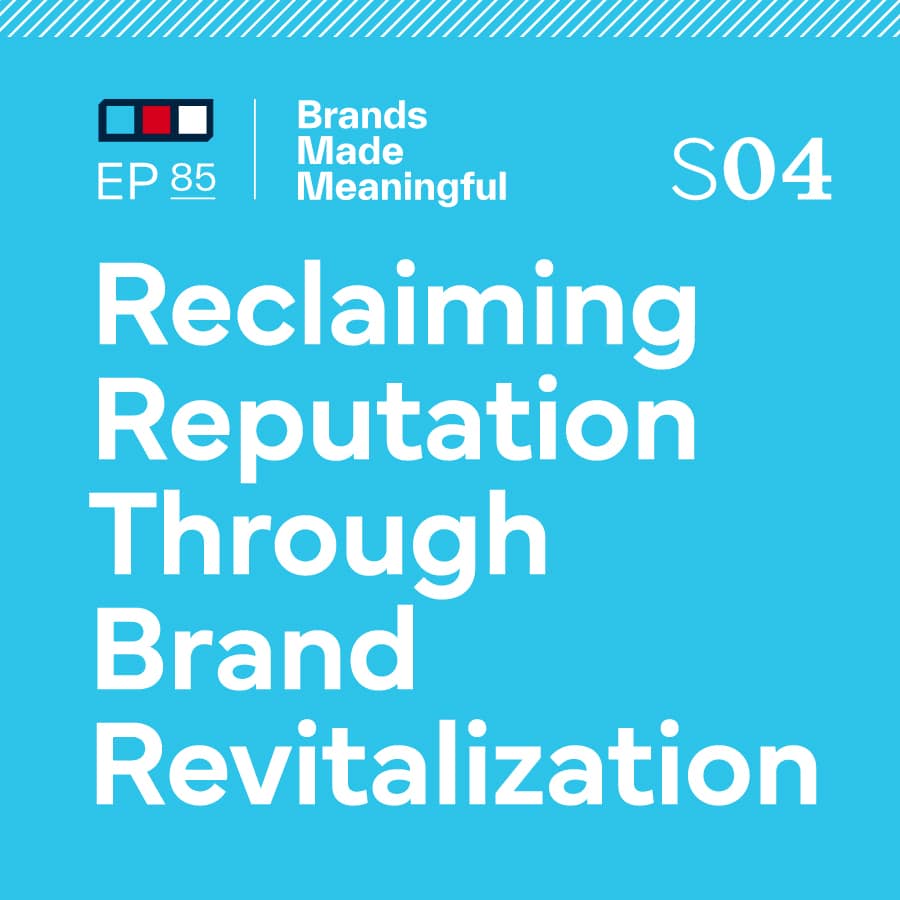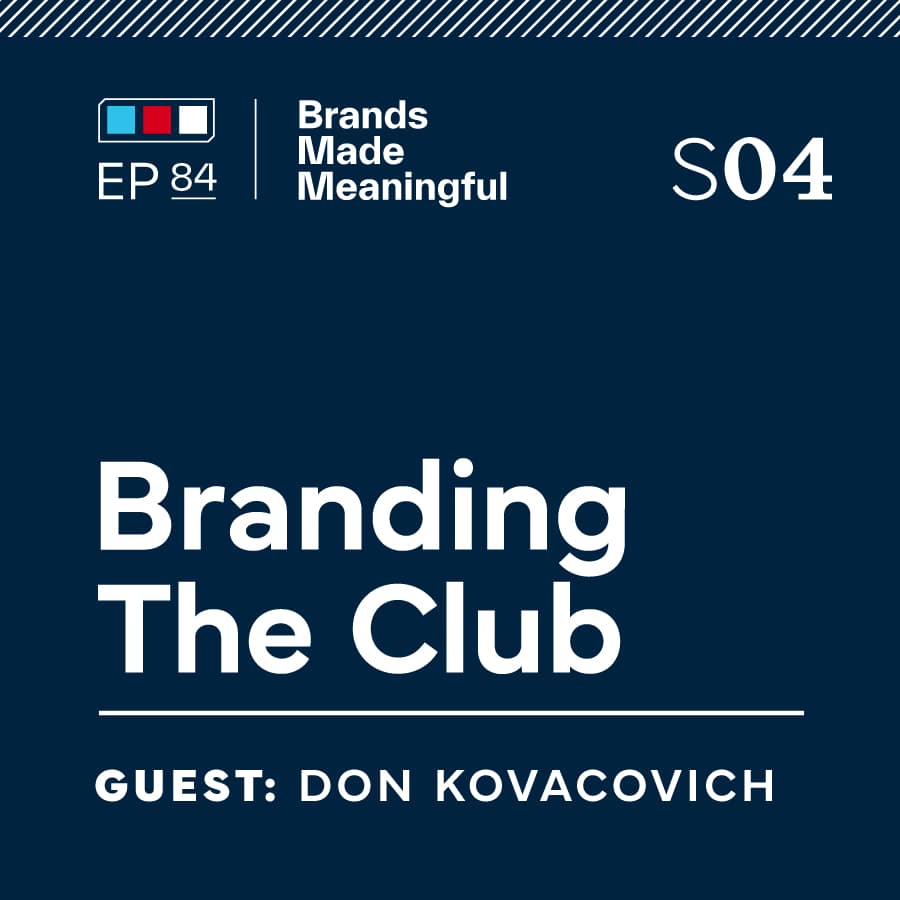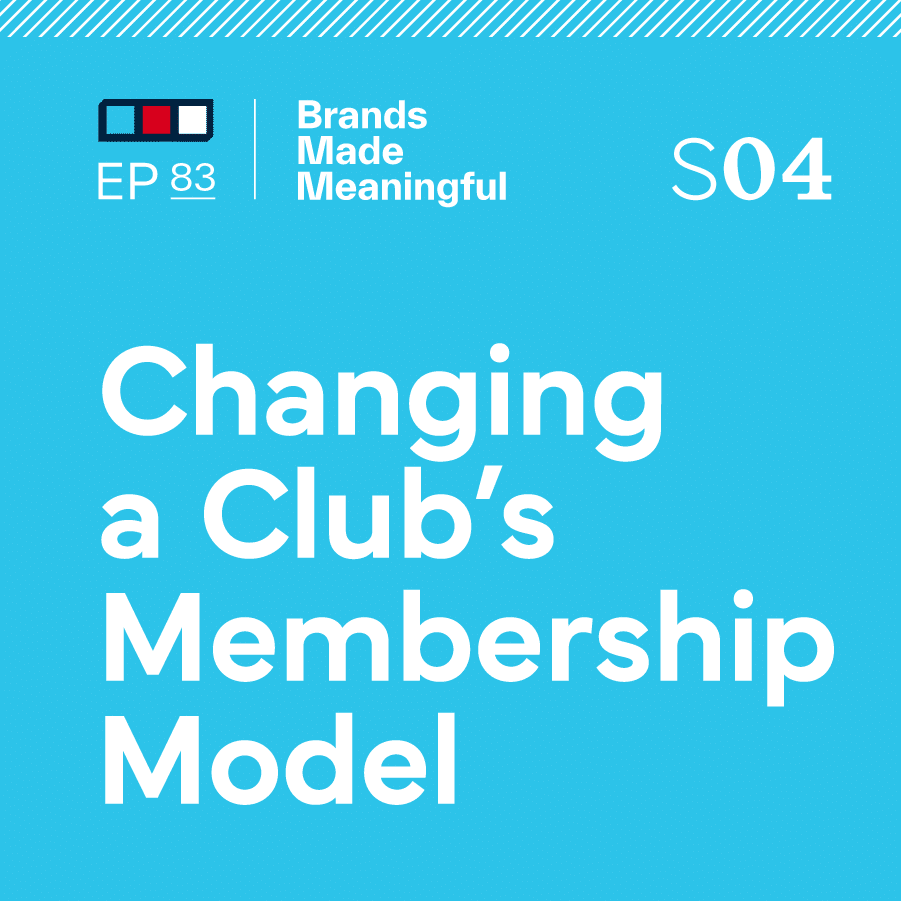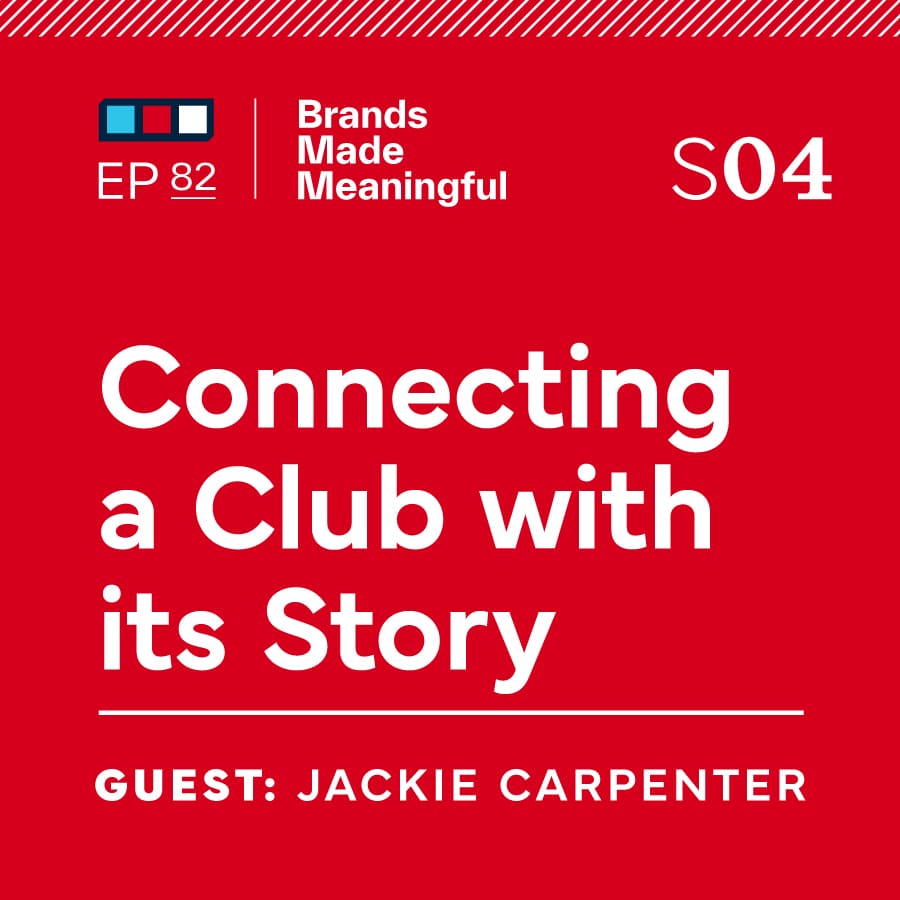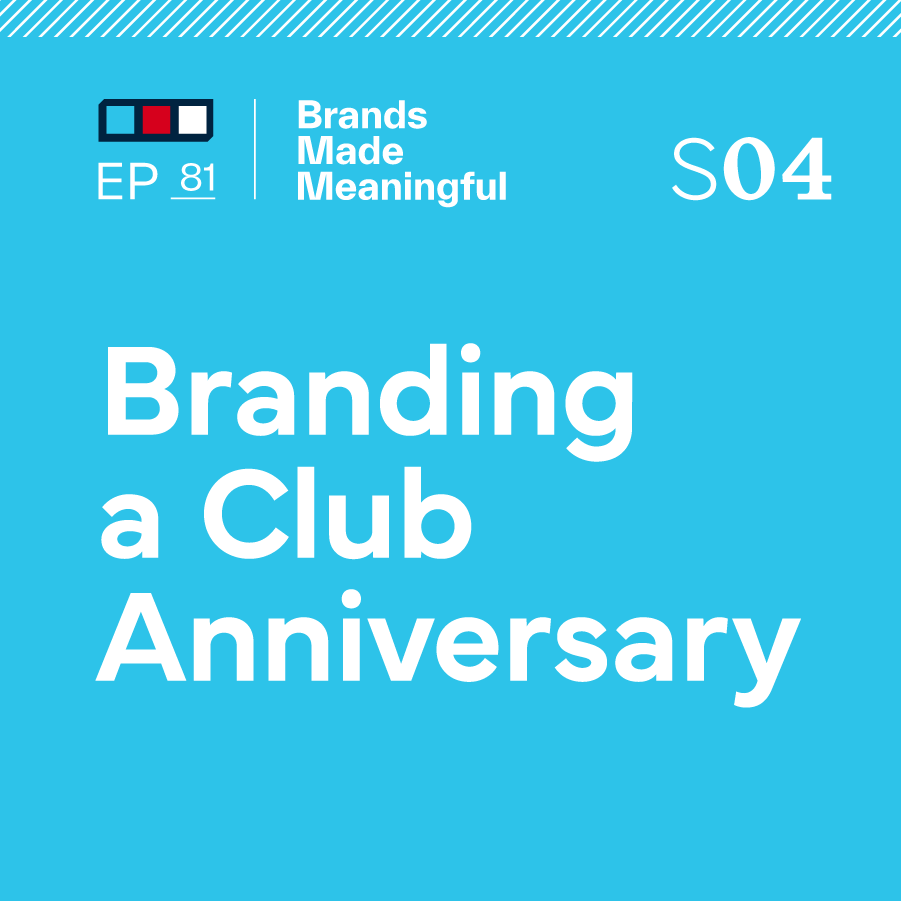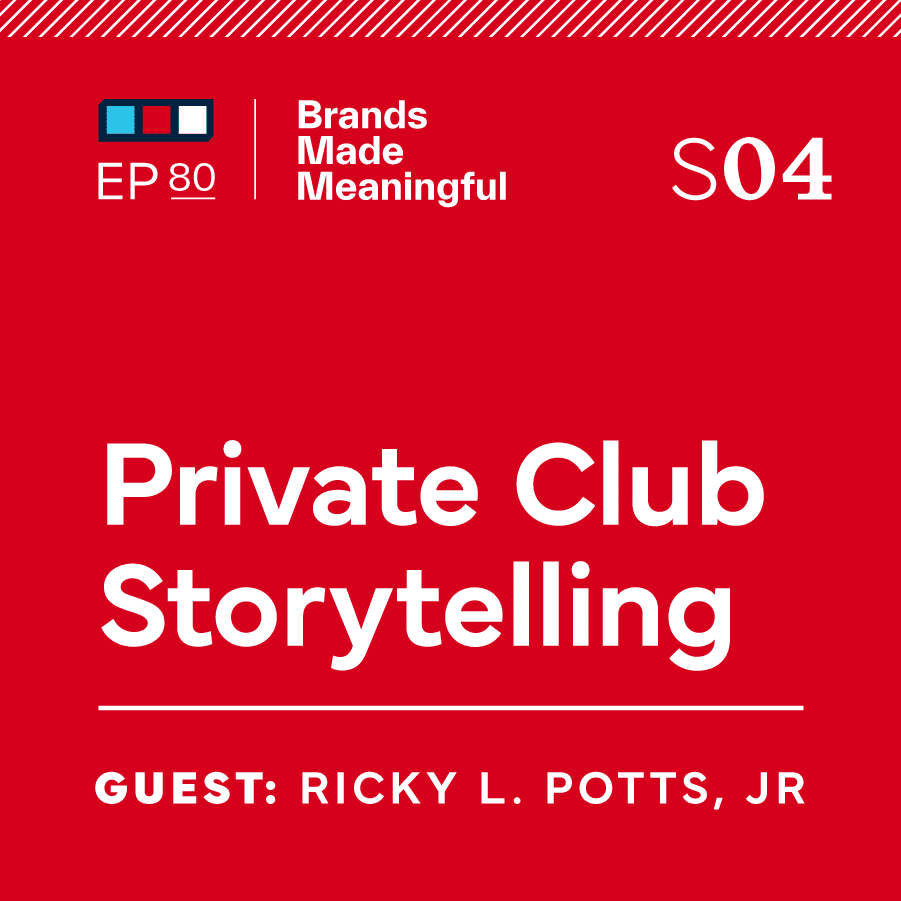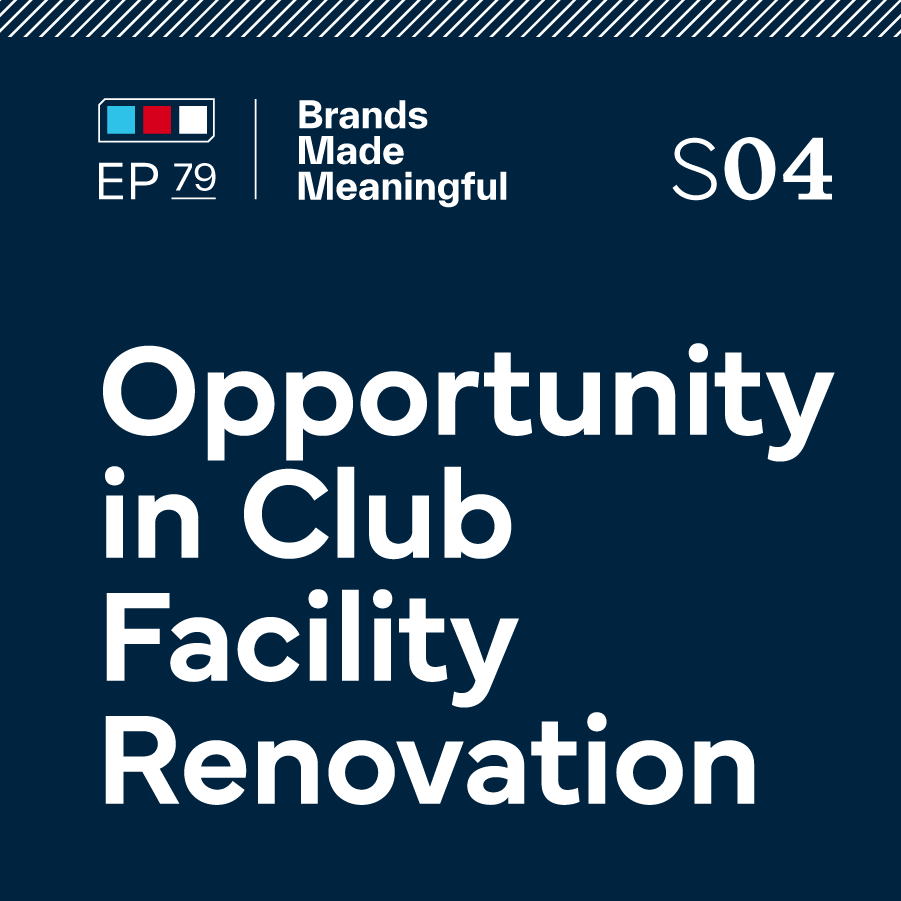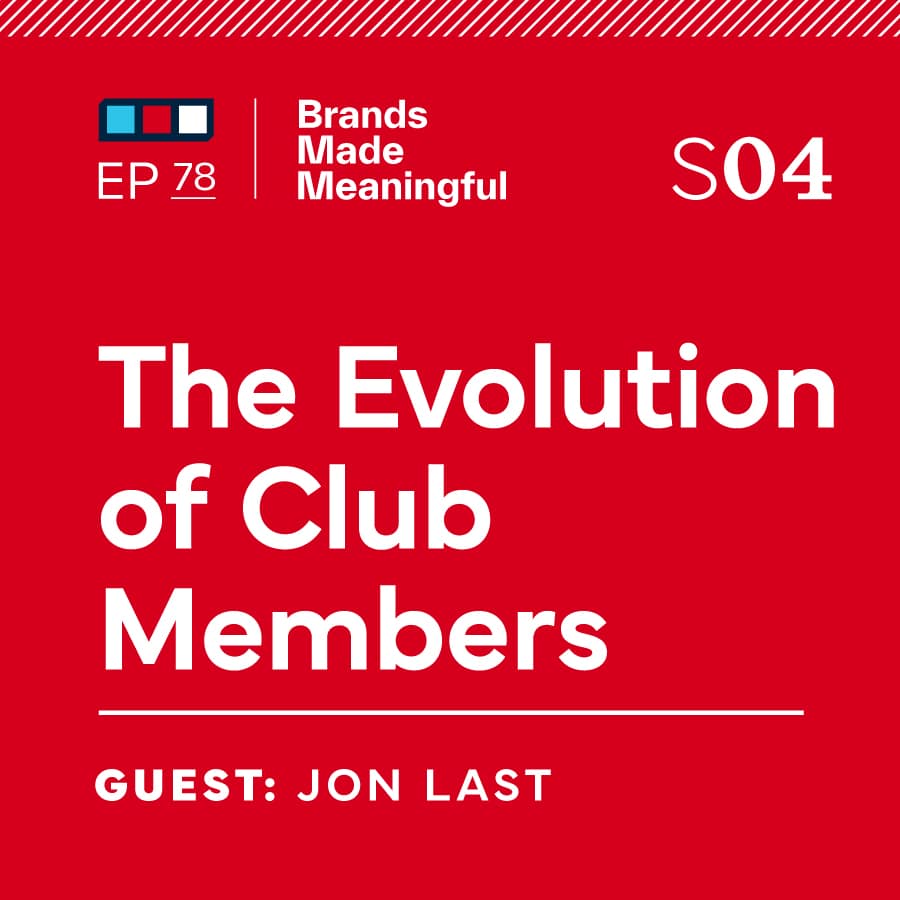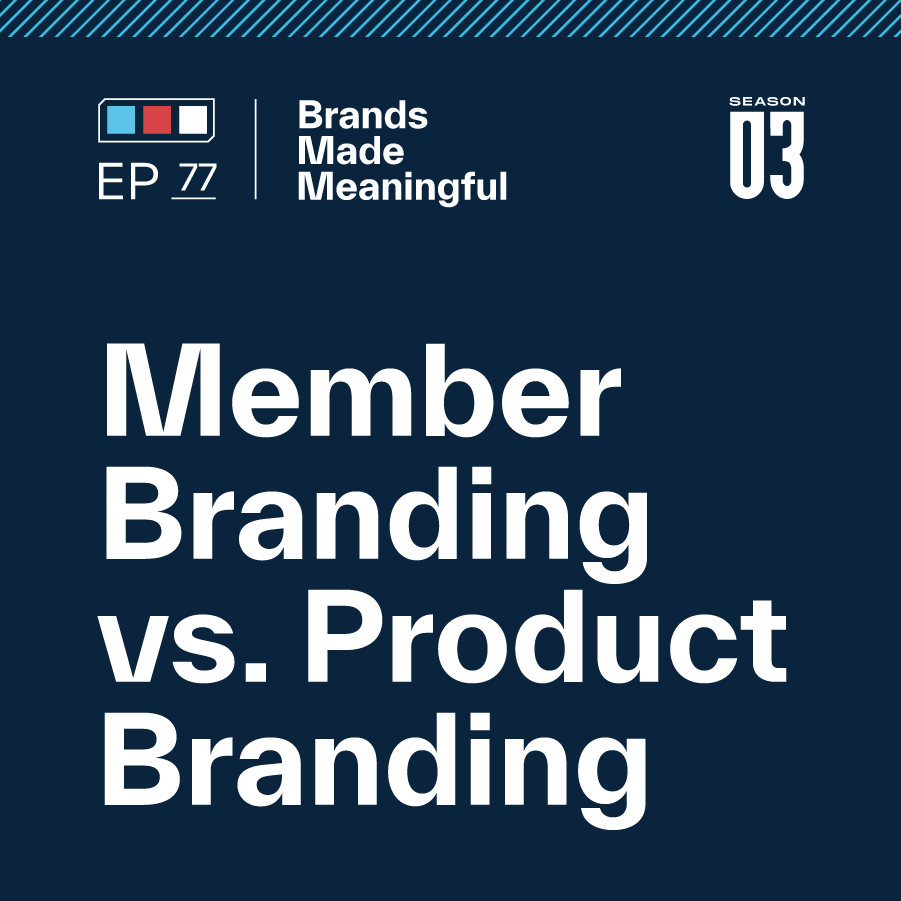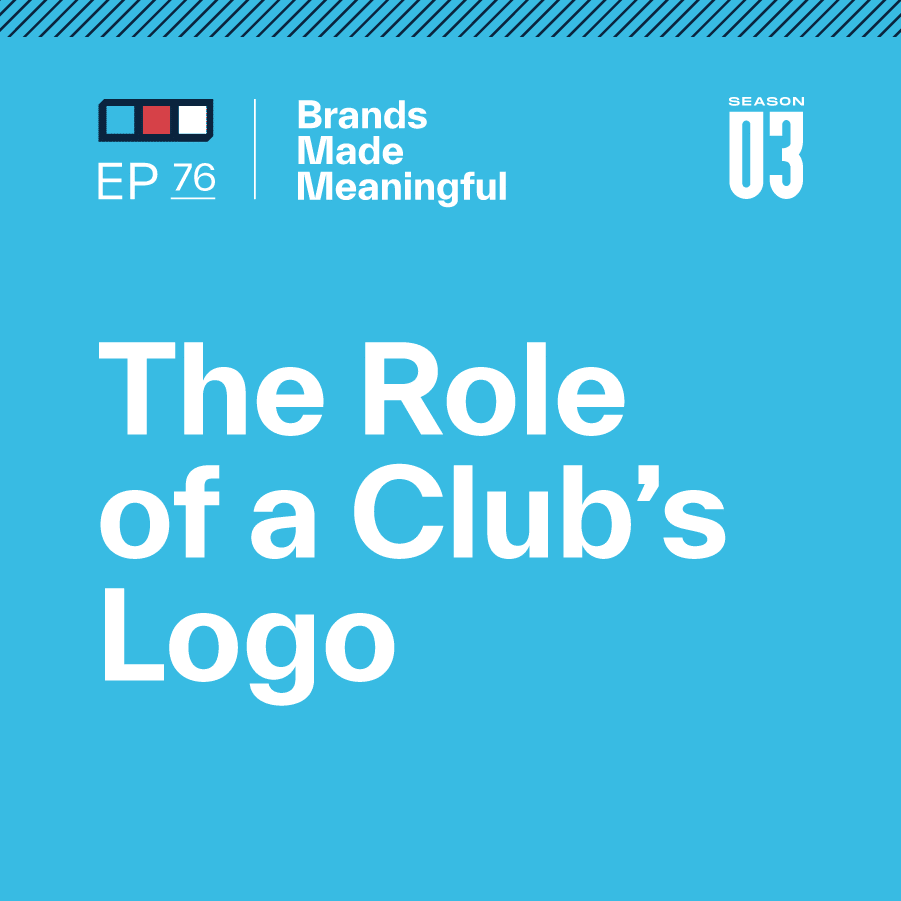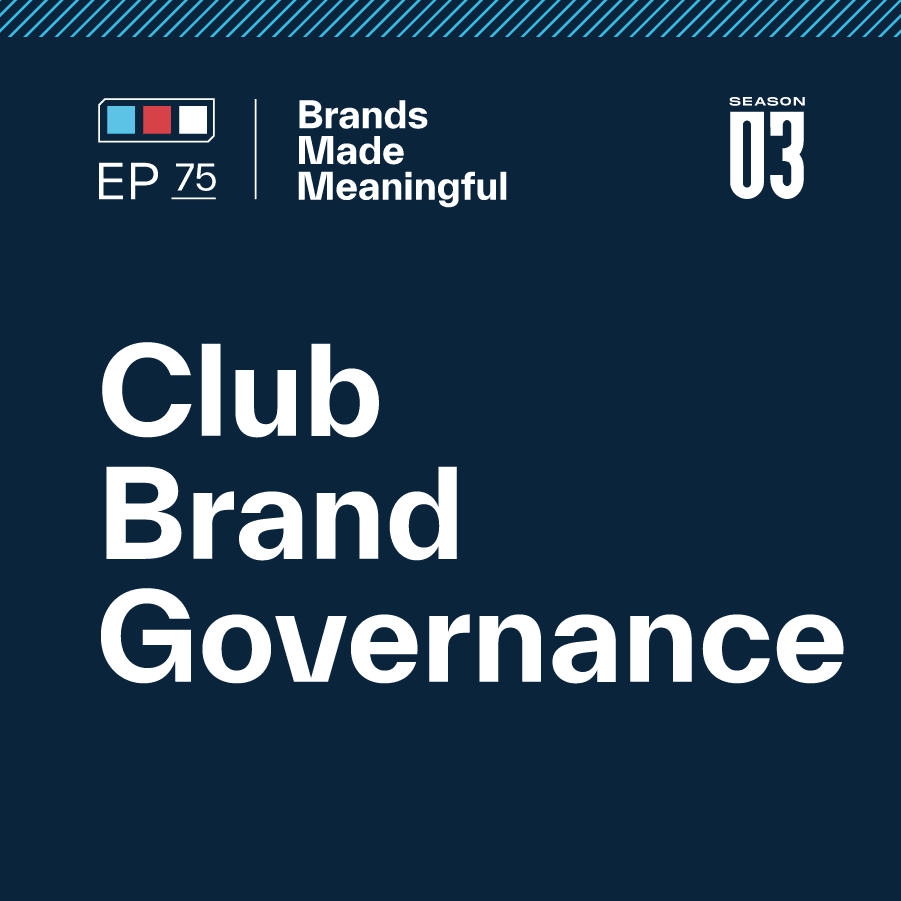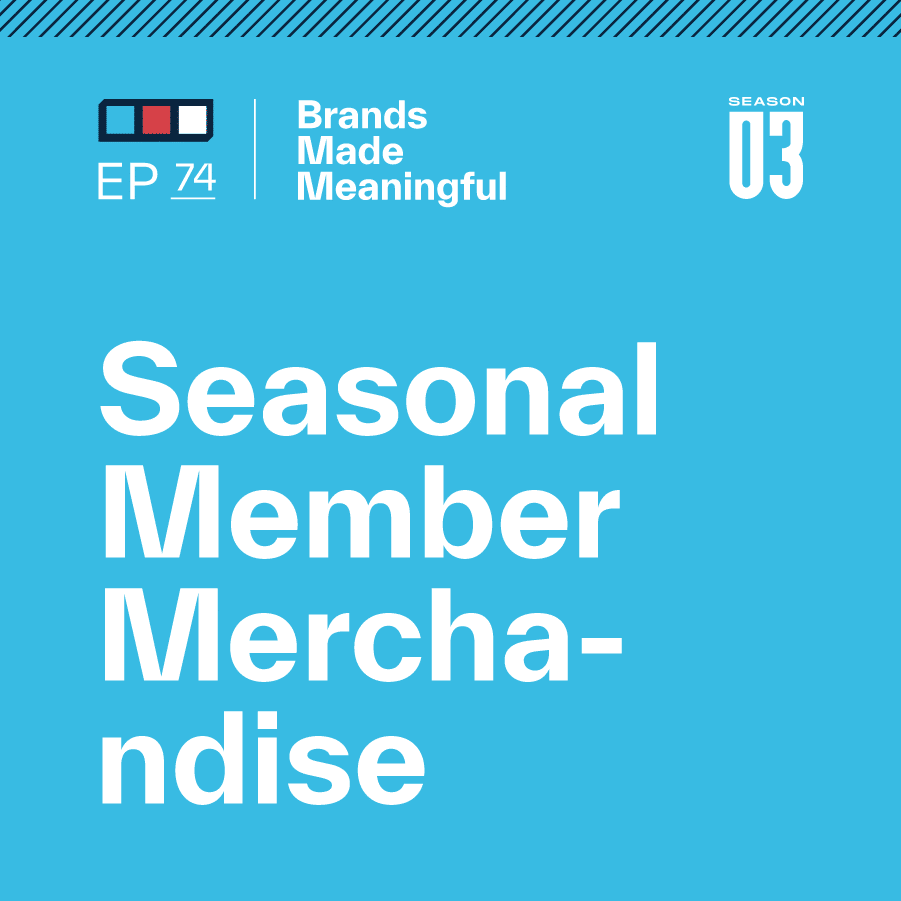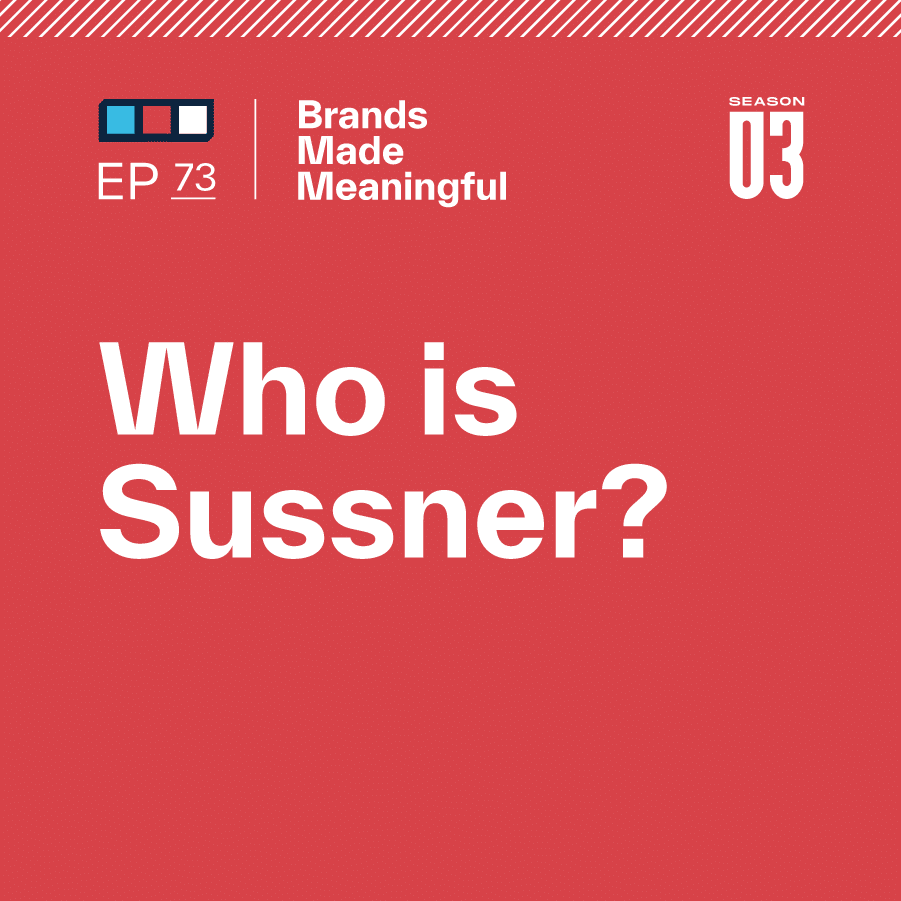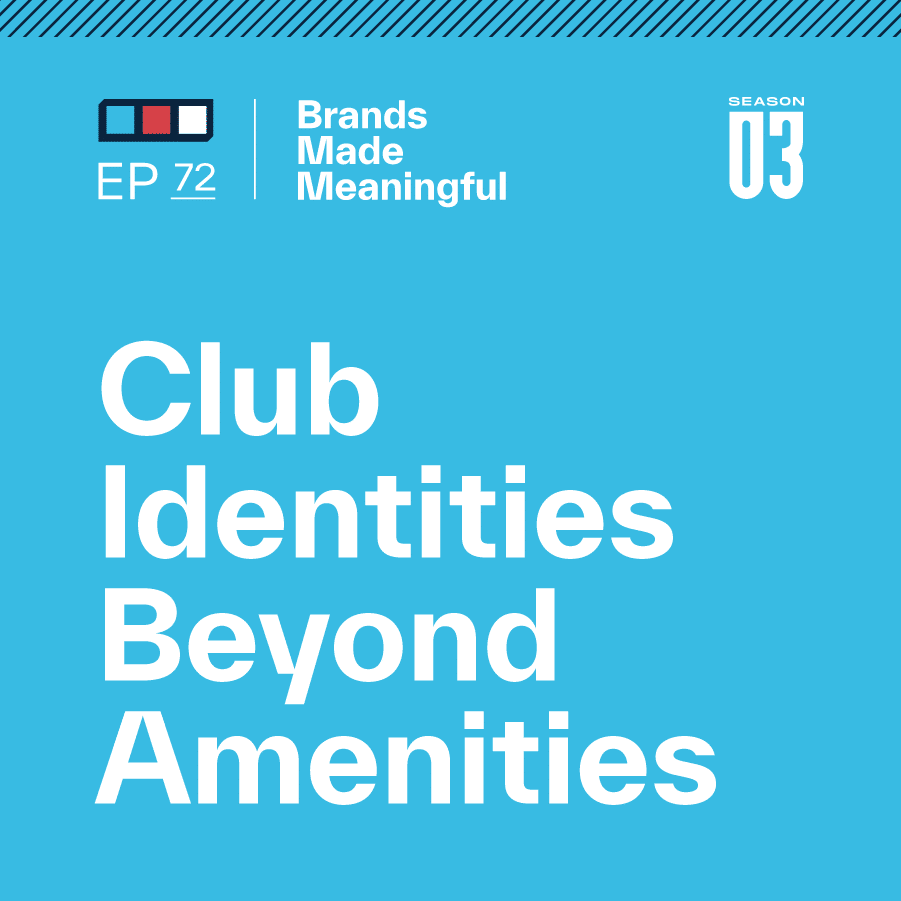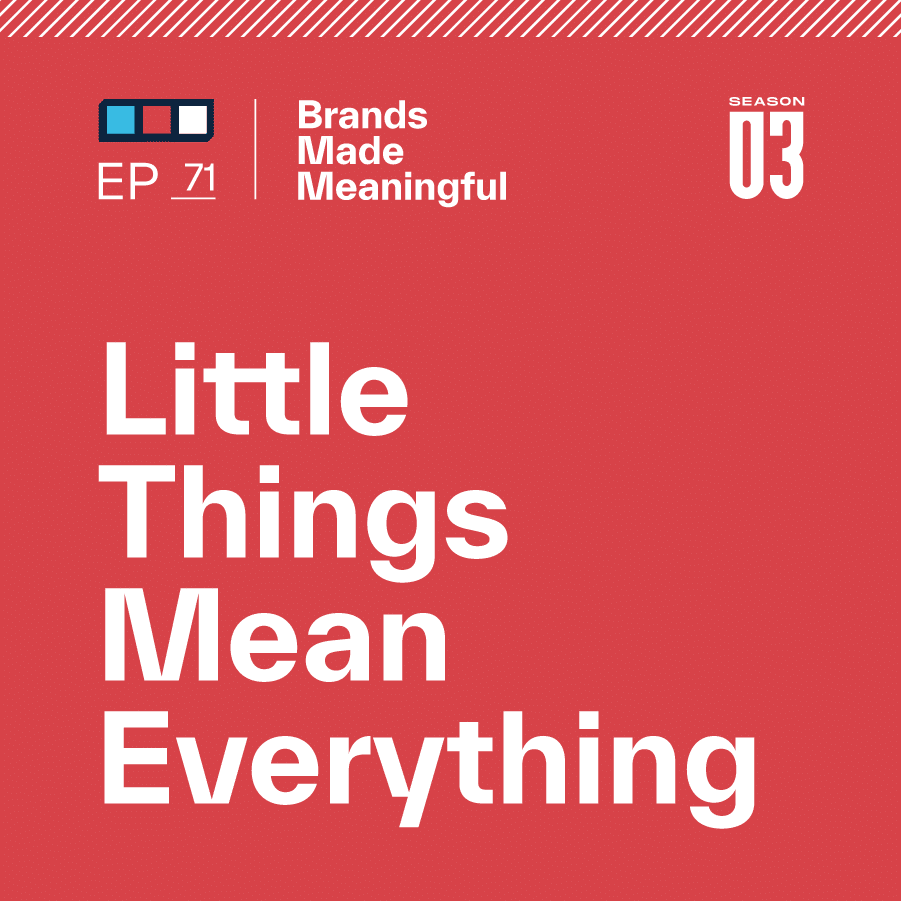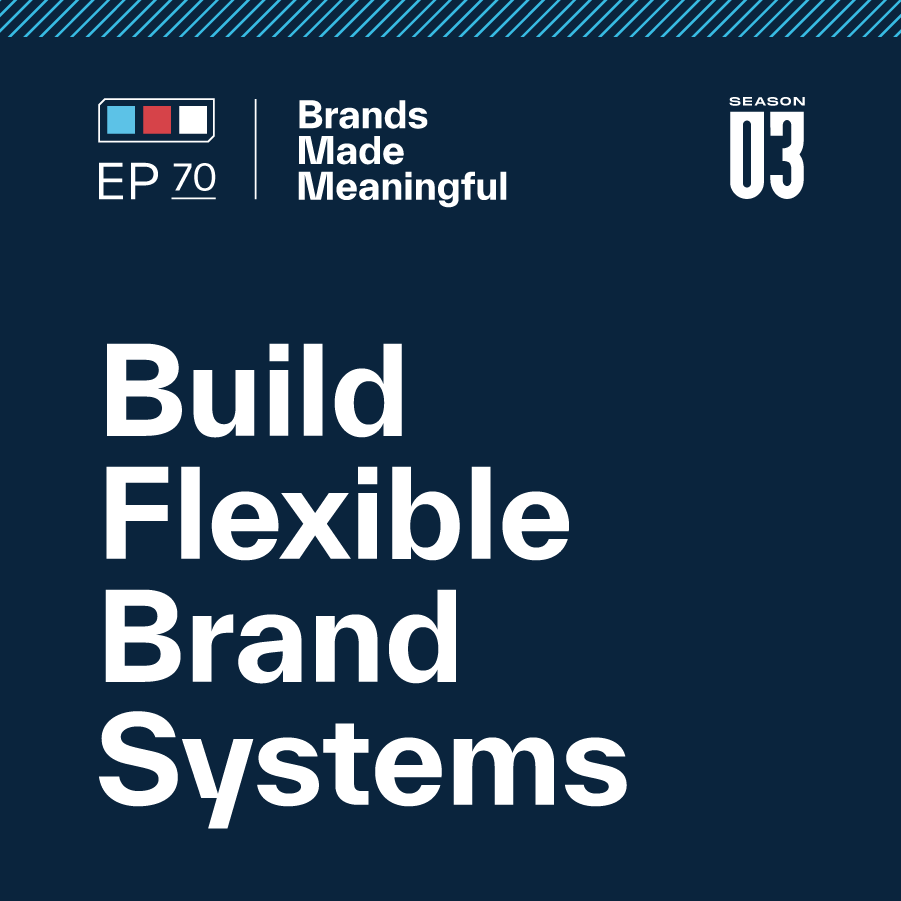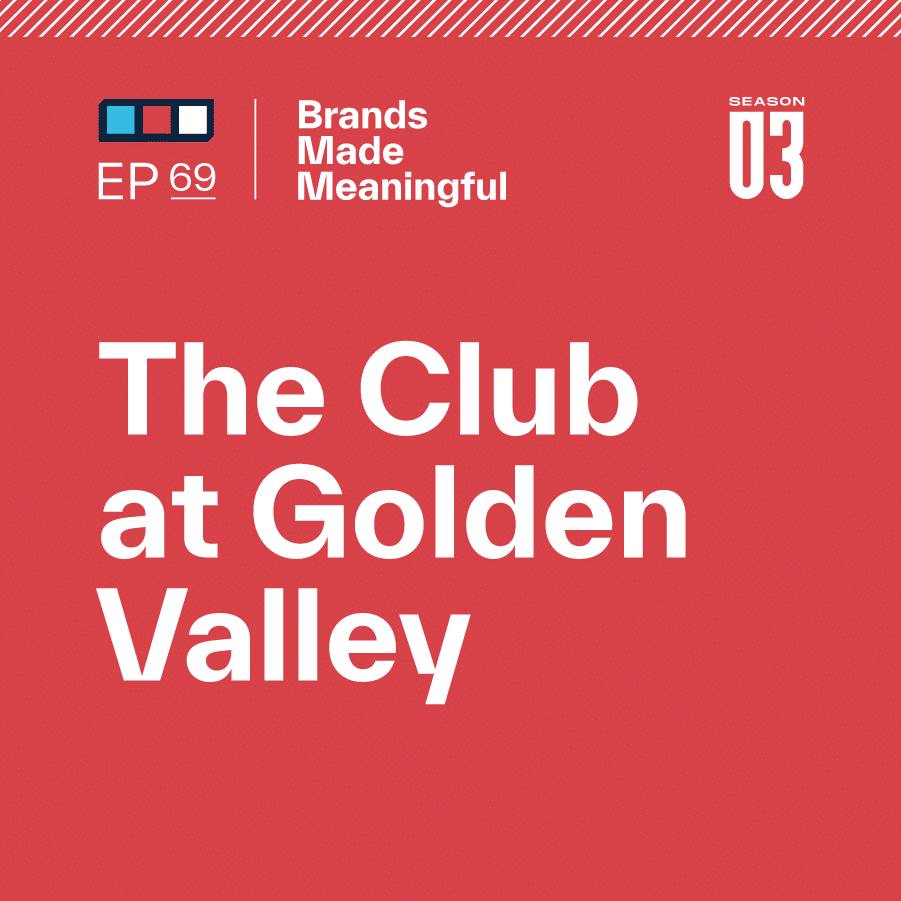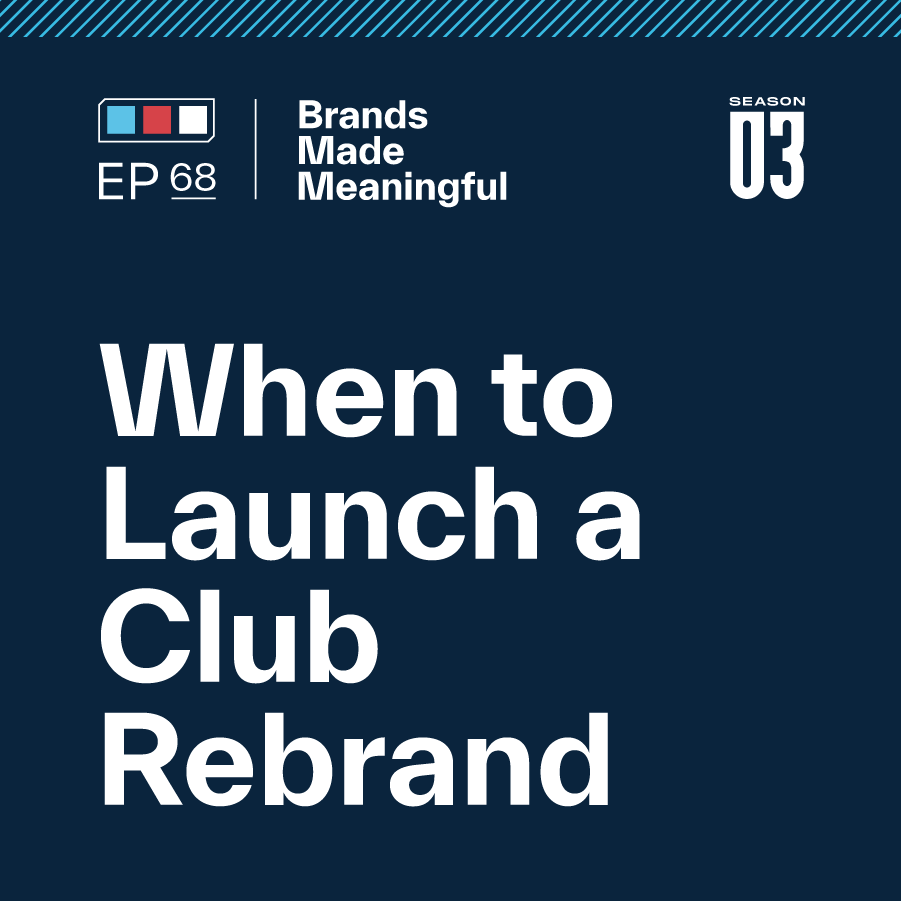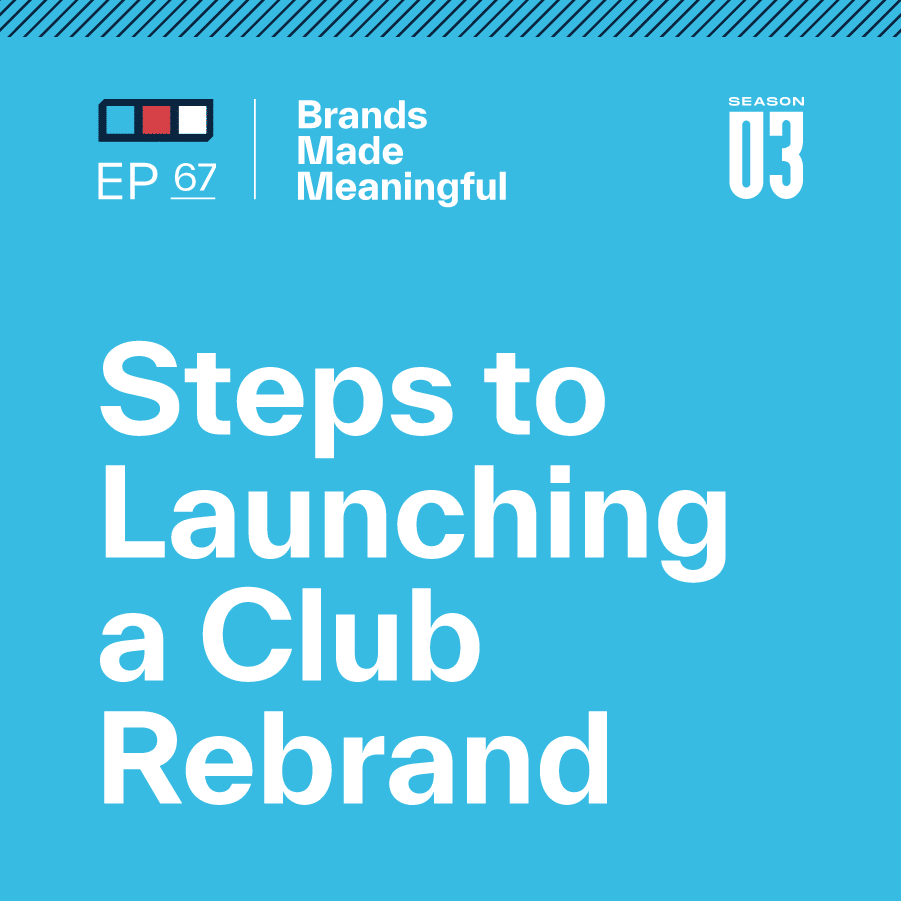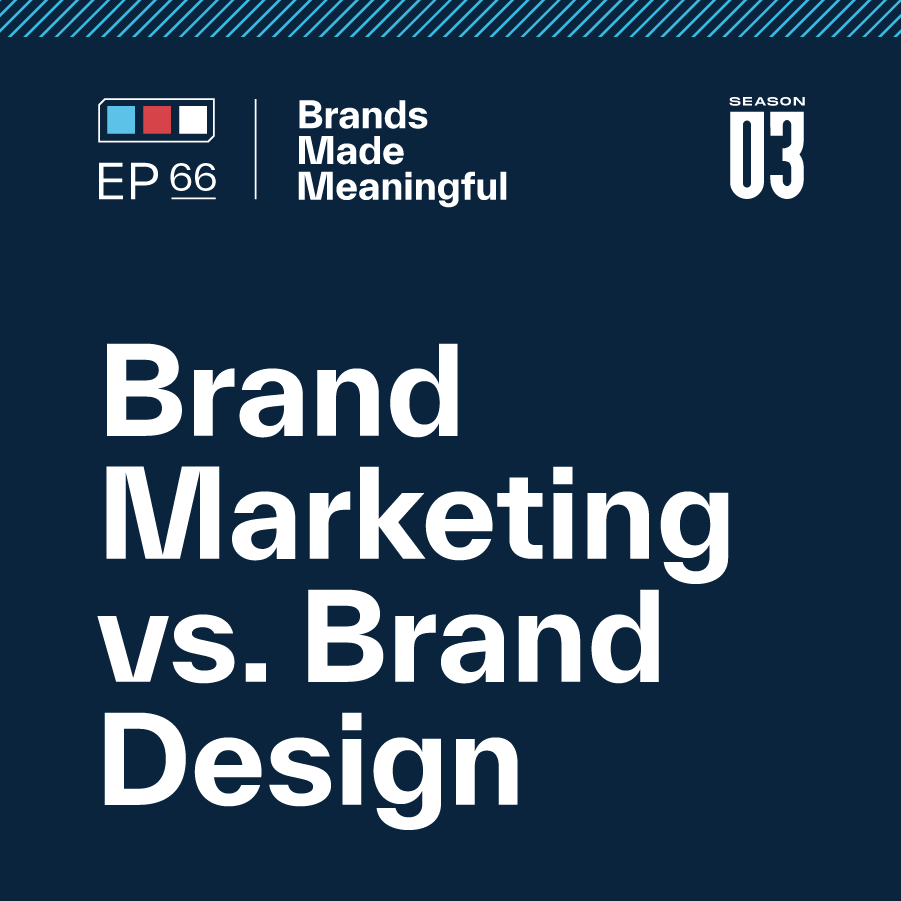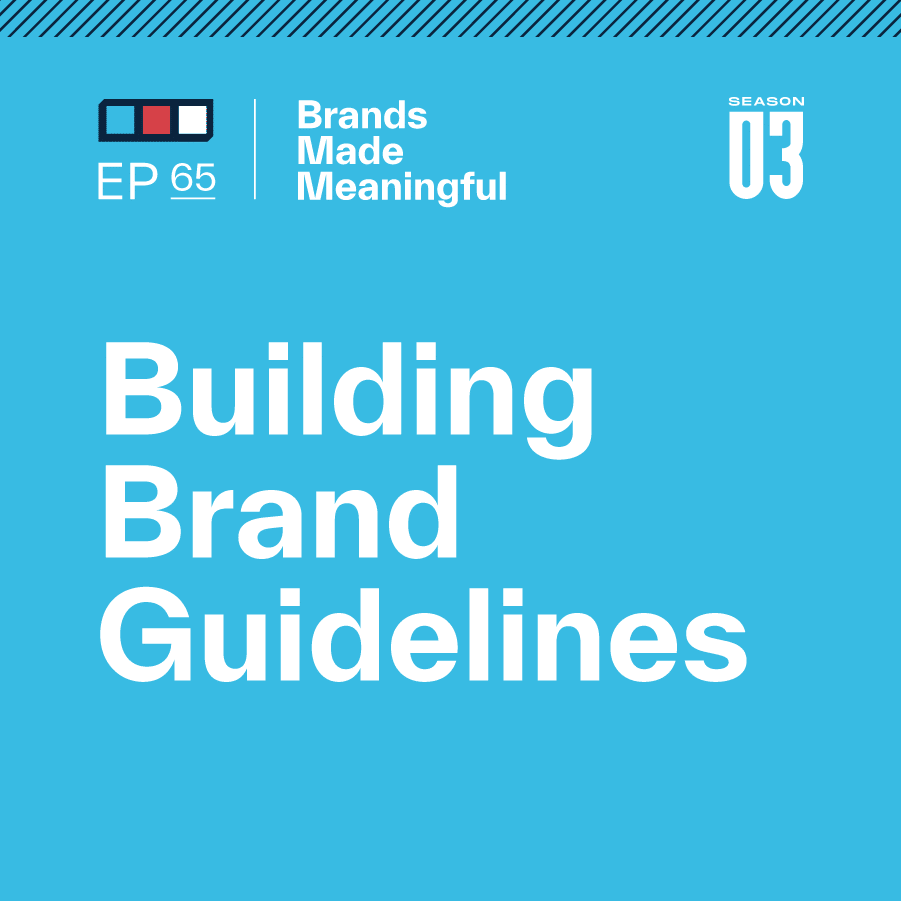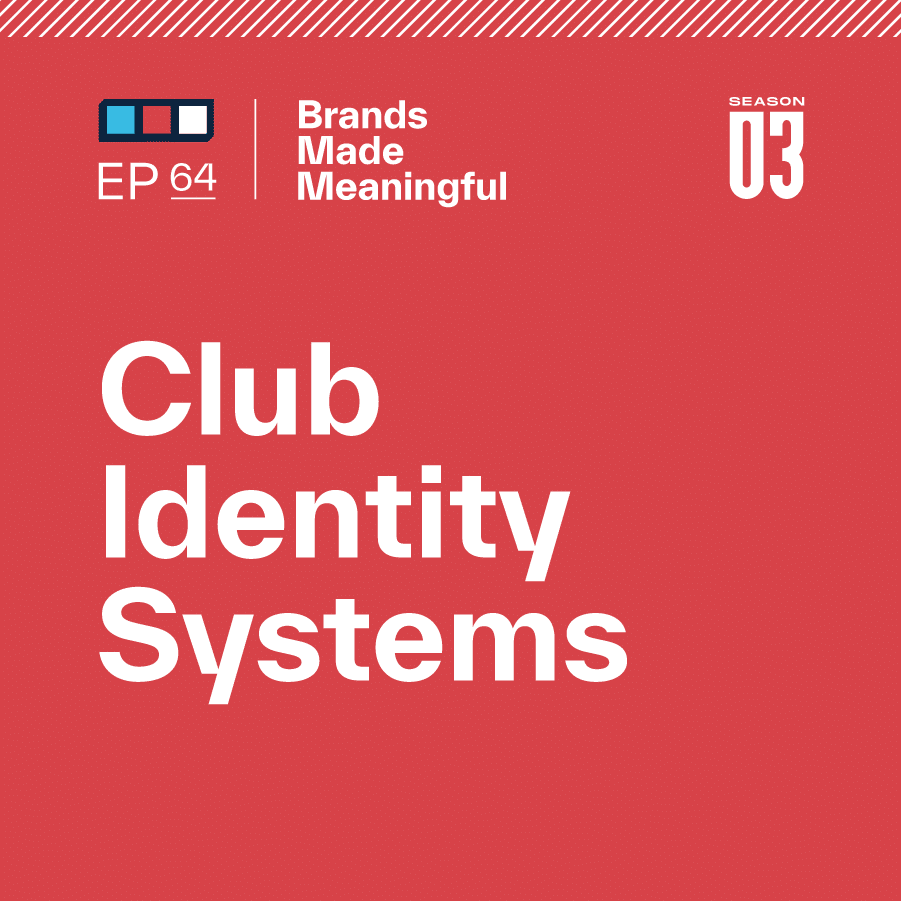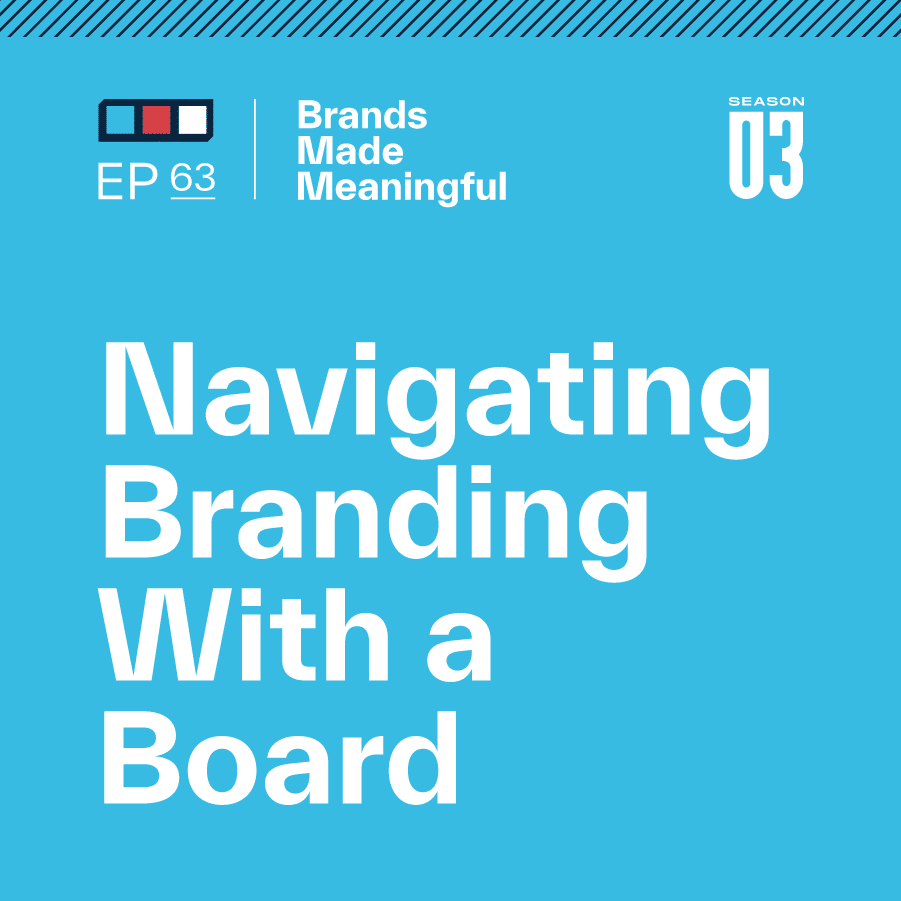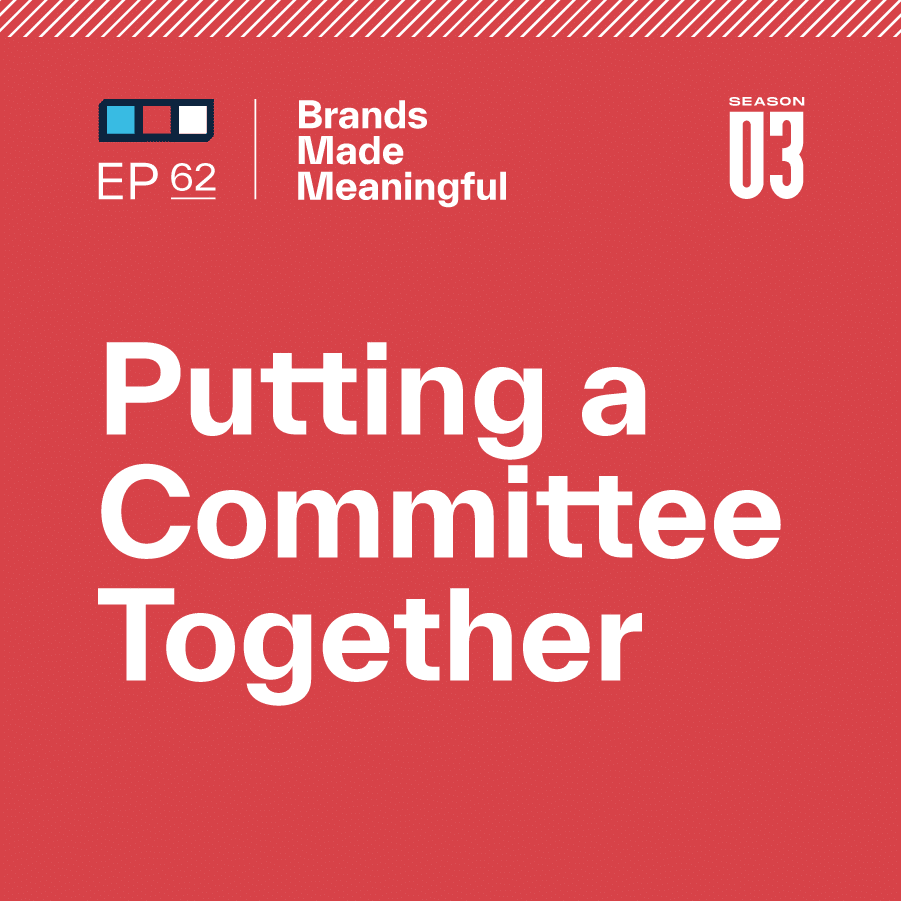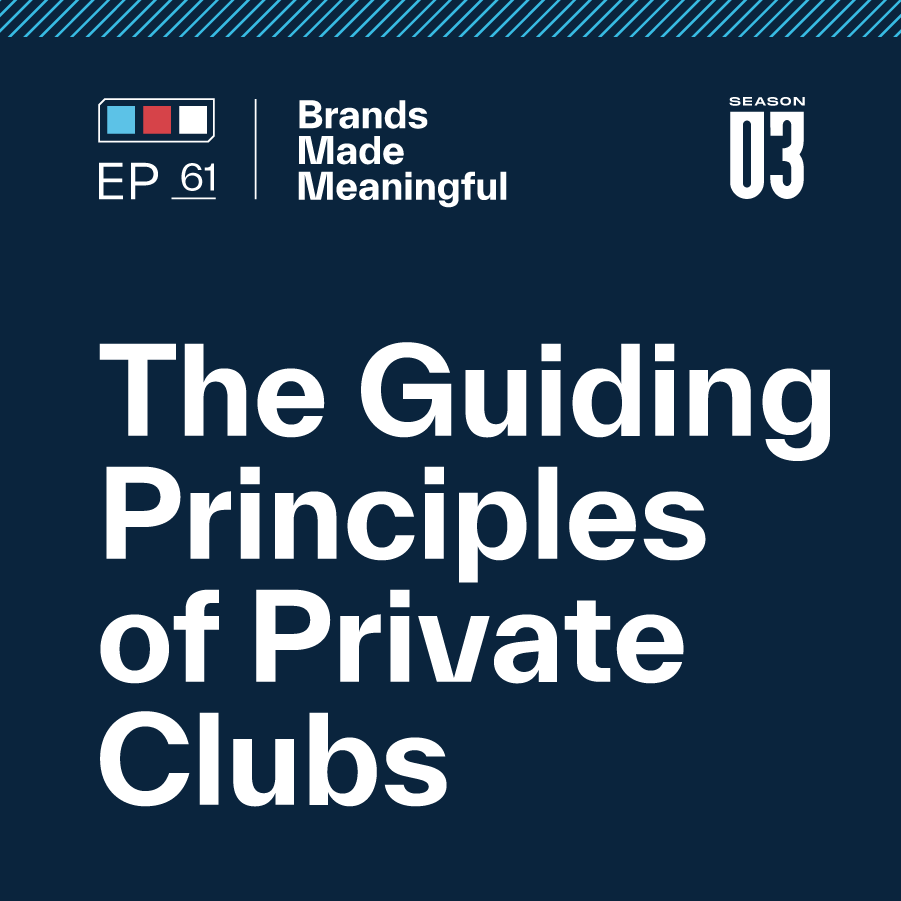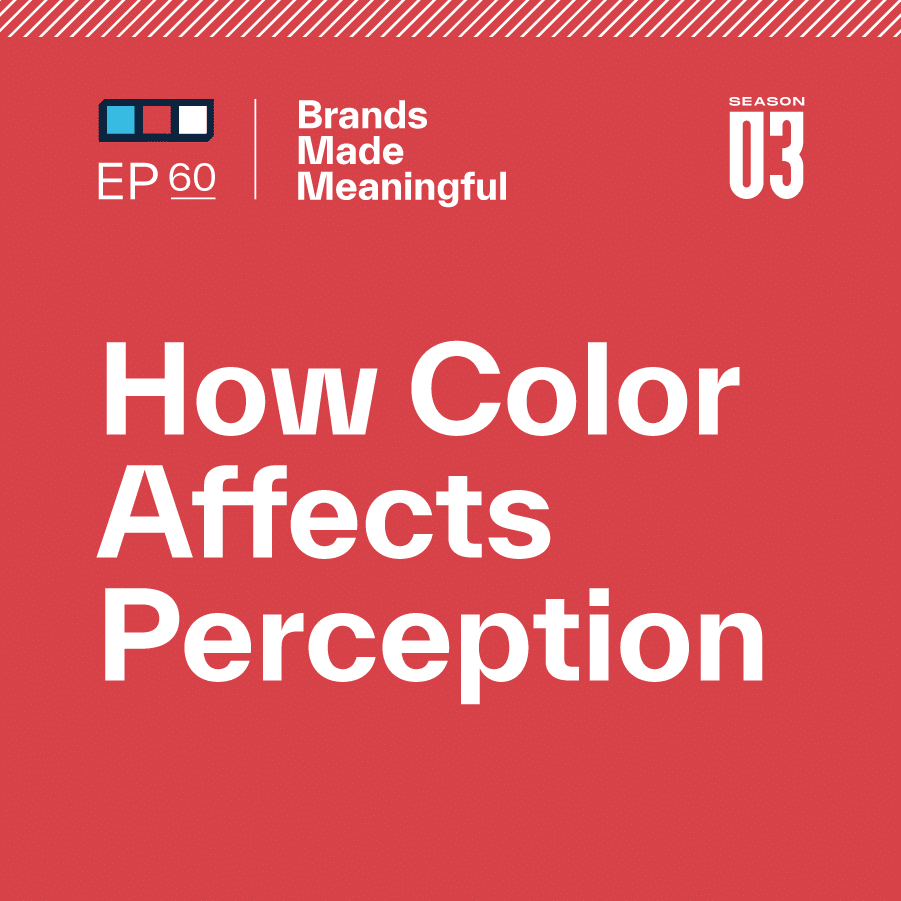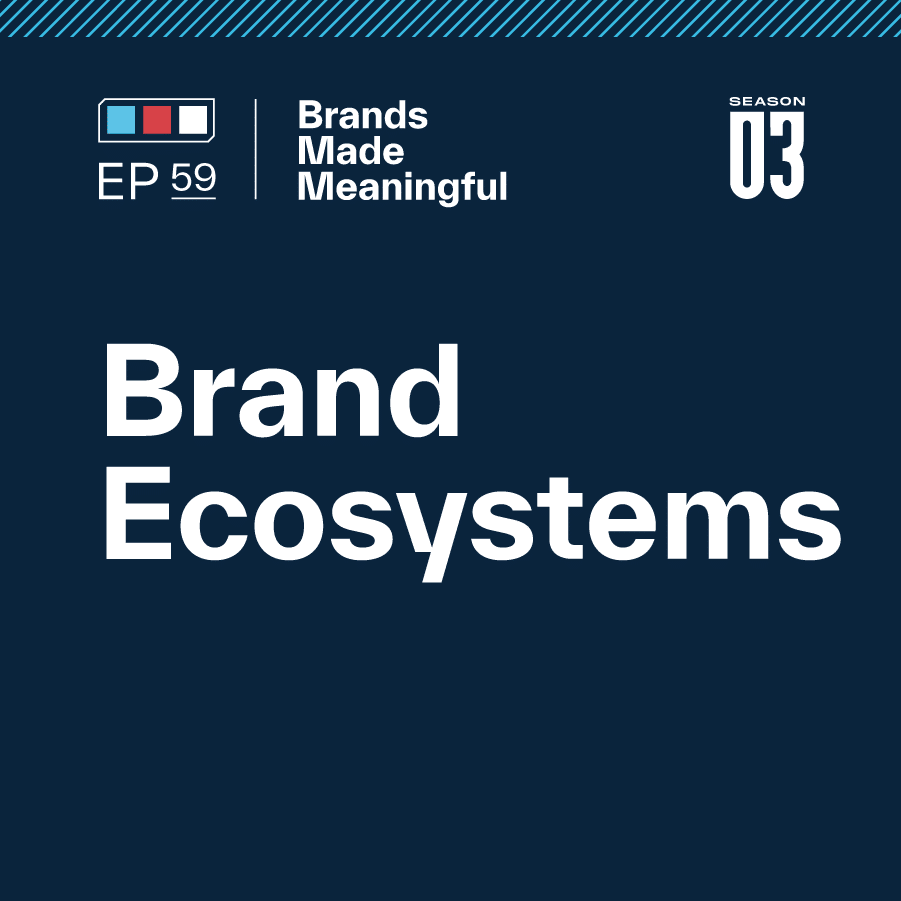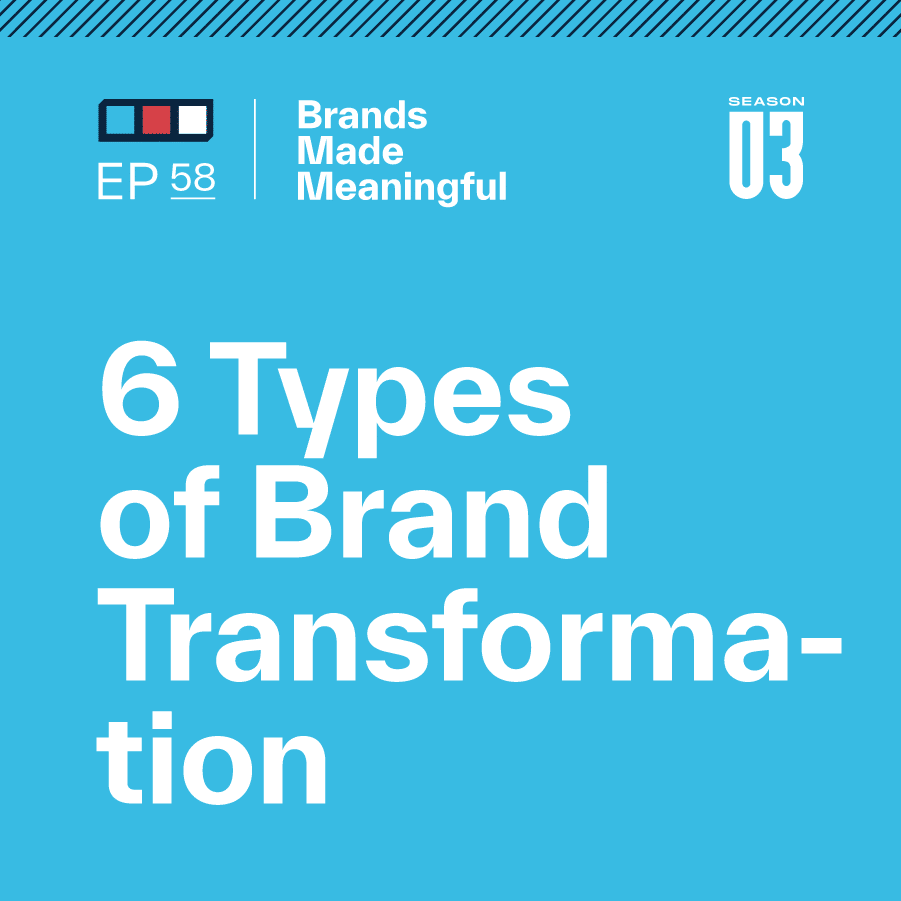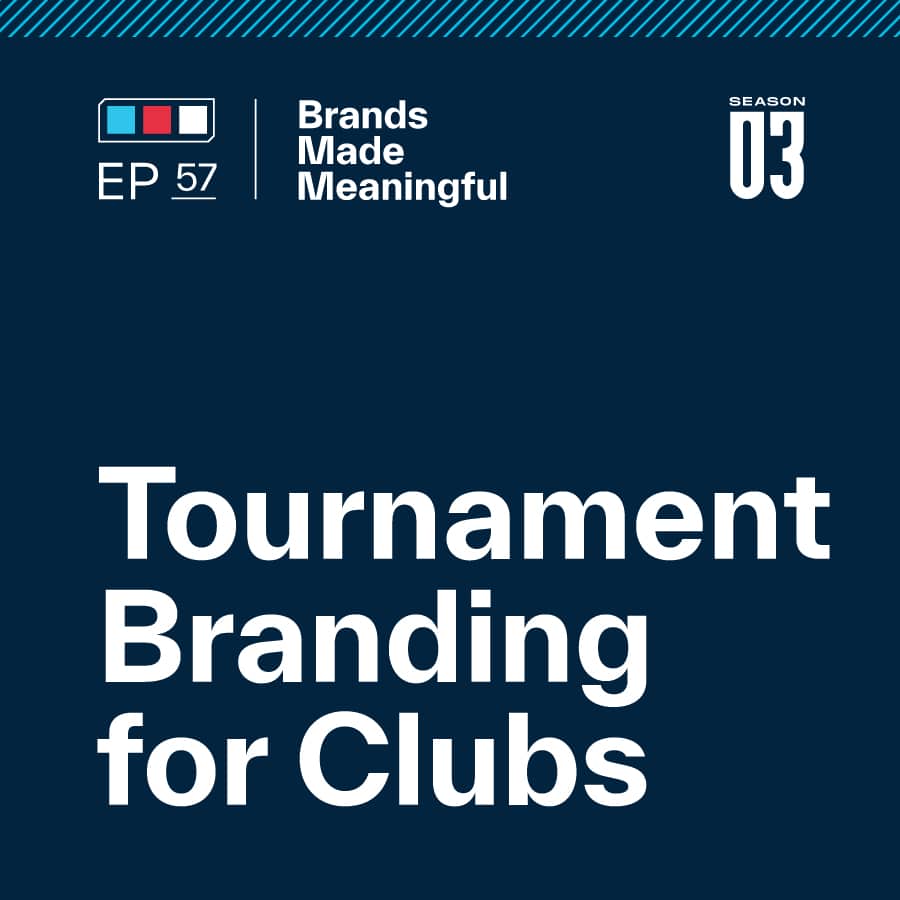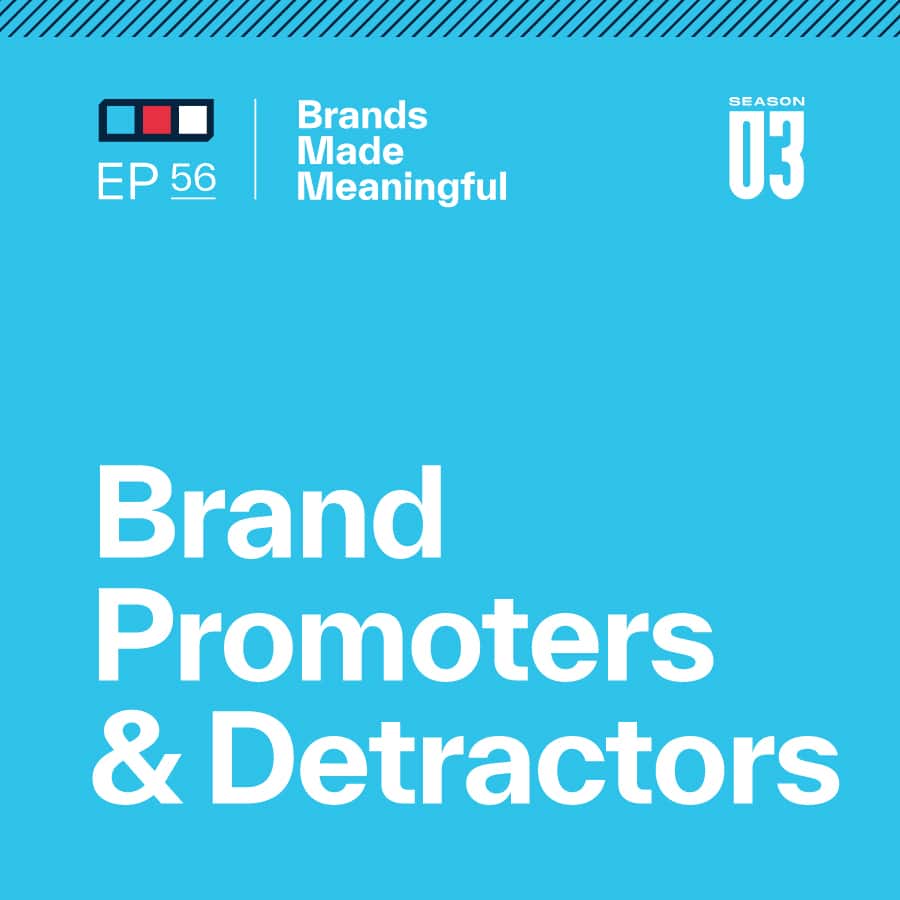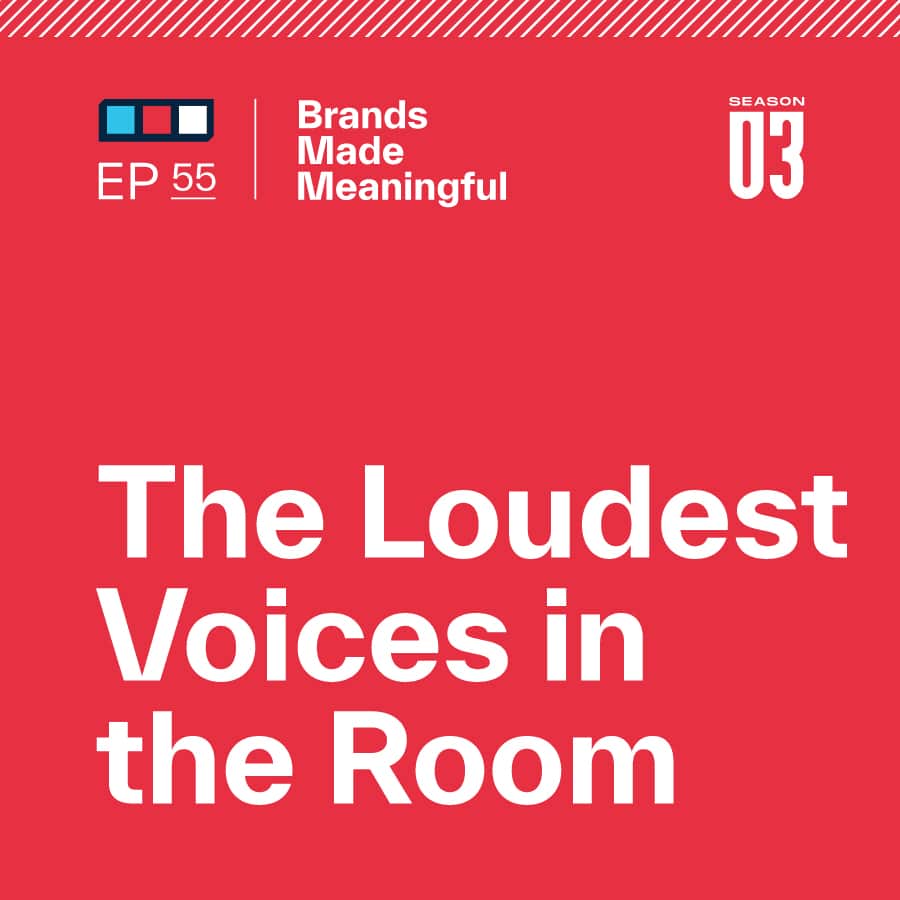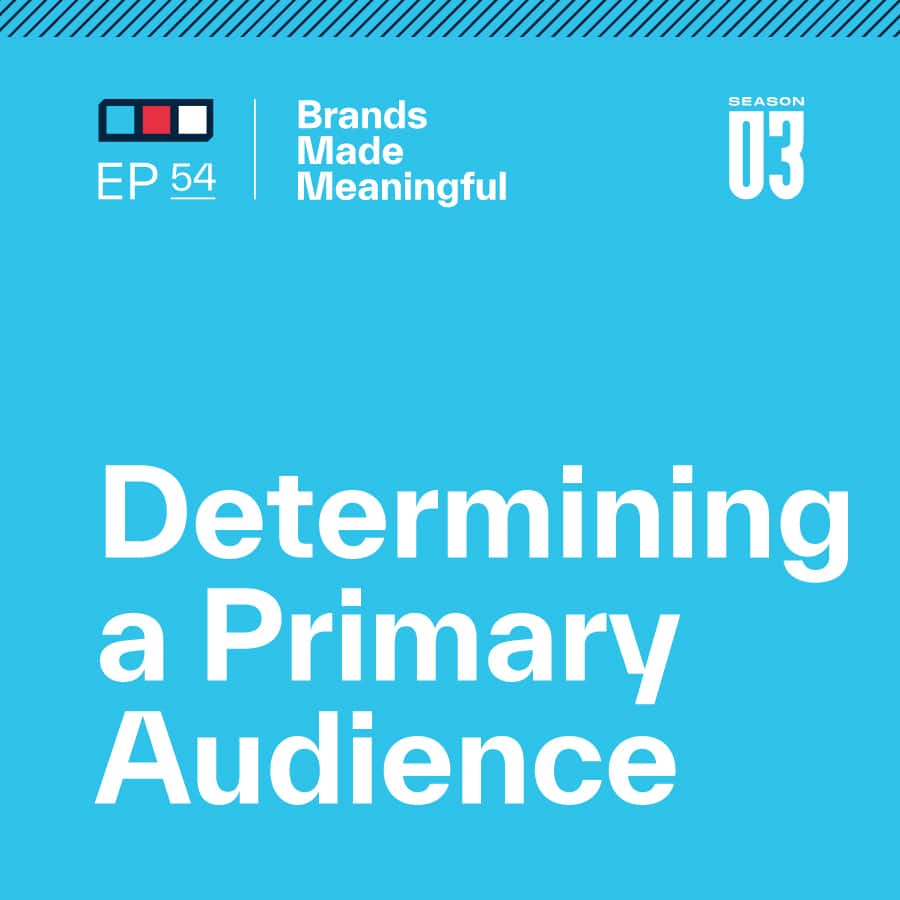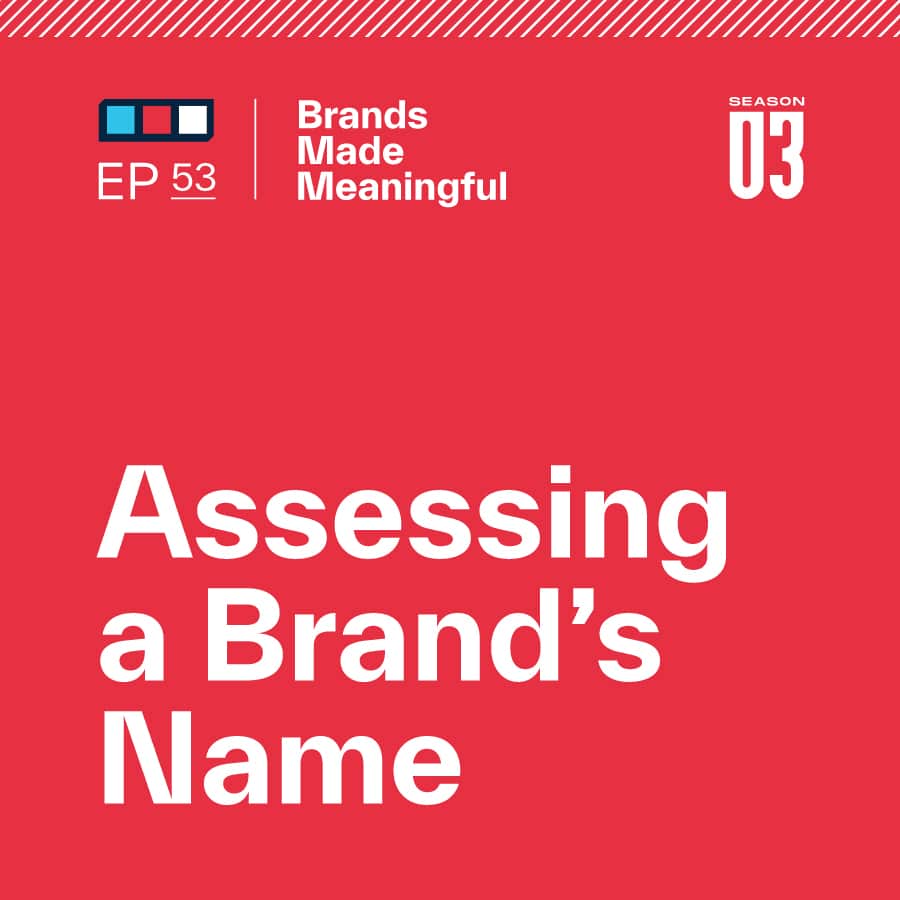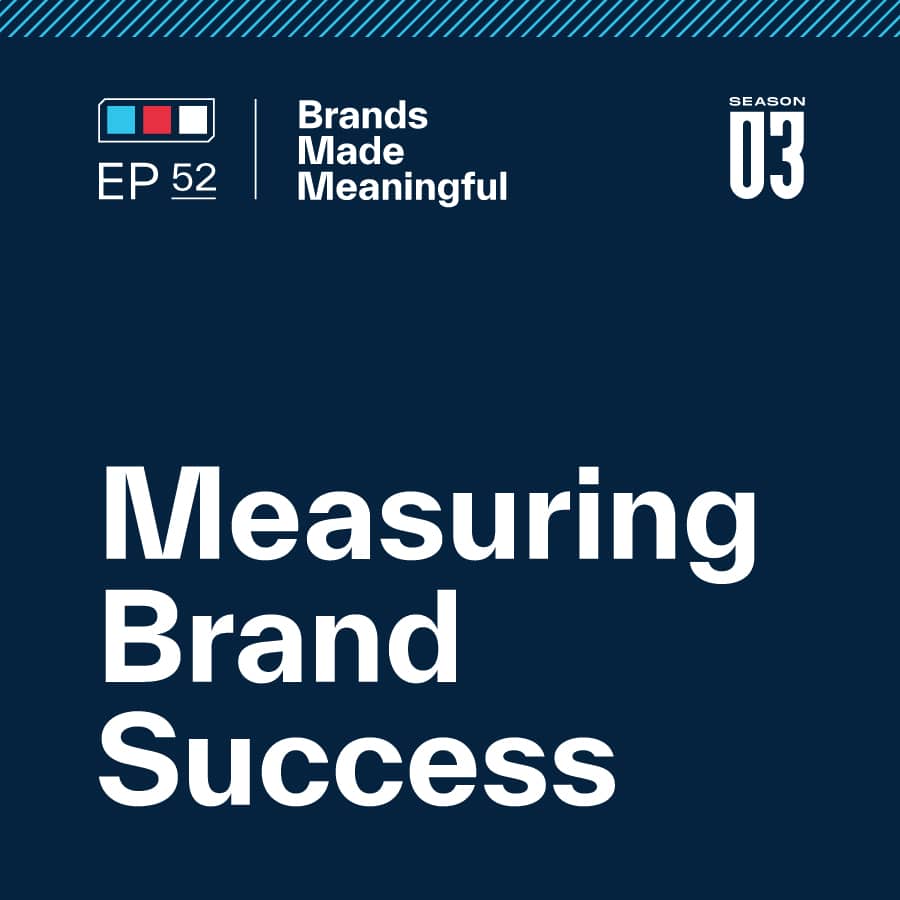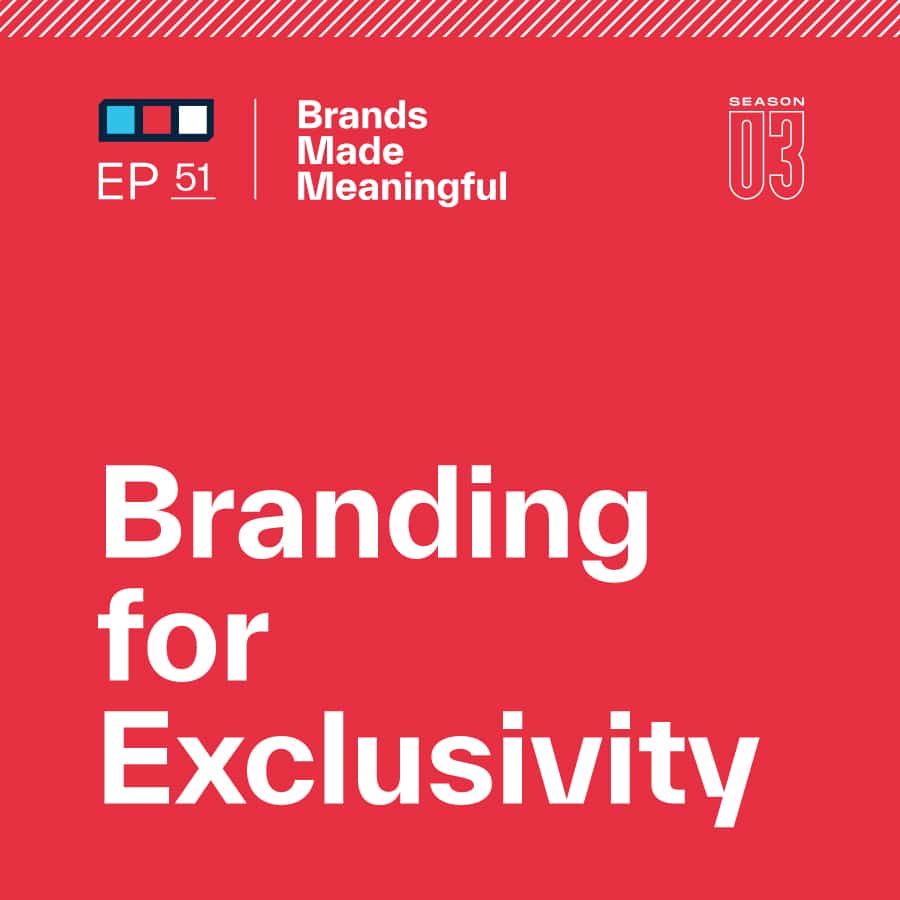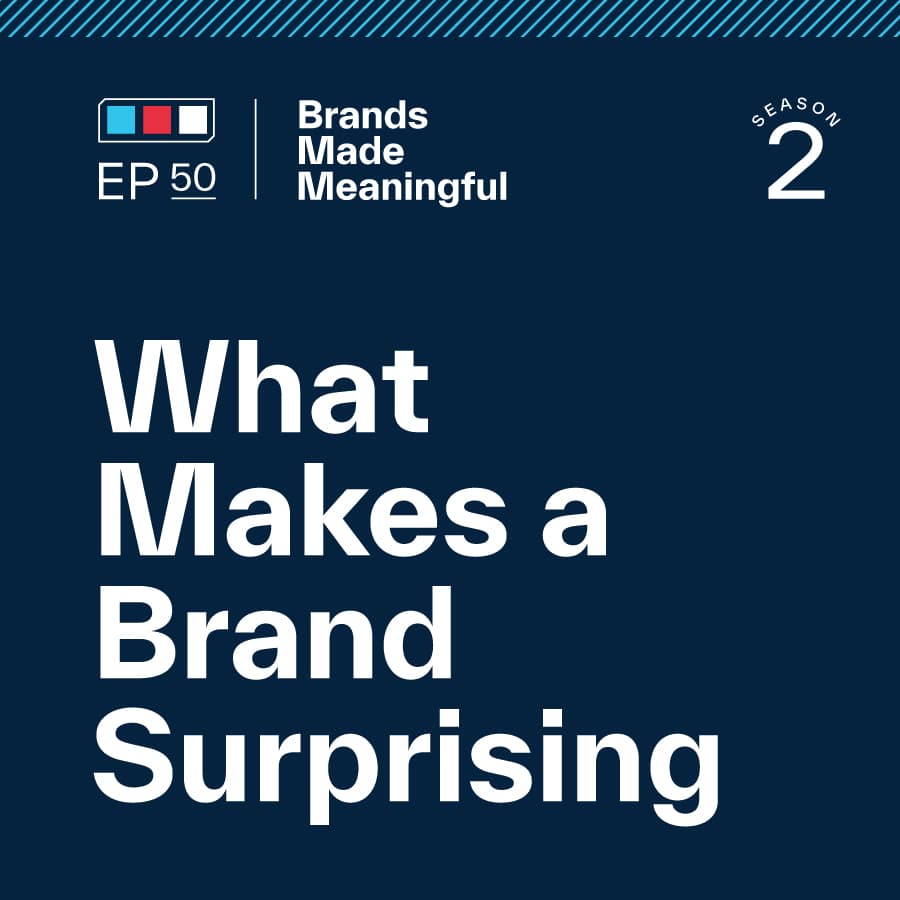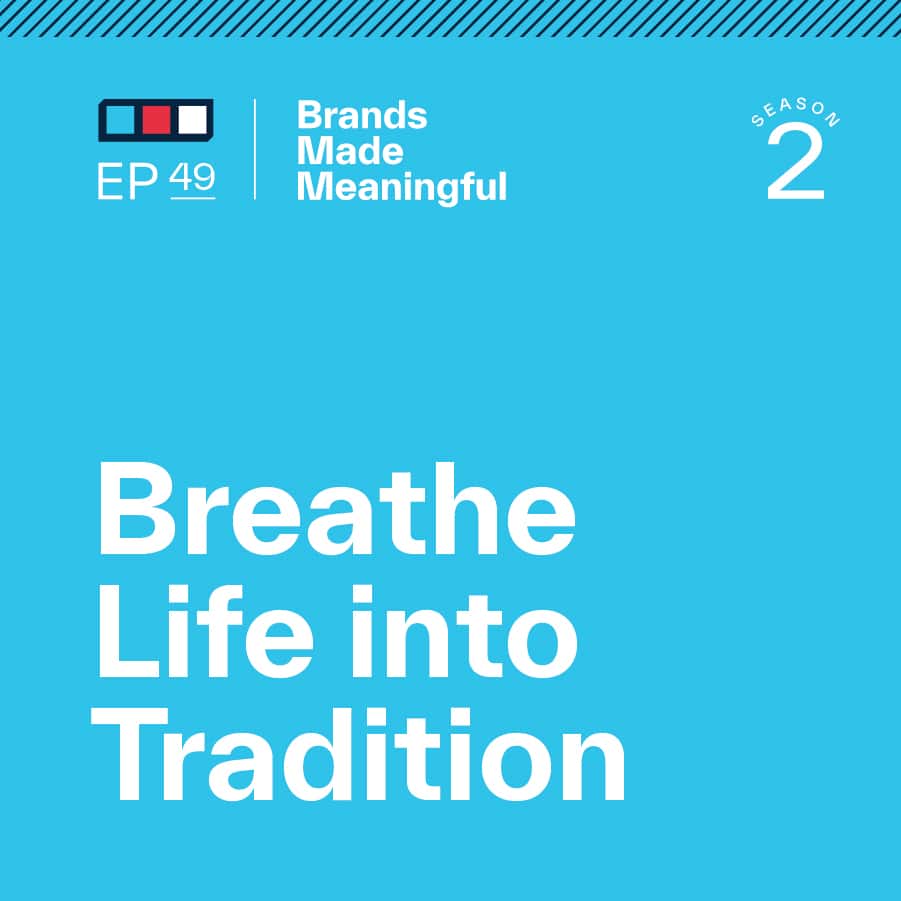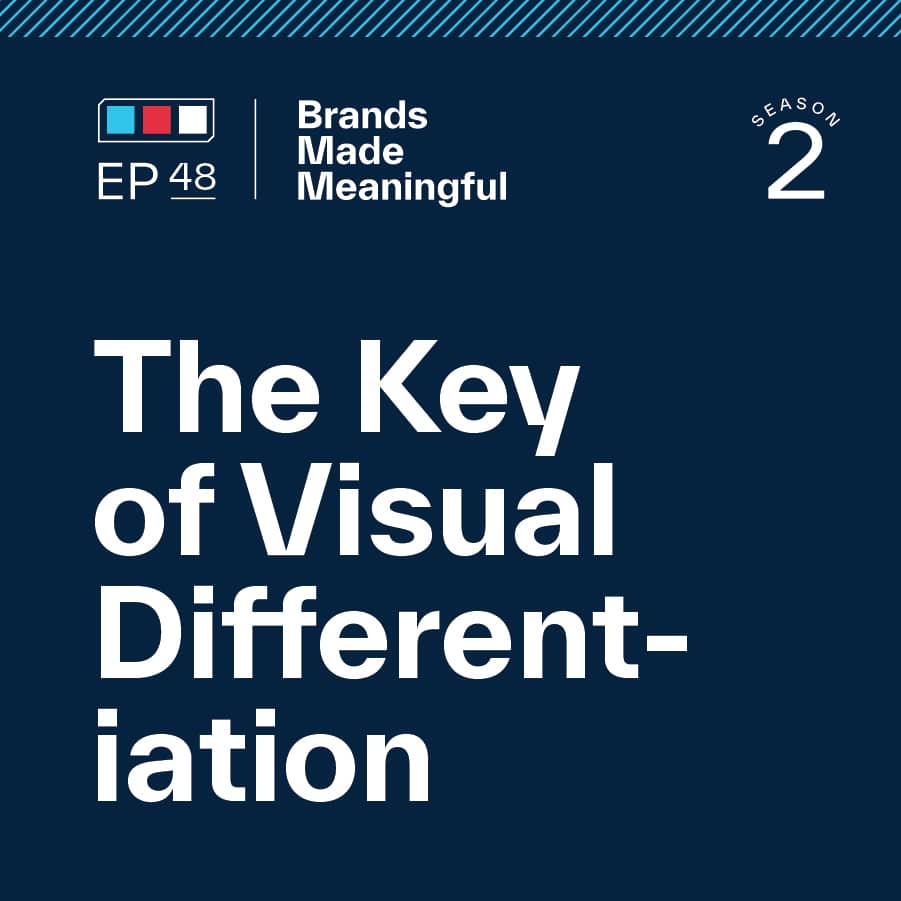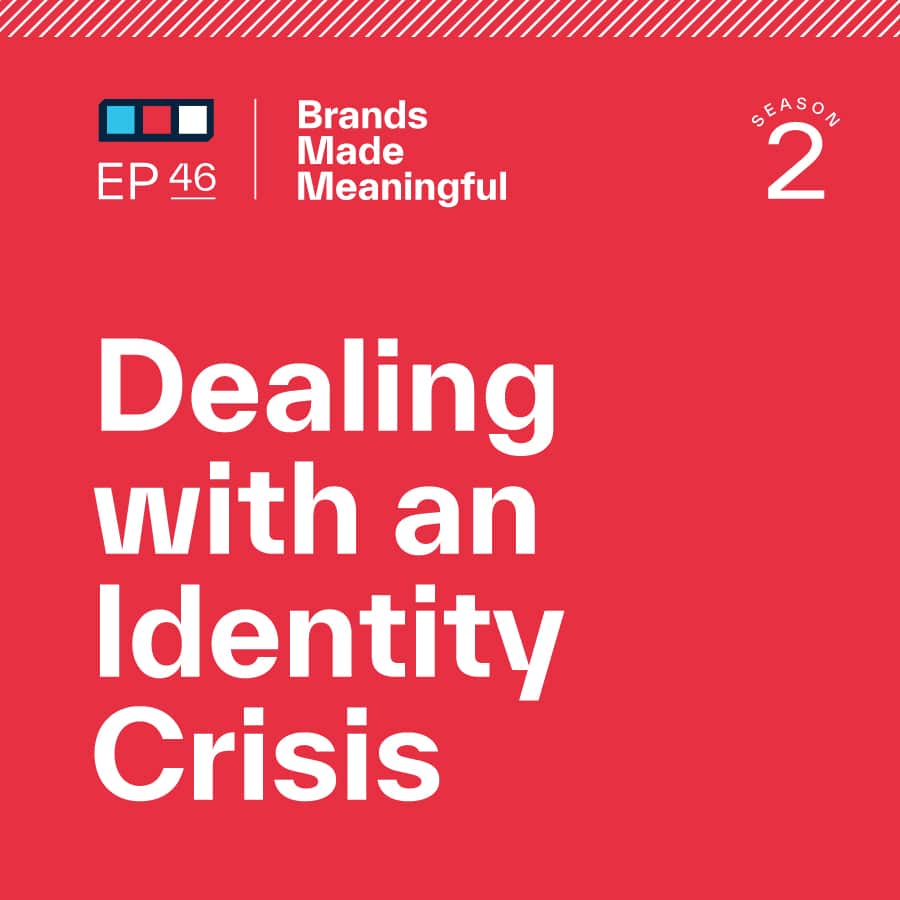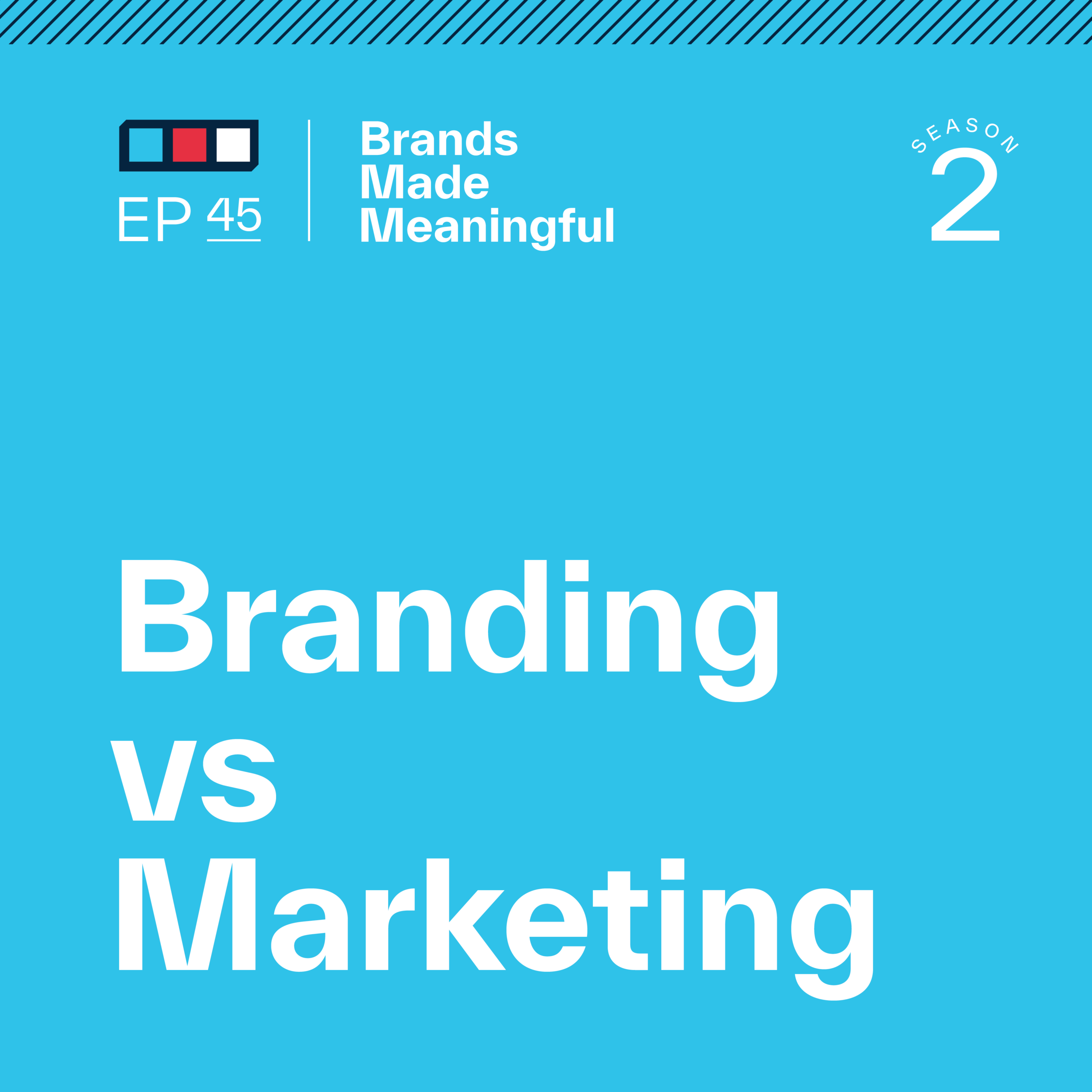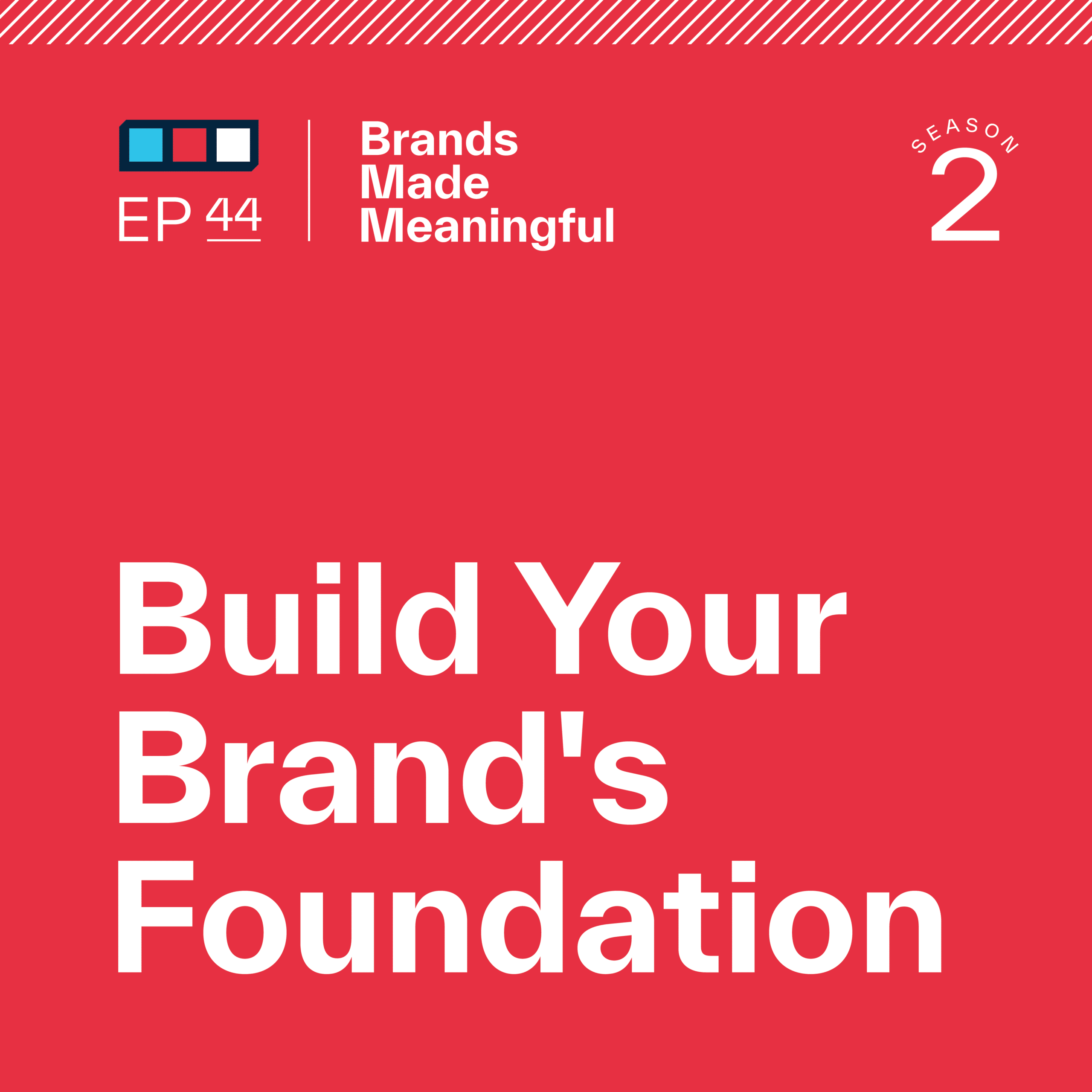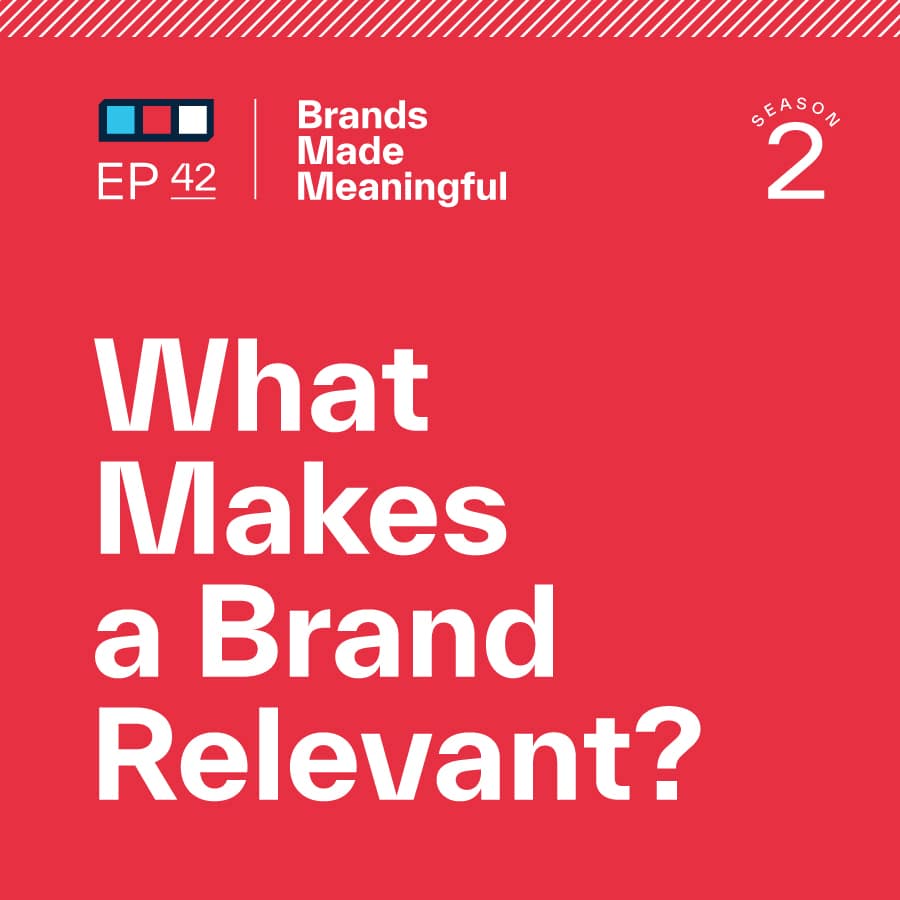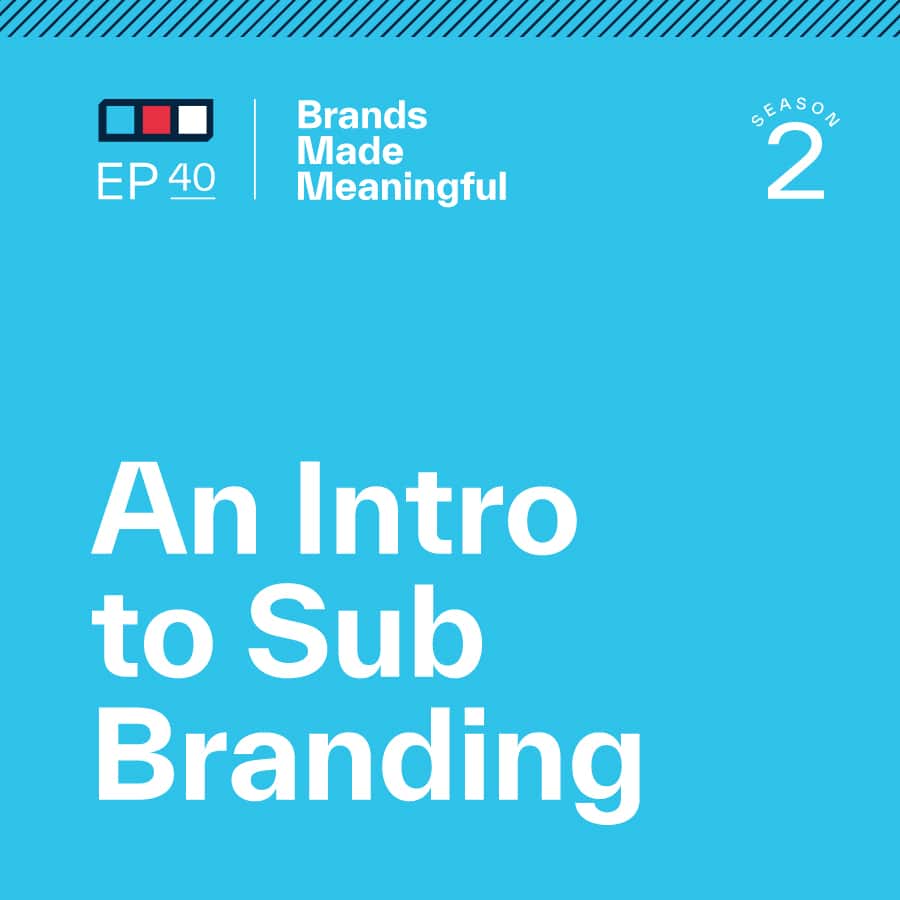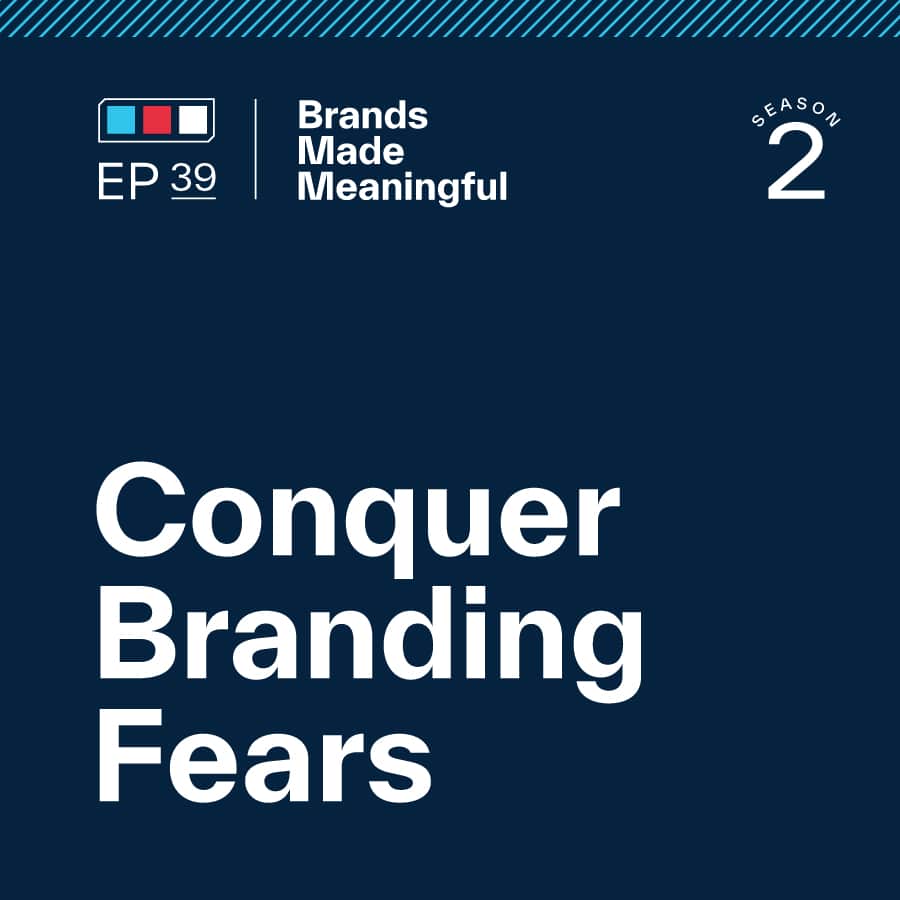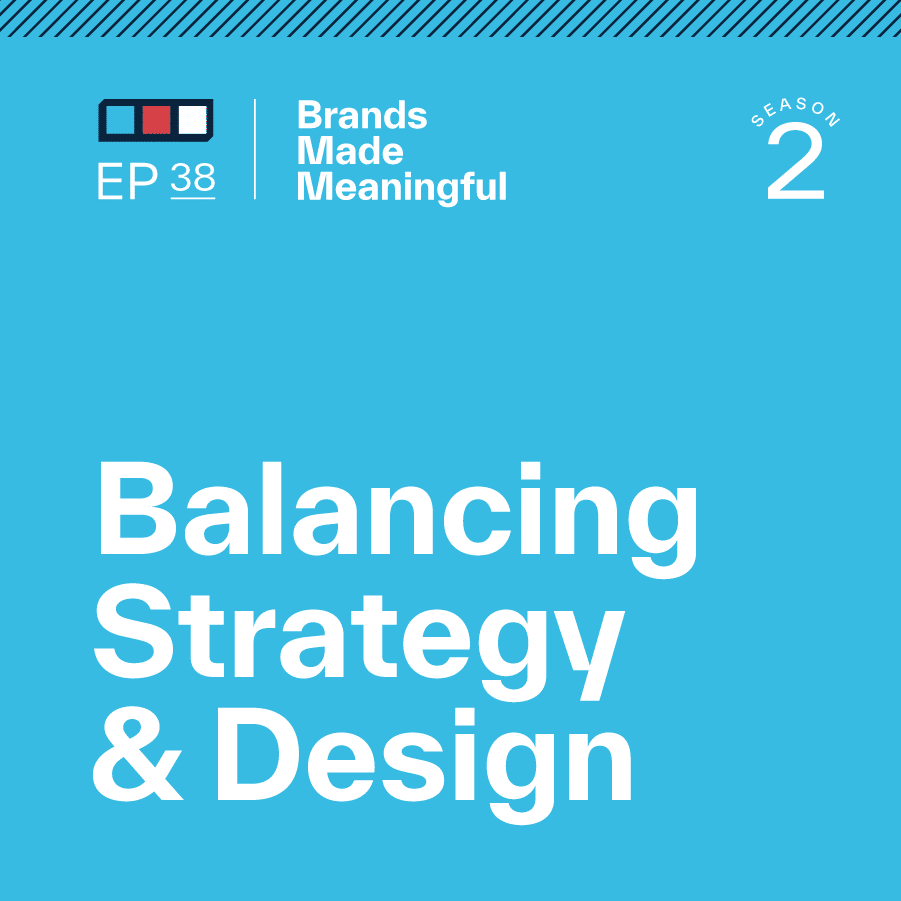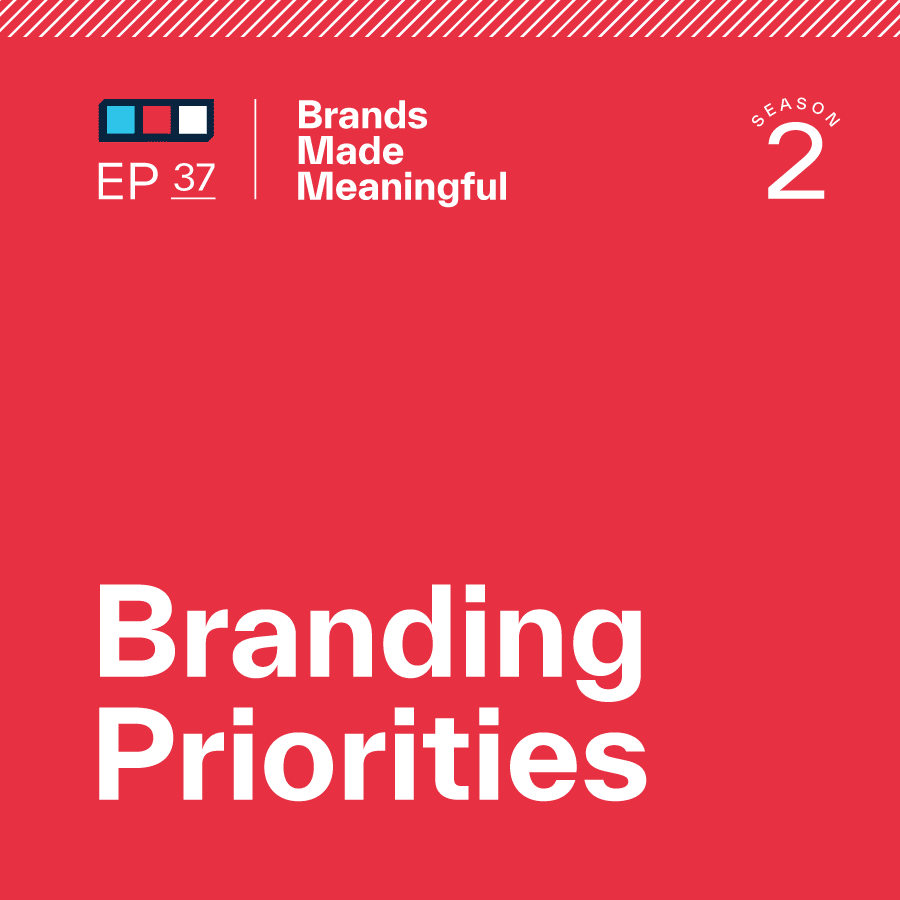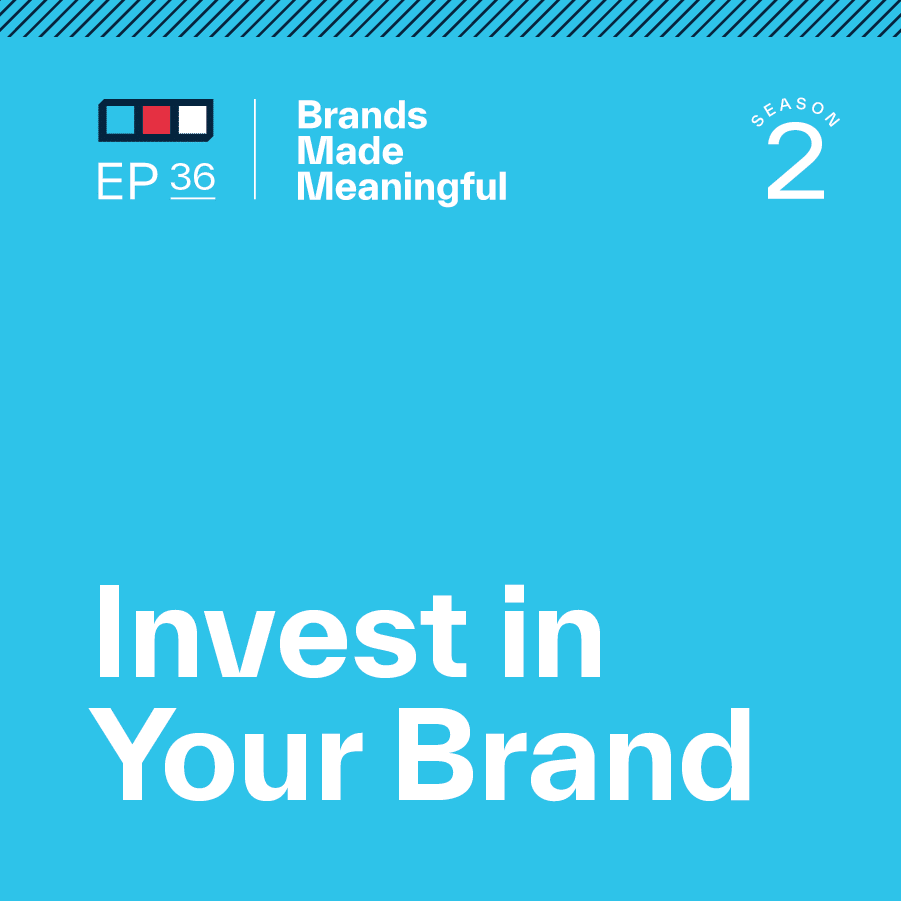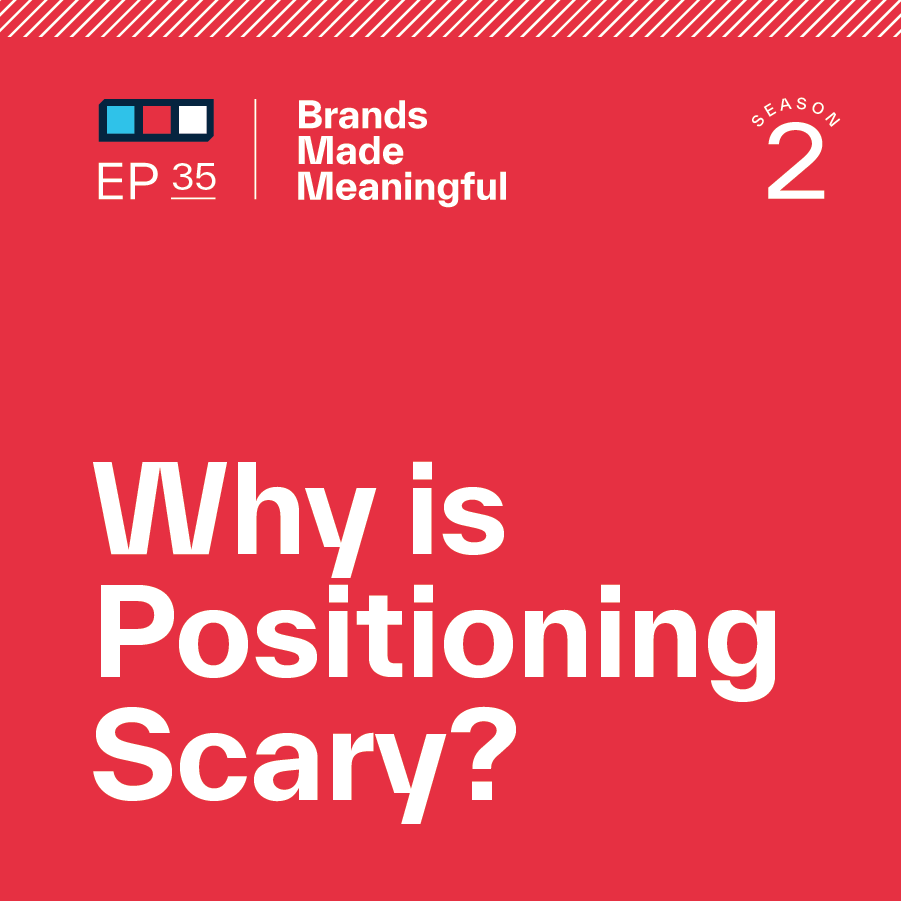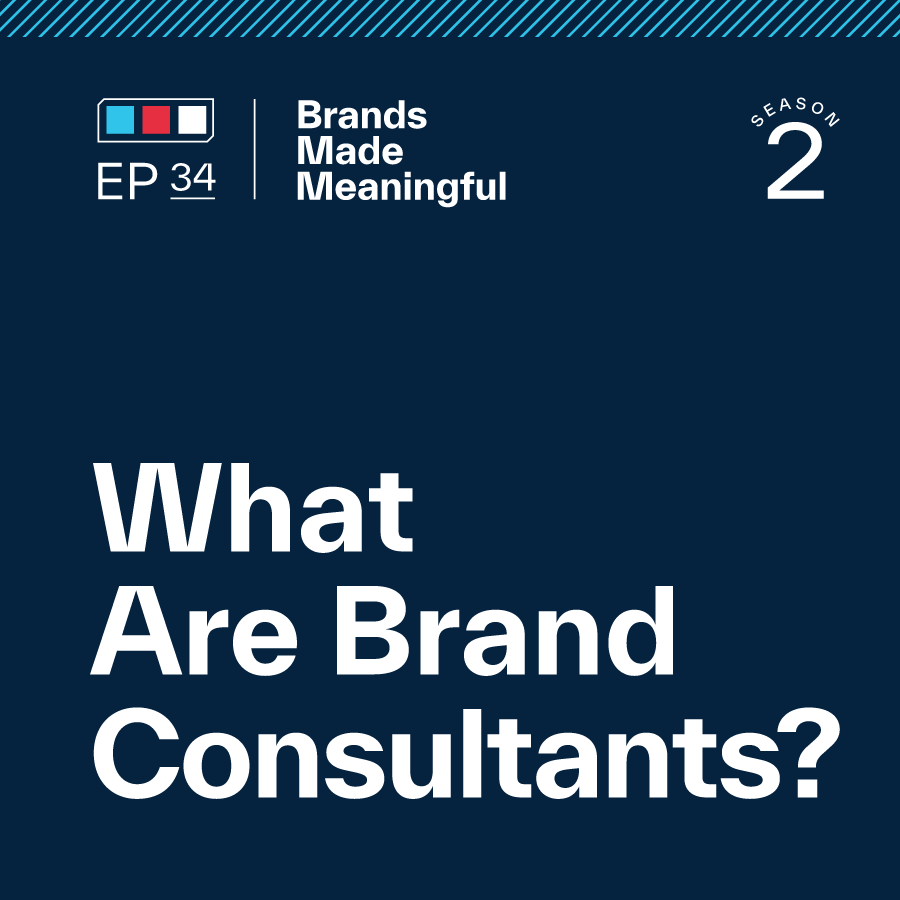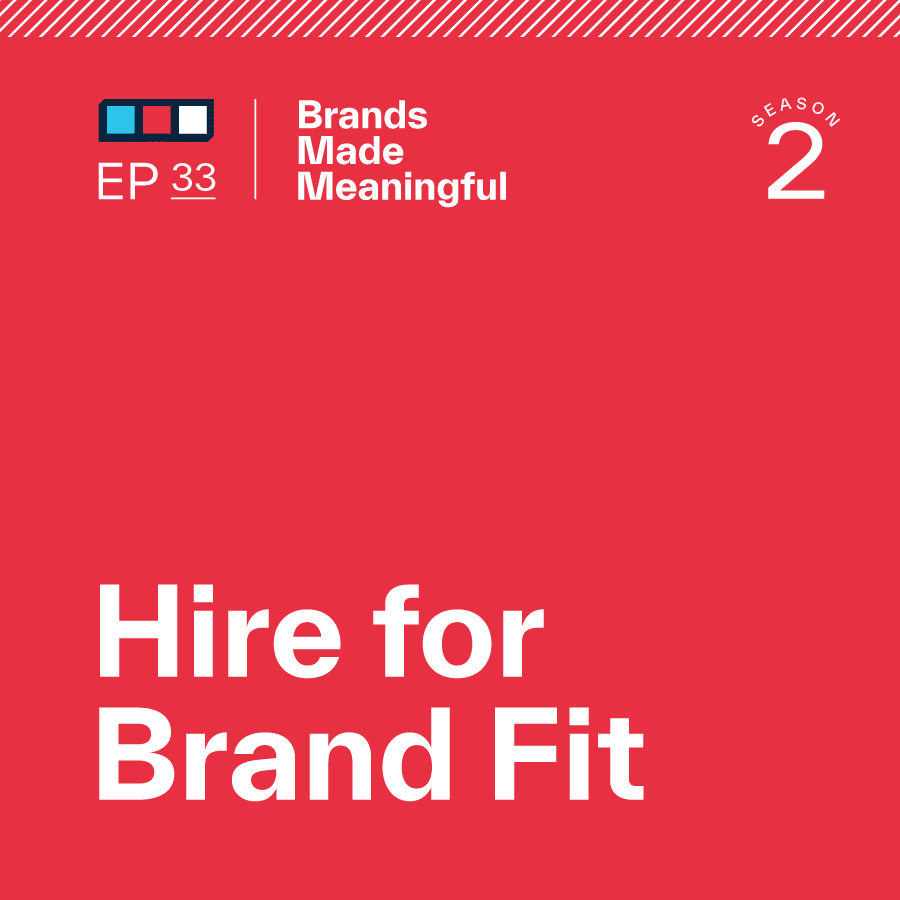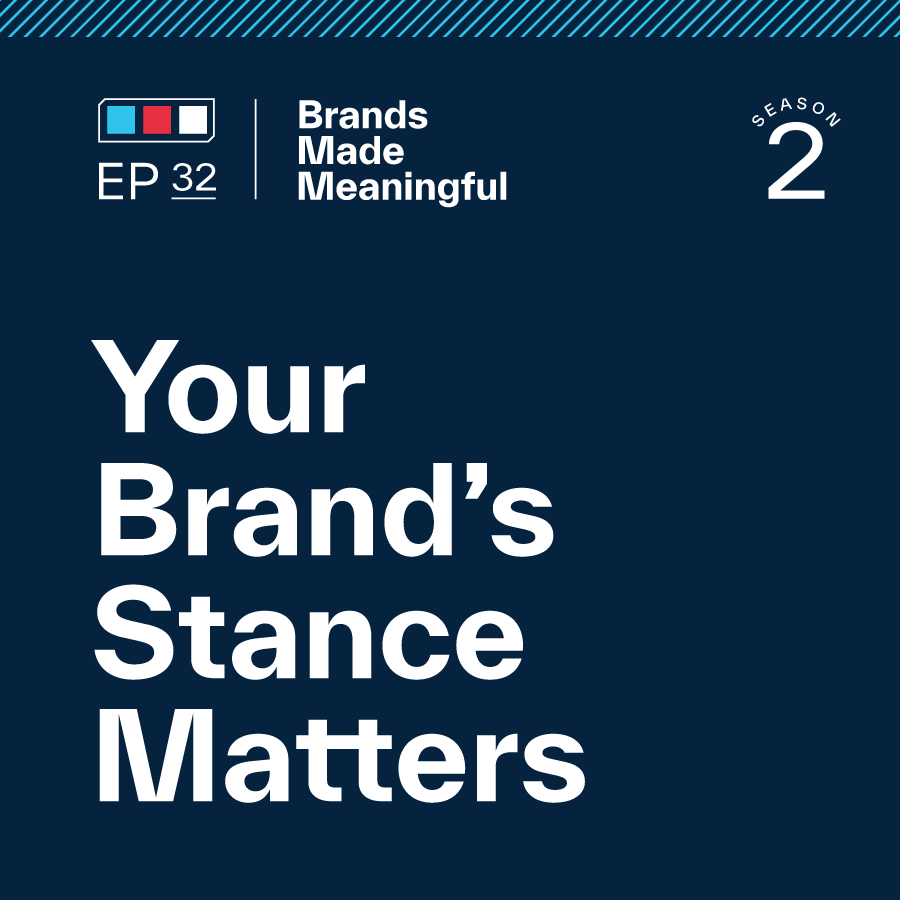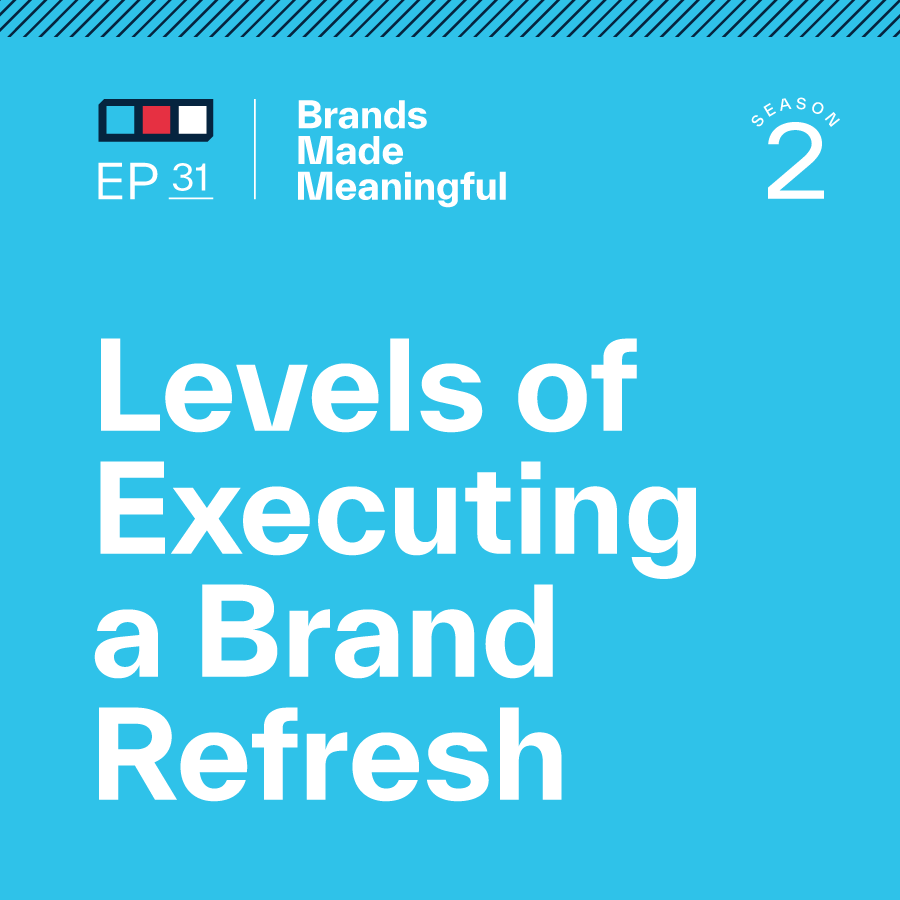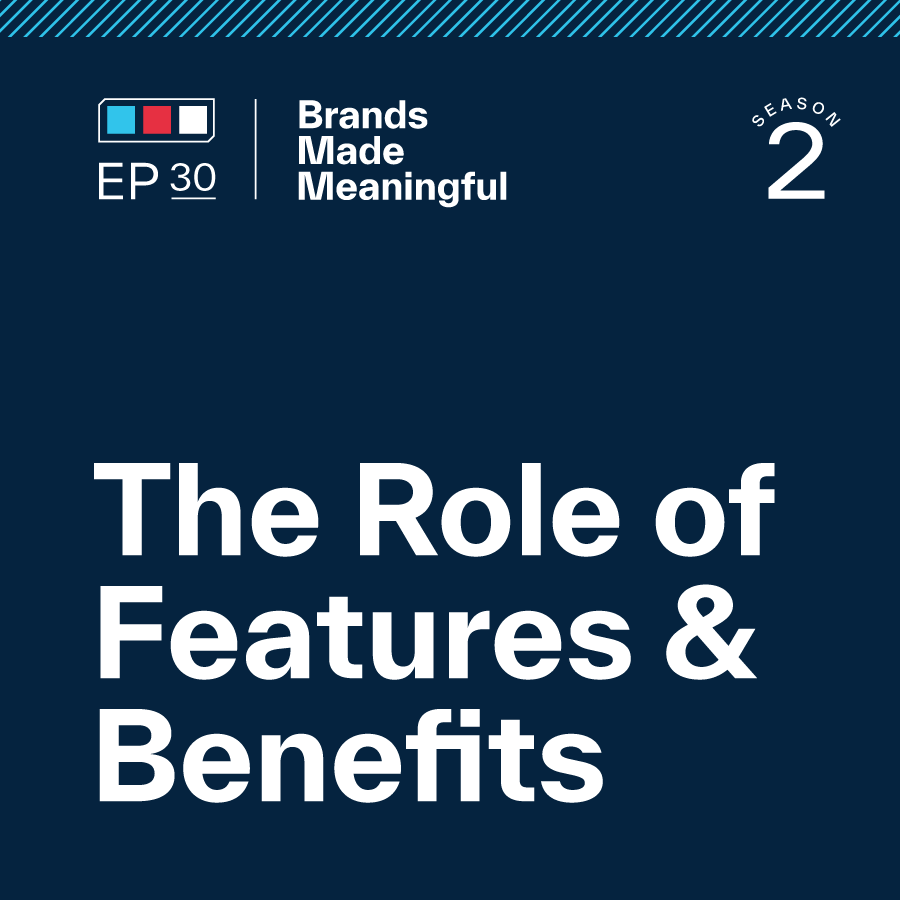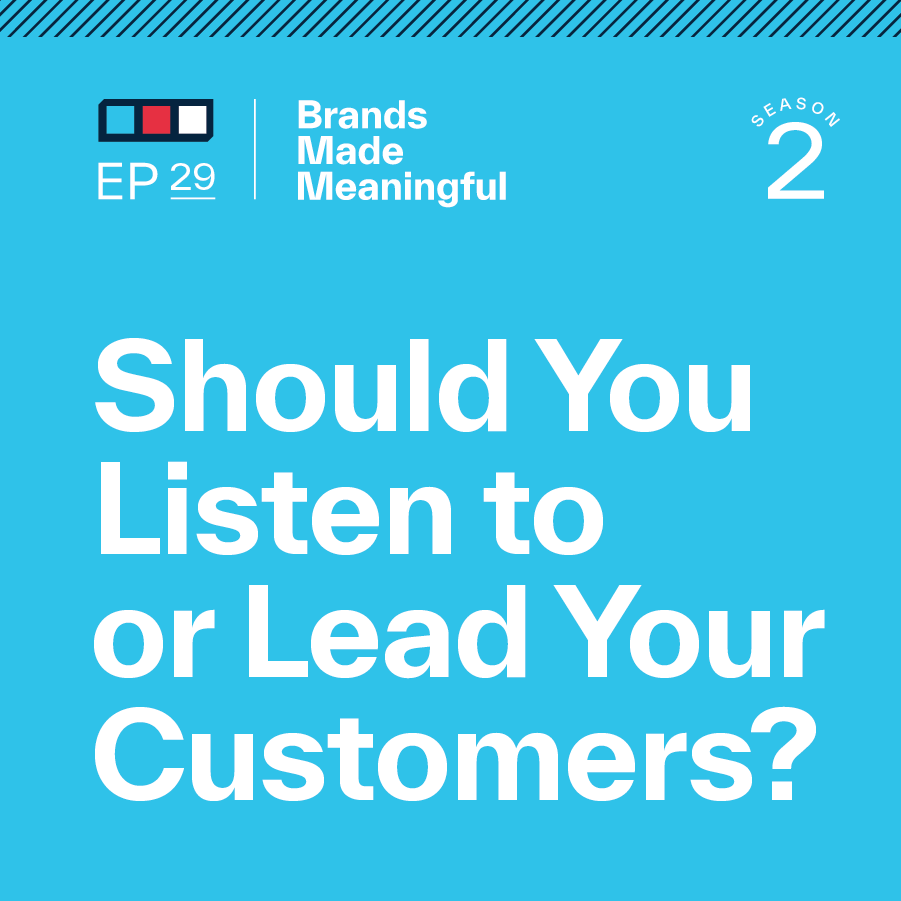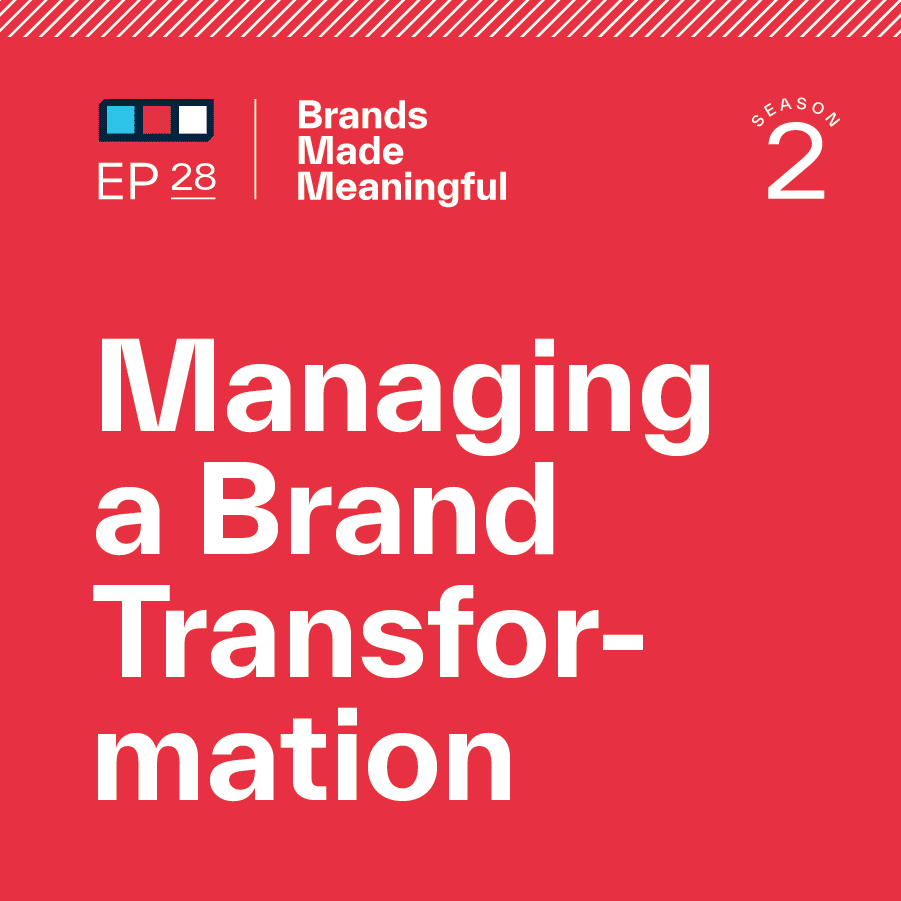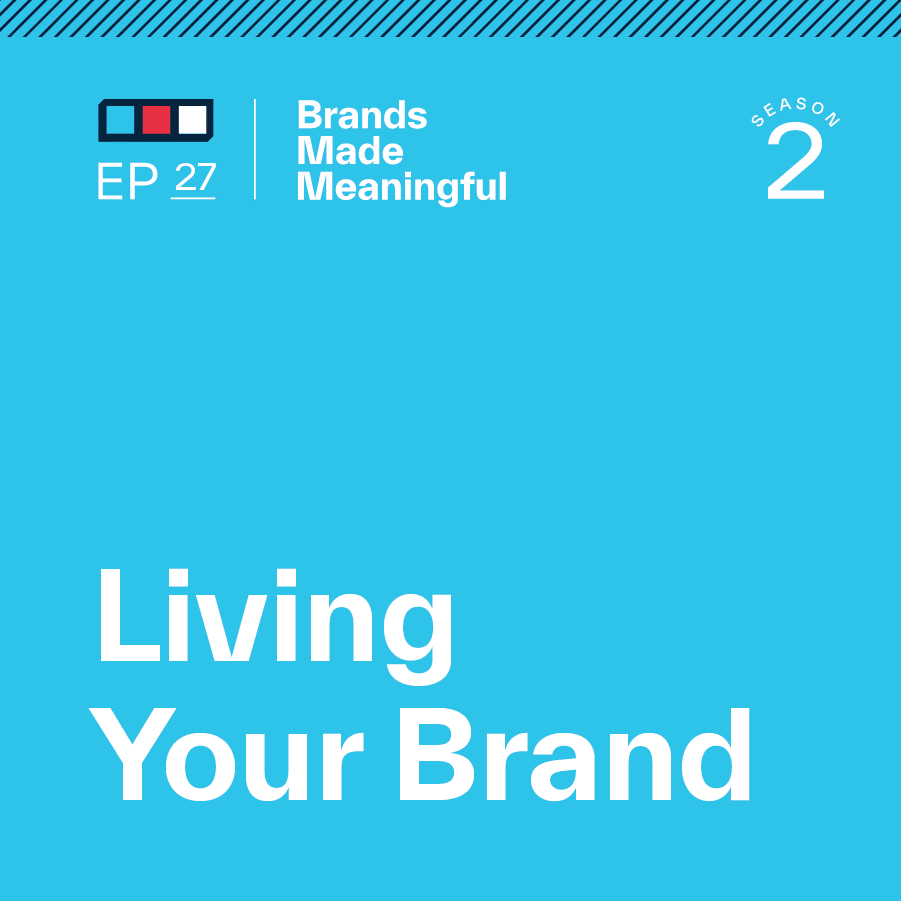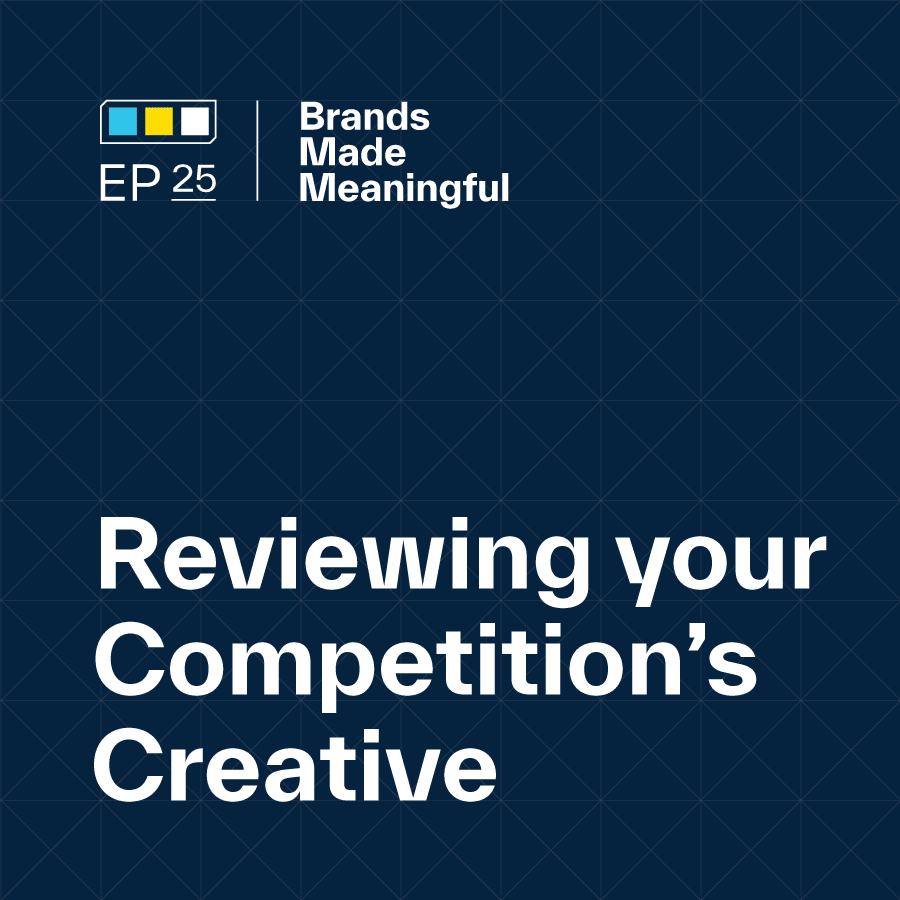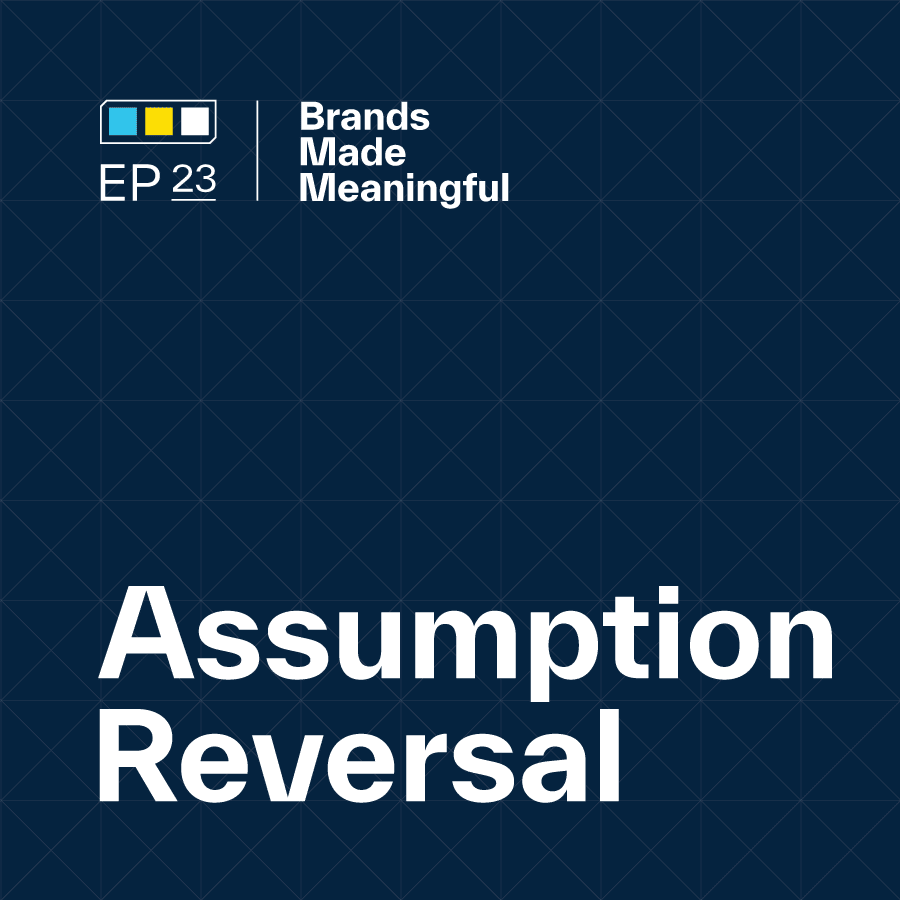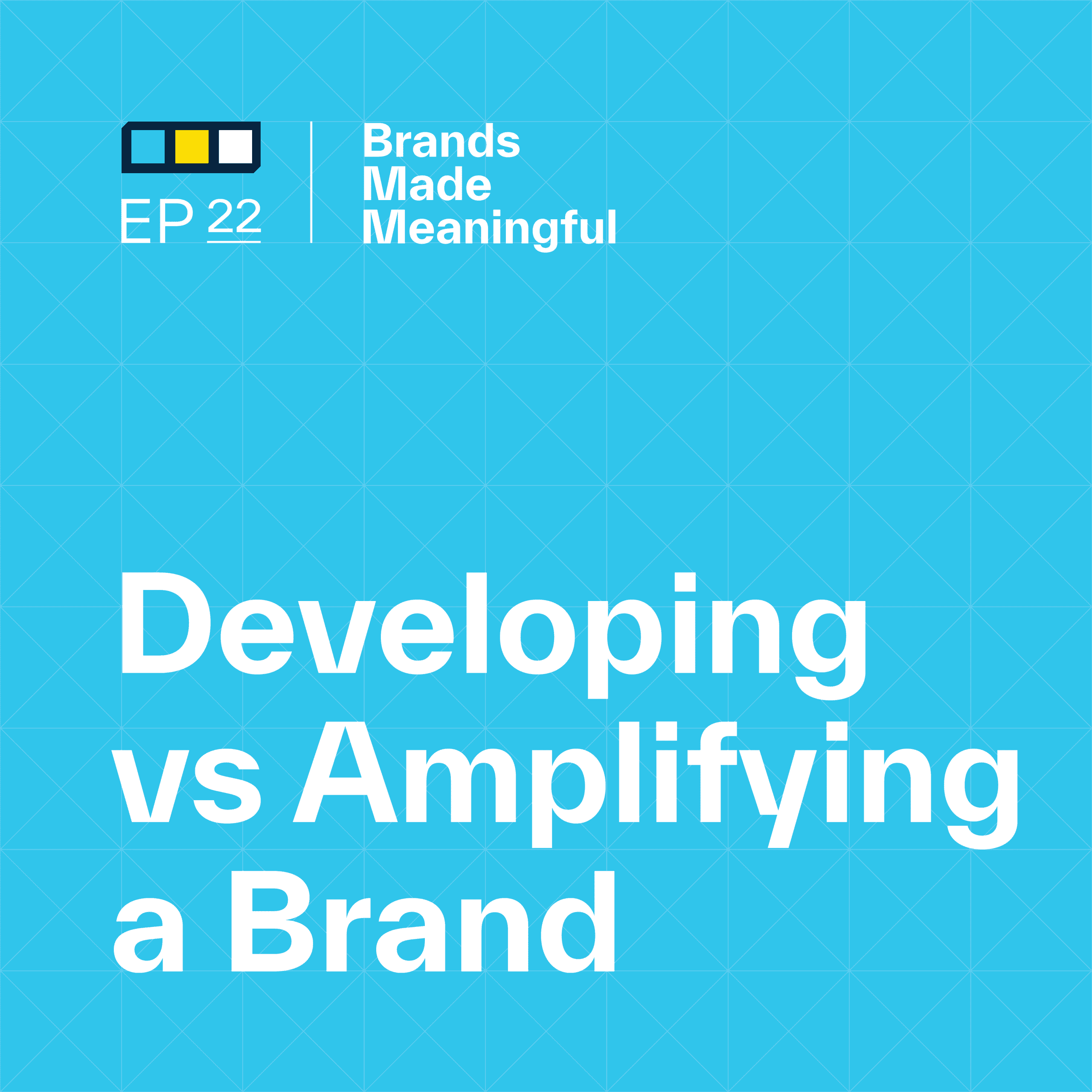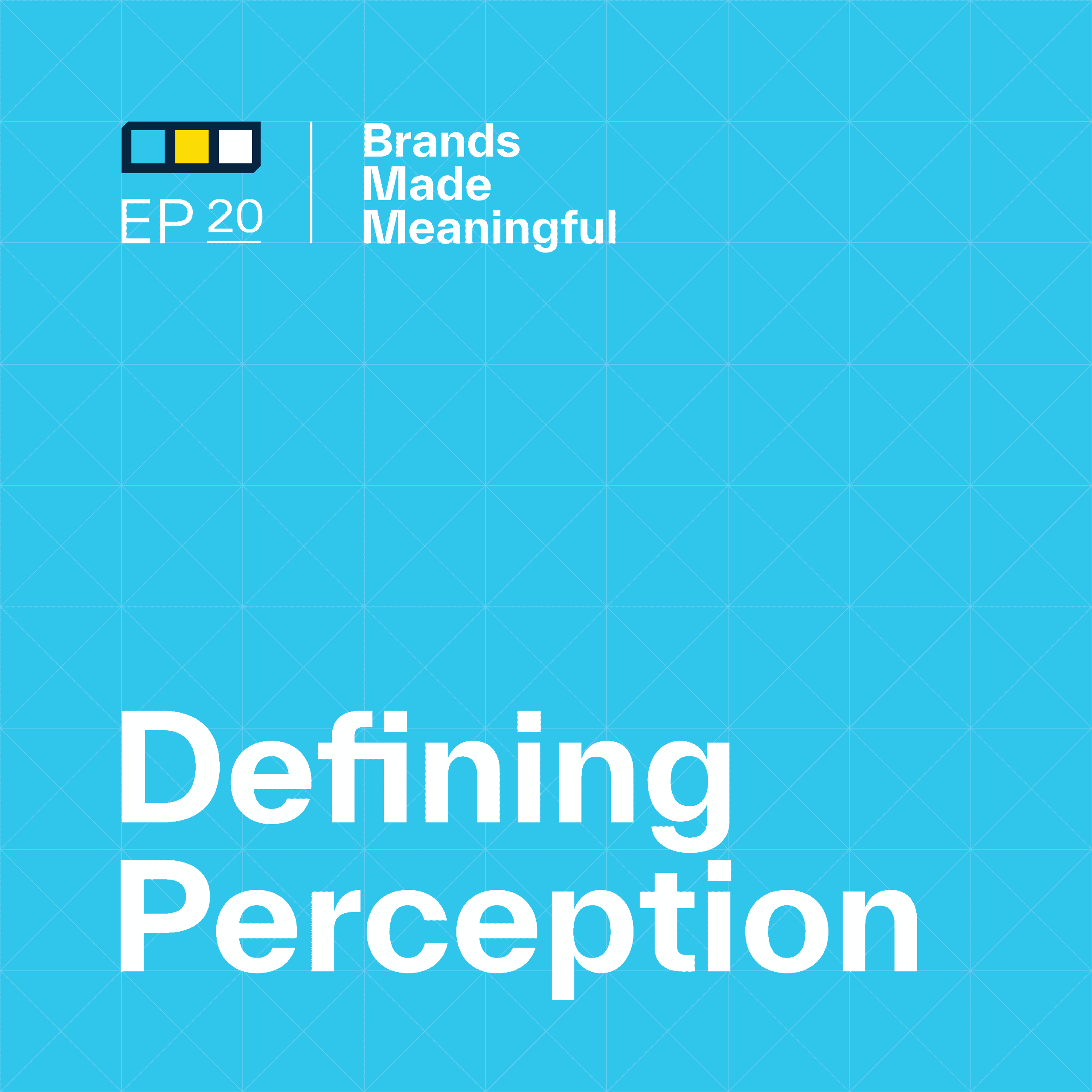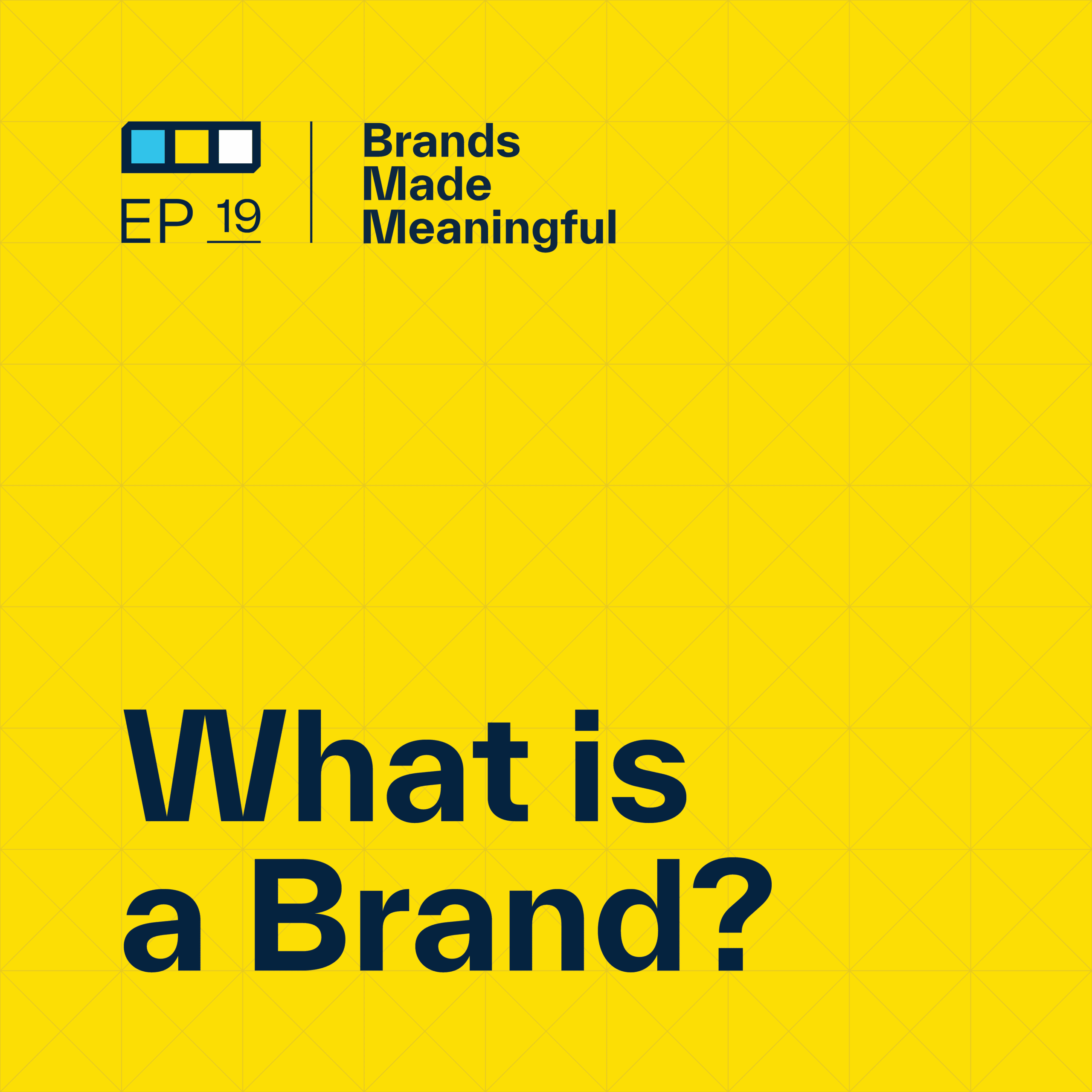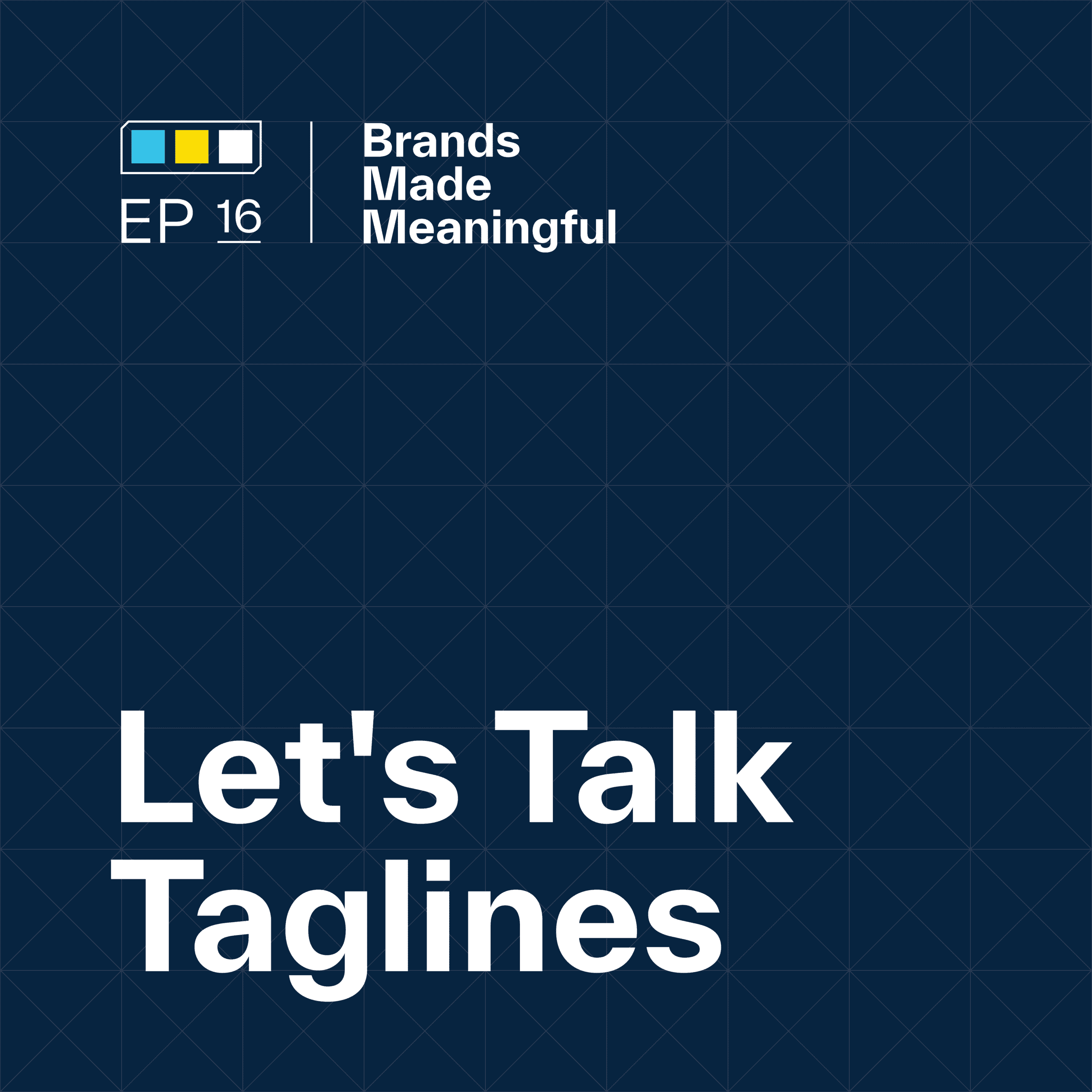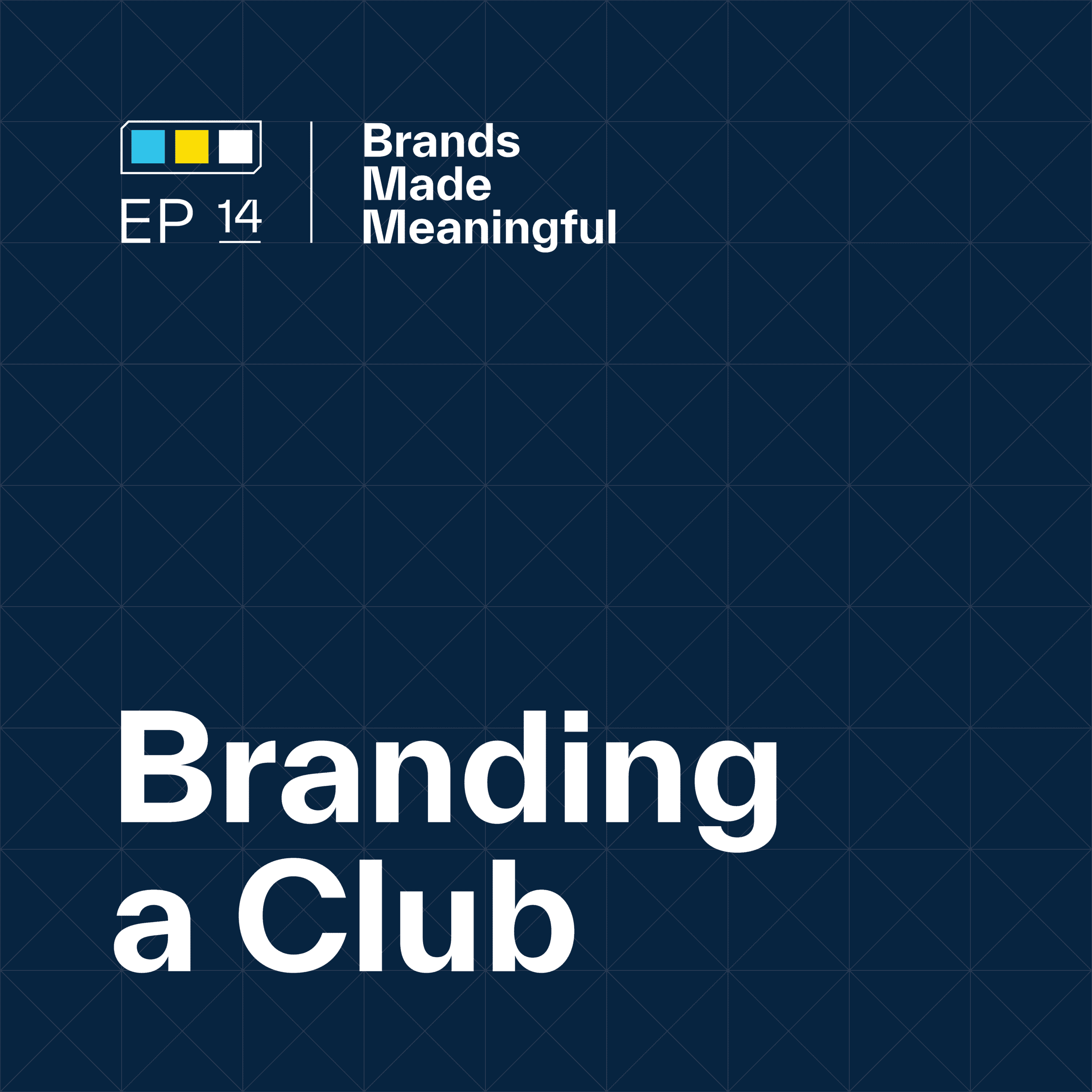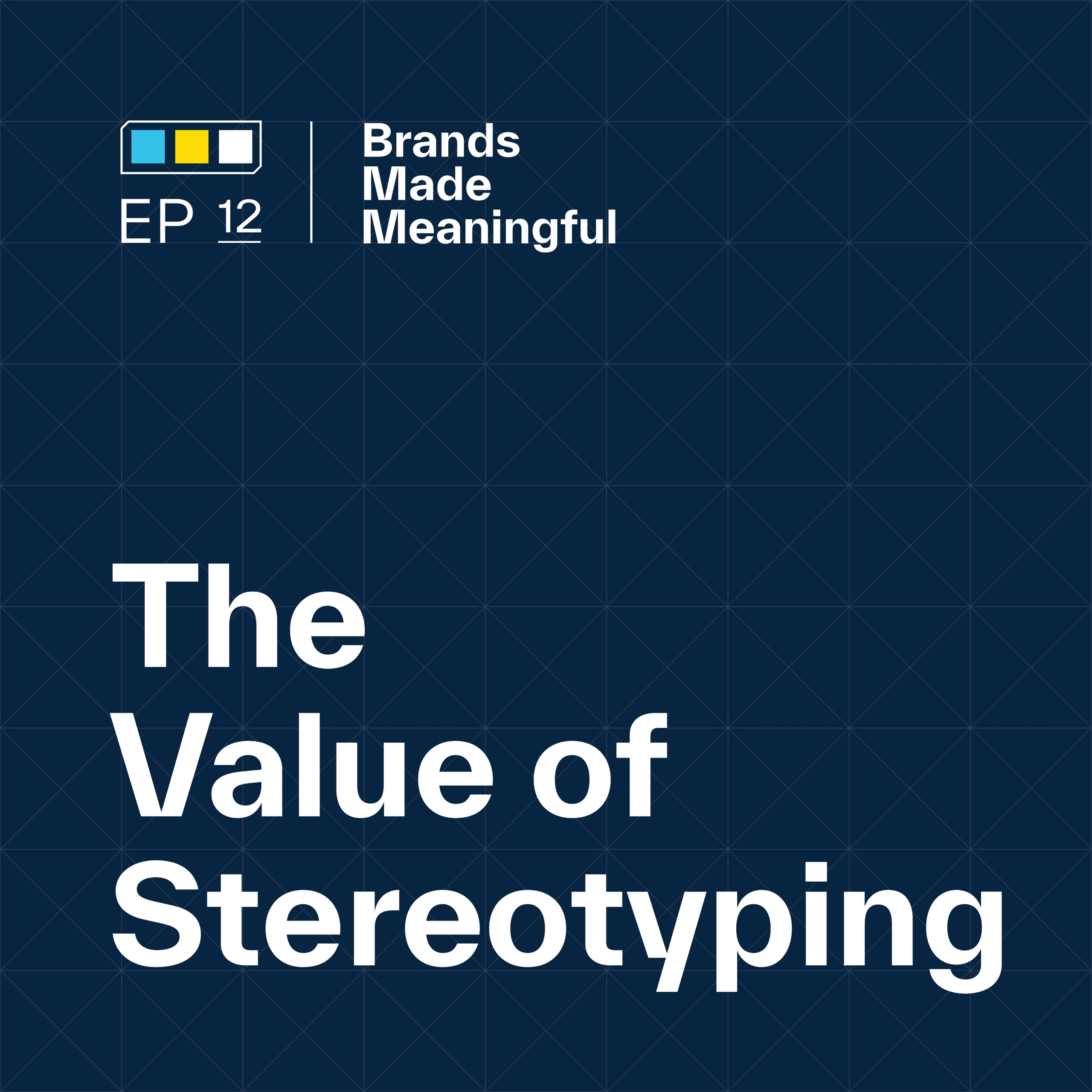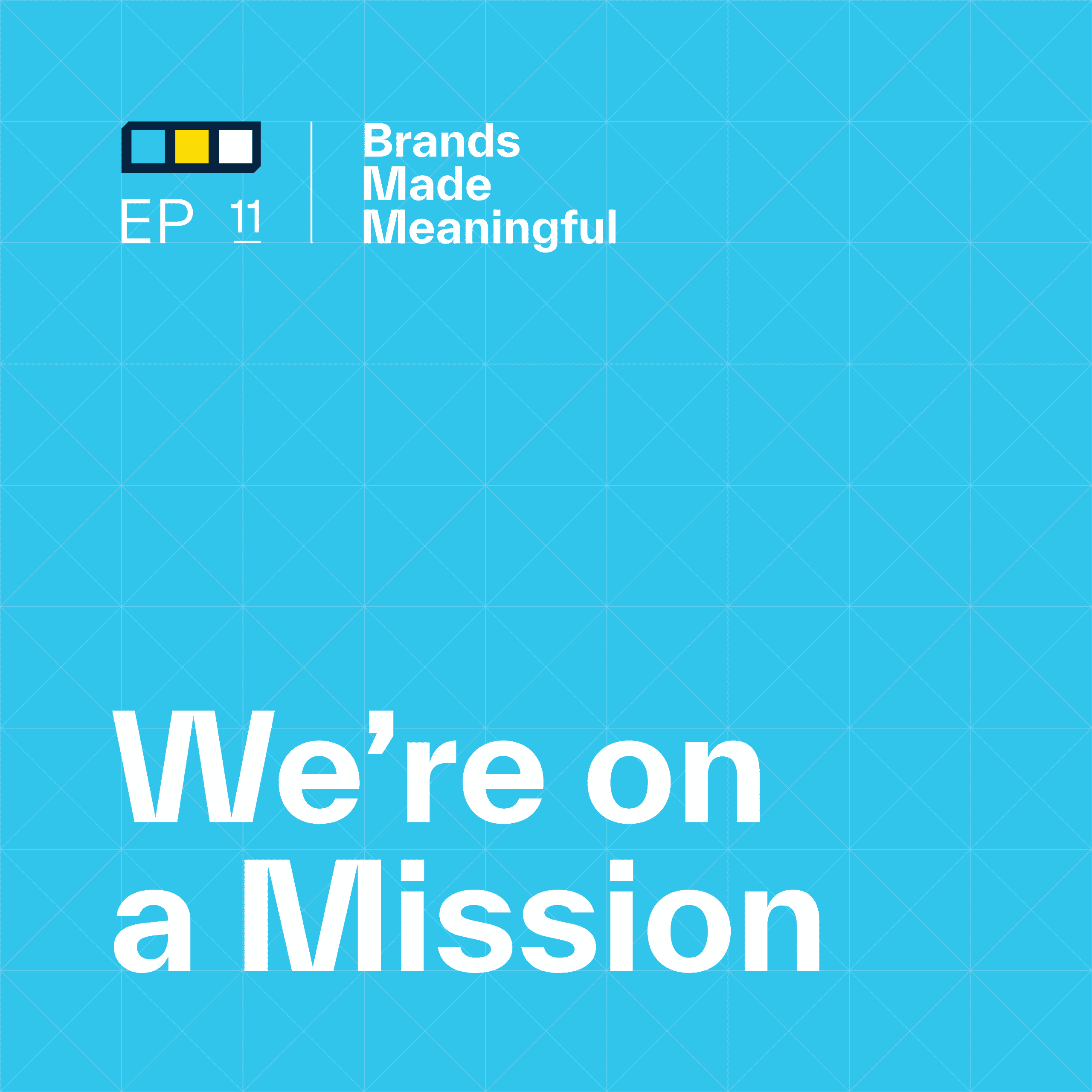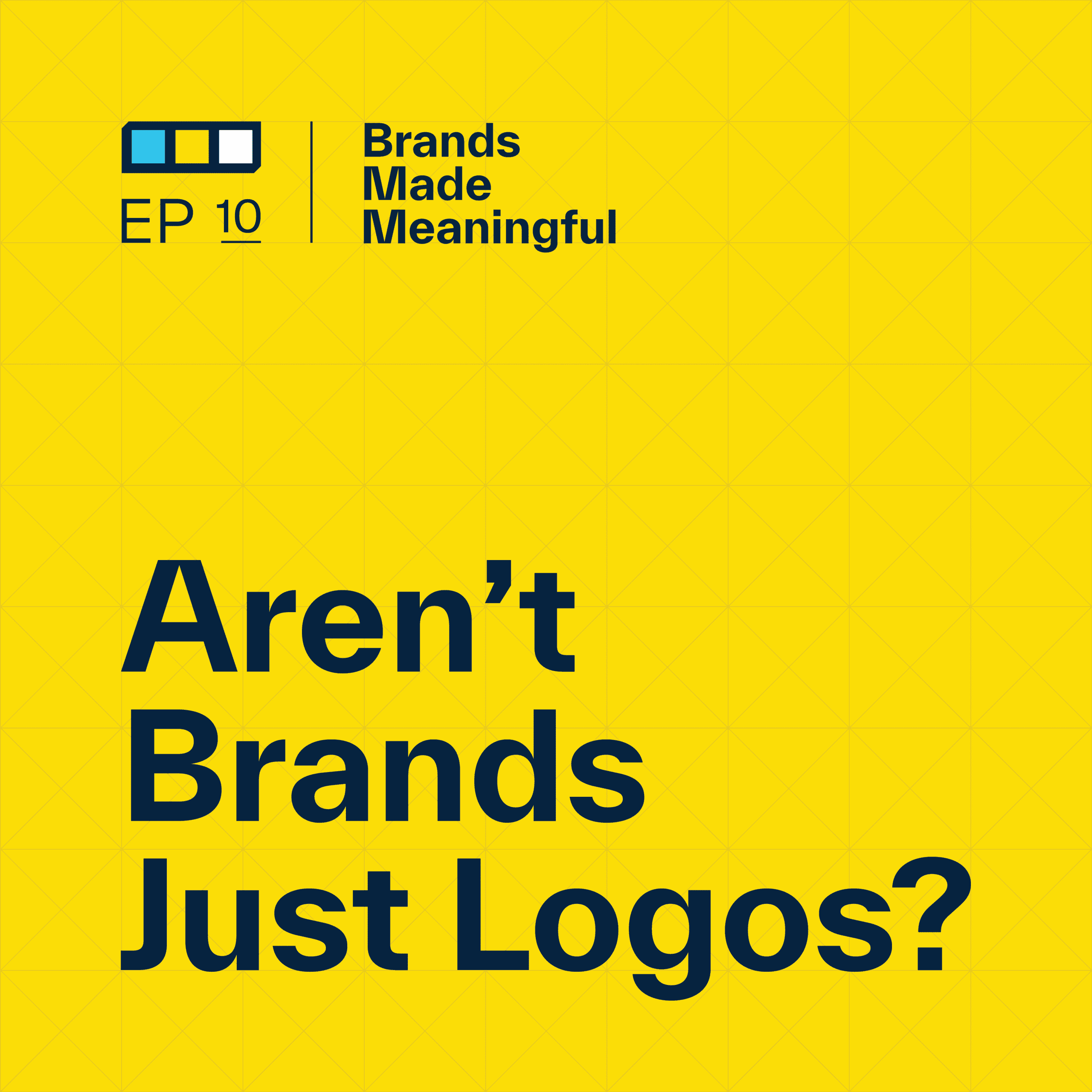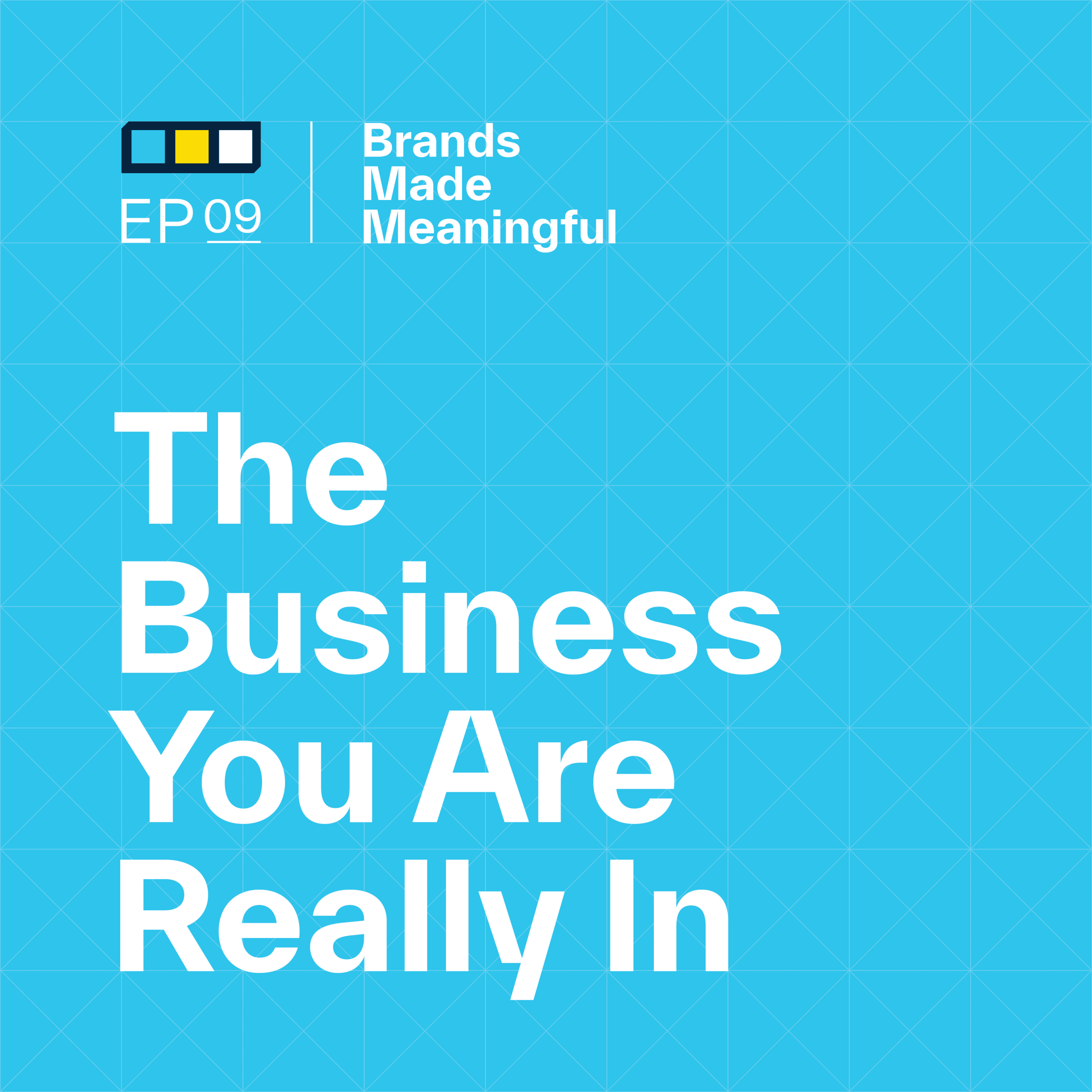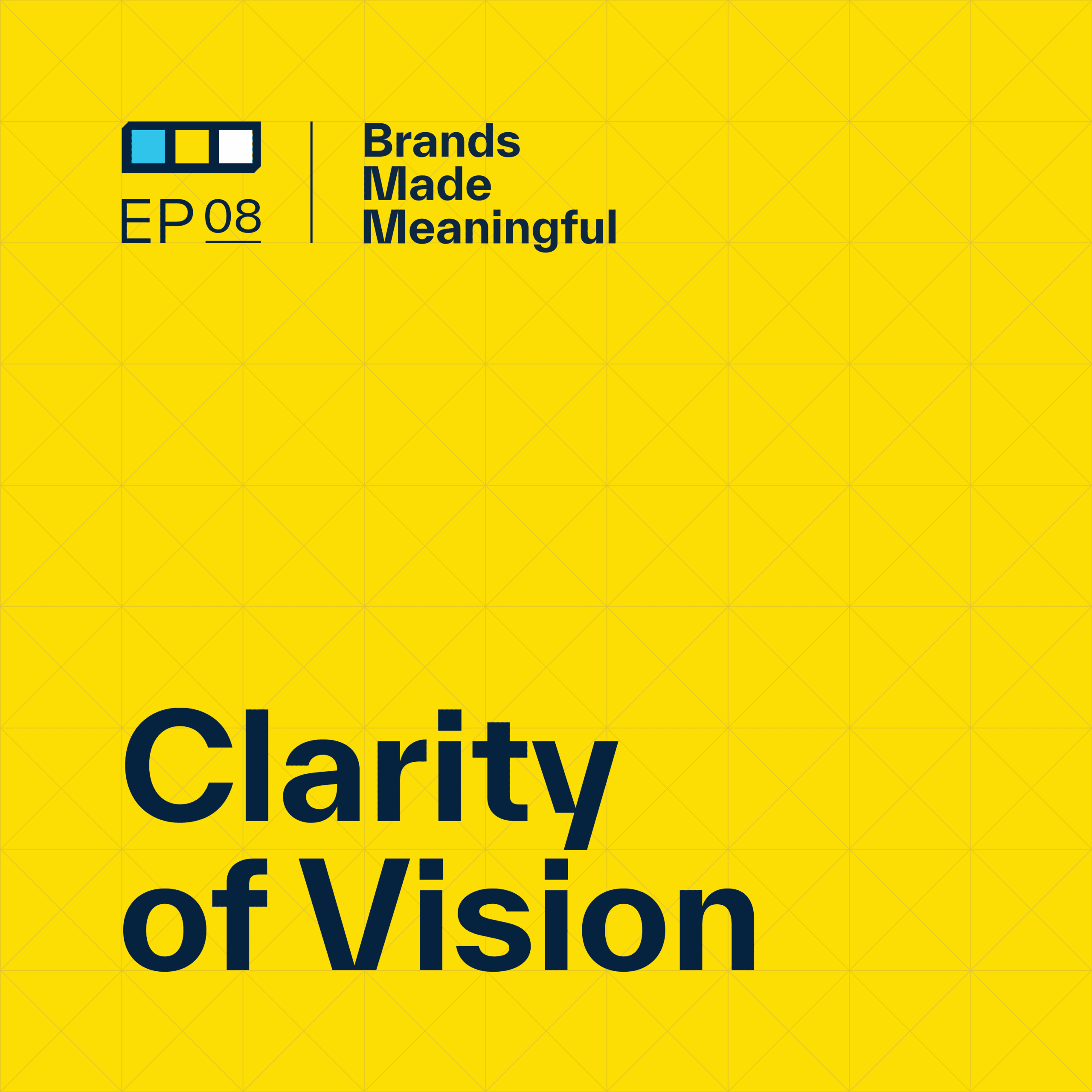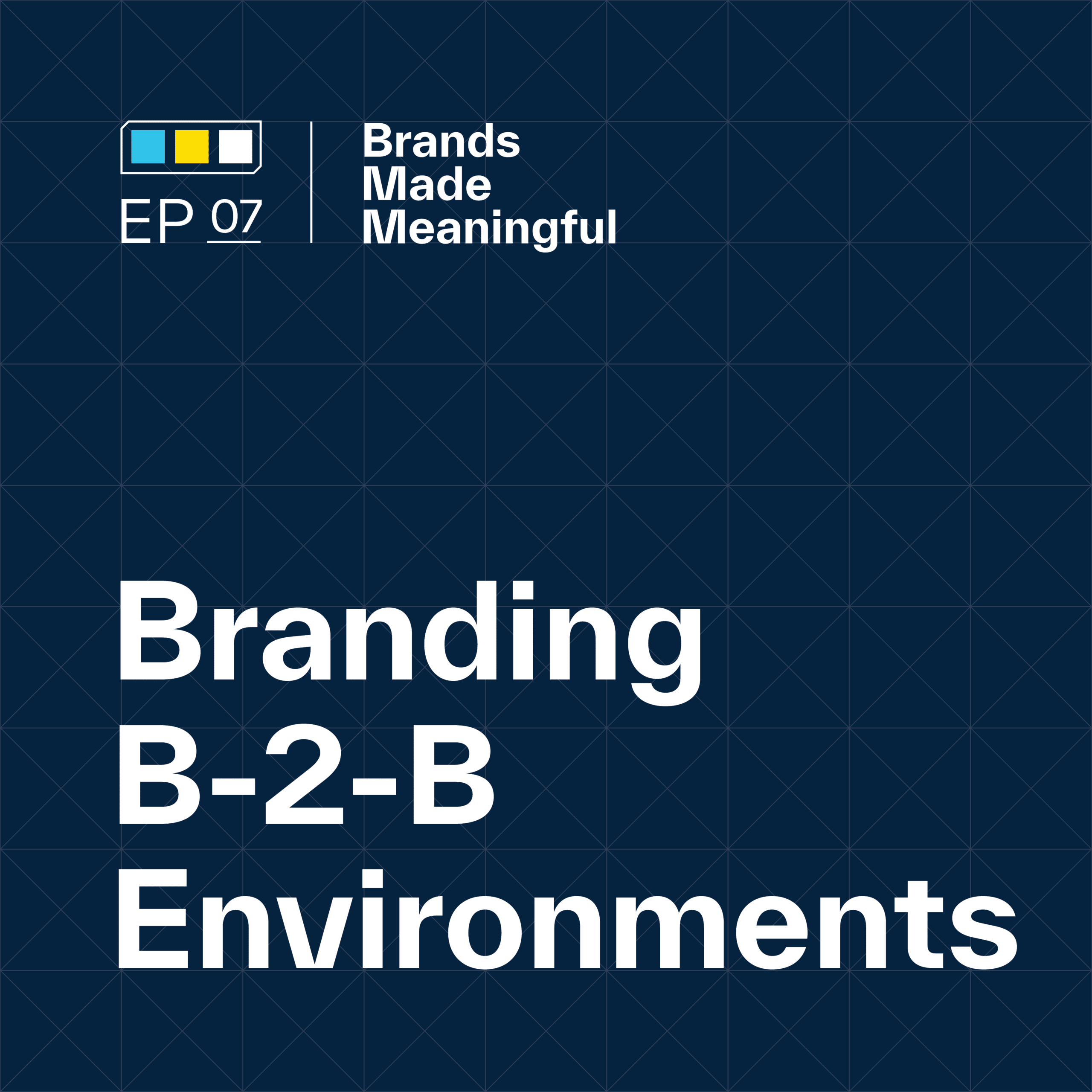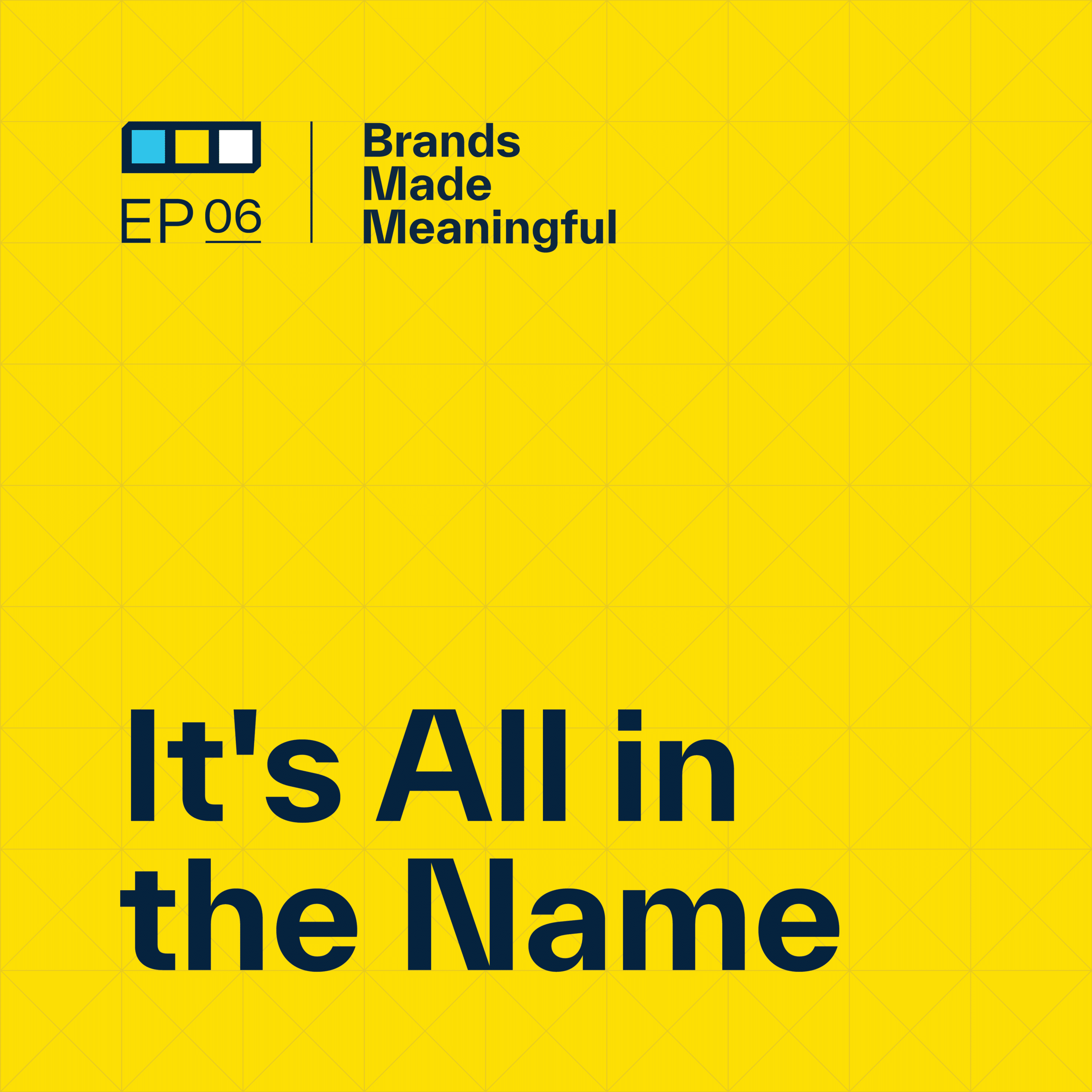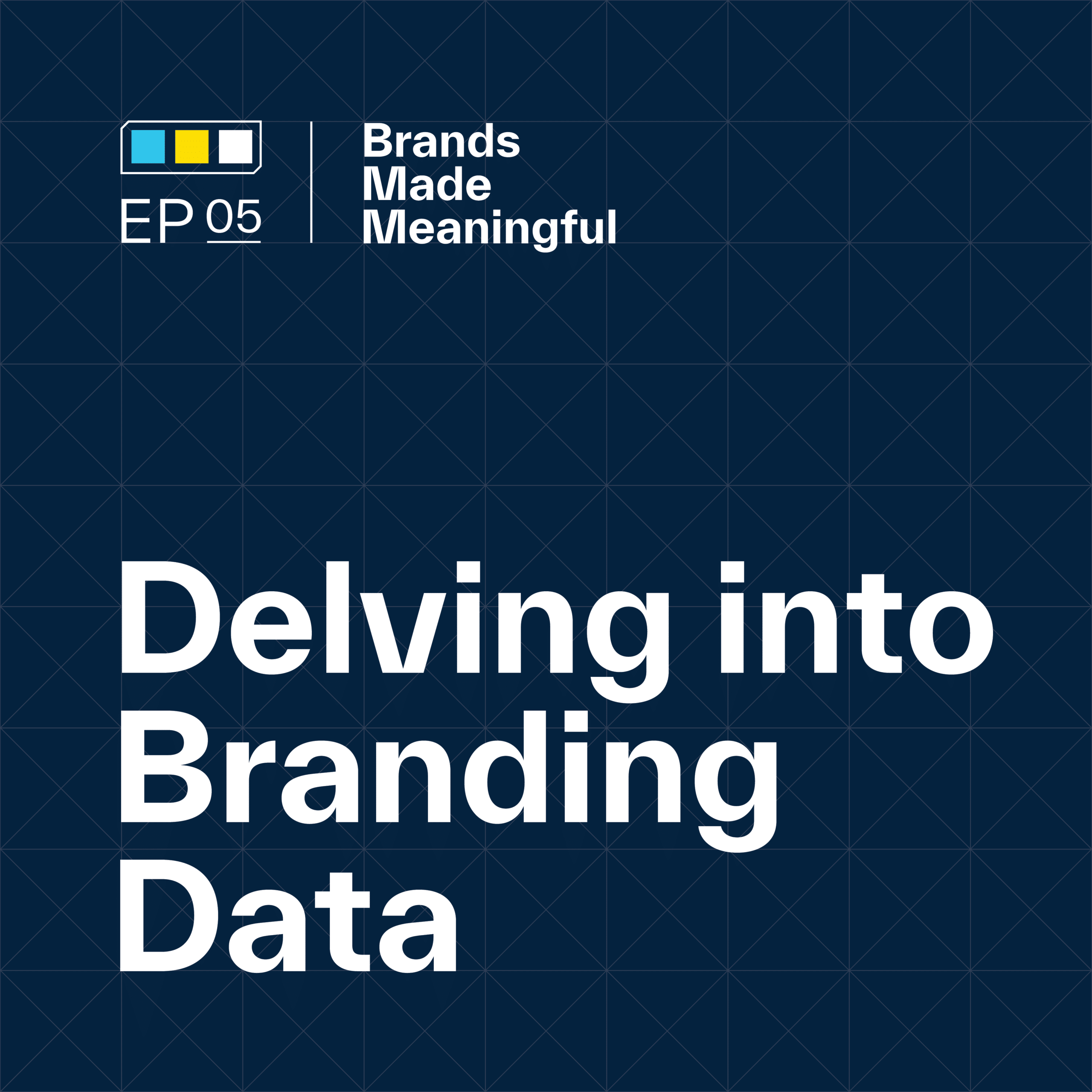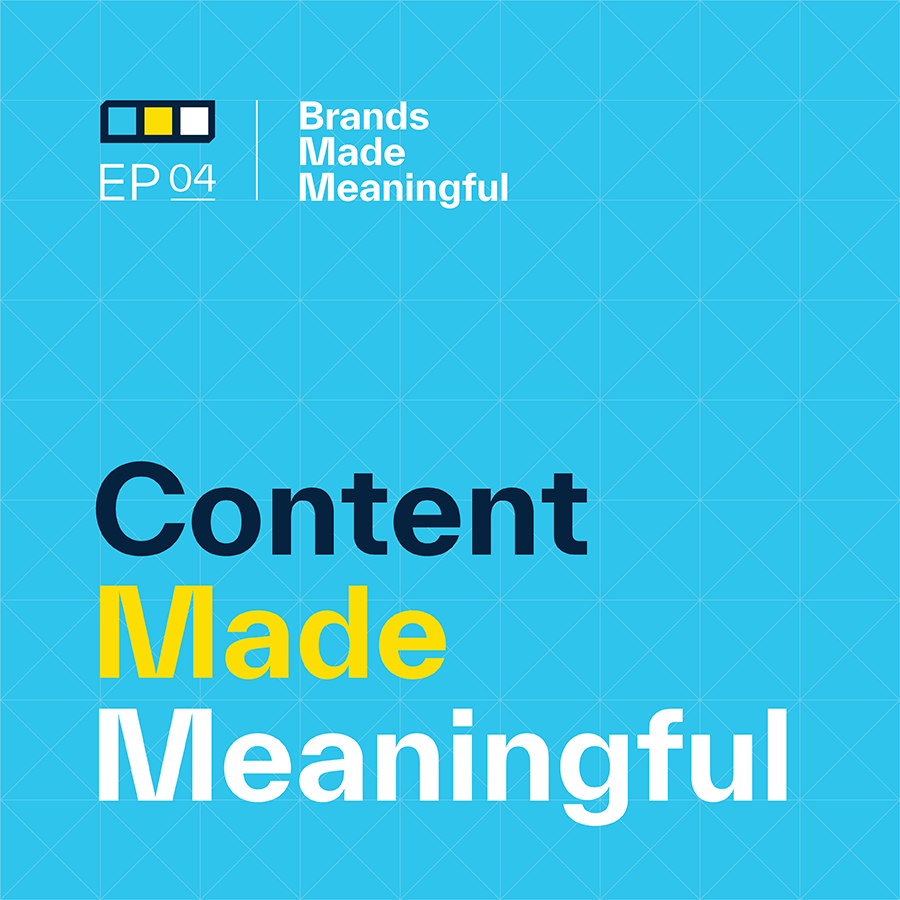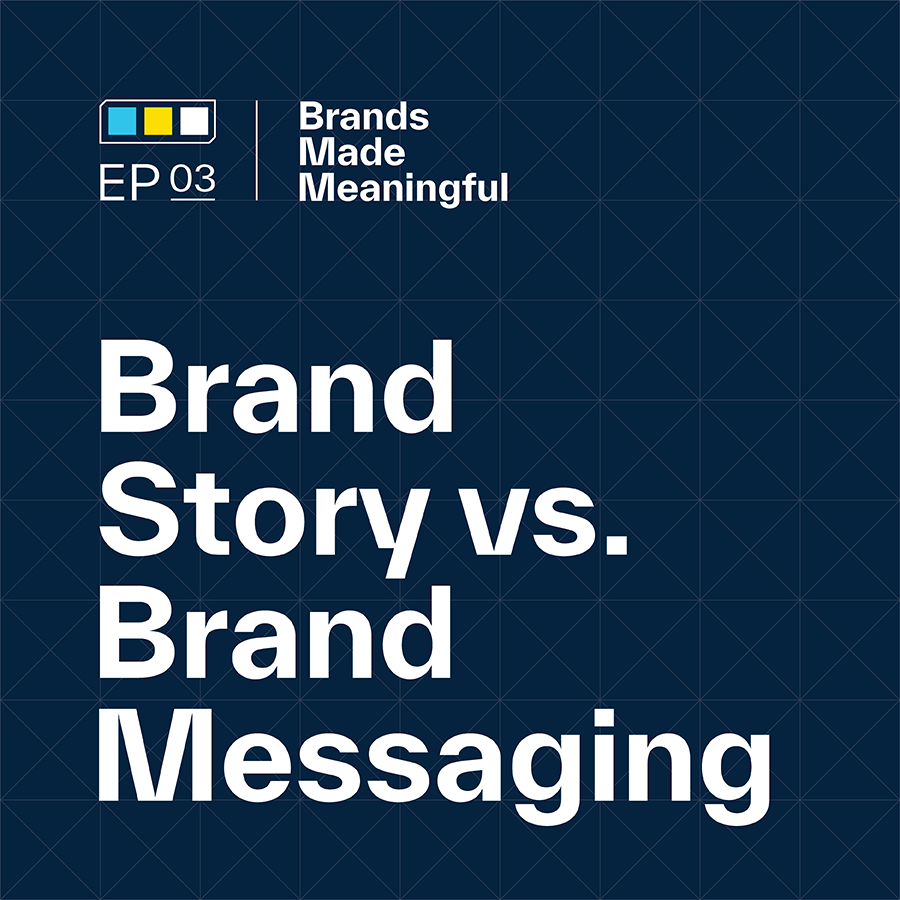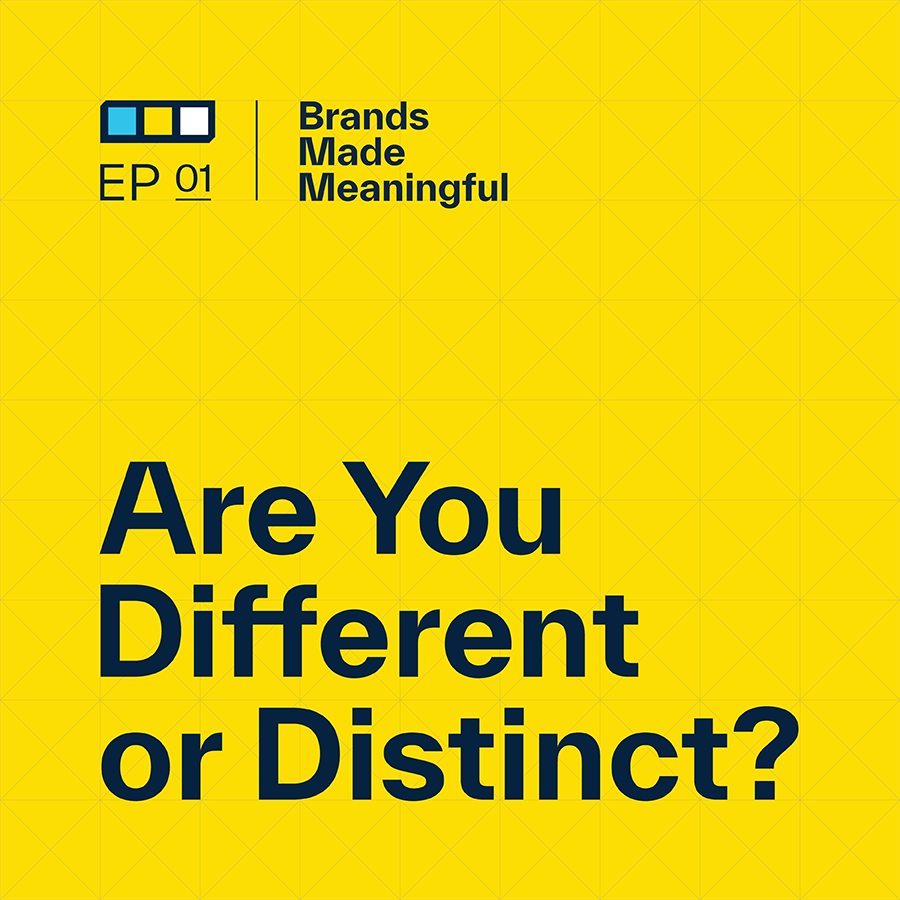EPISODE 43
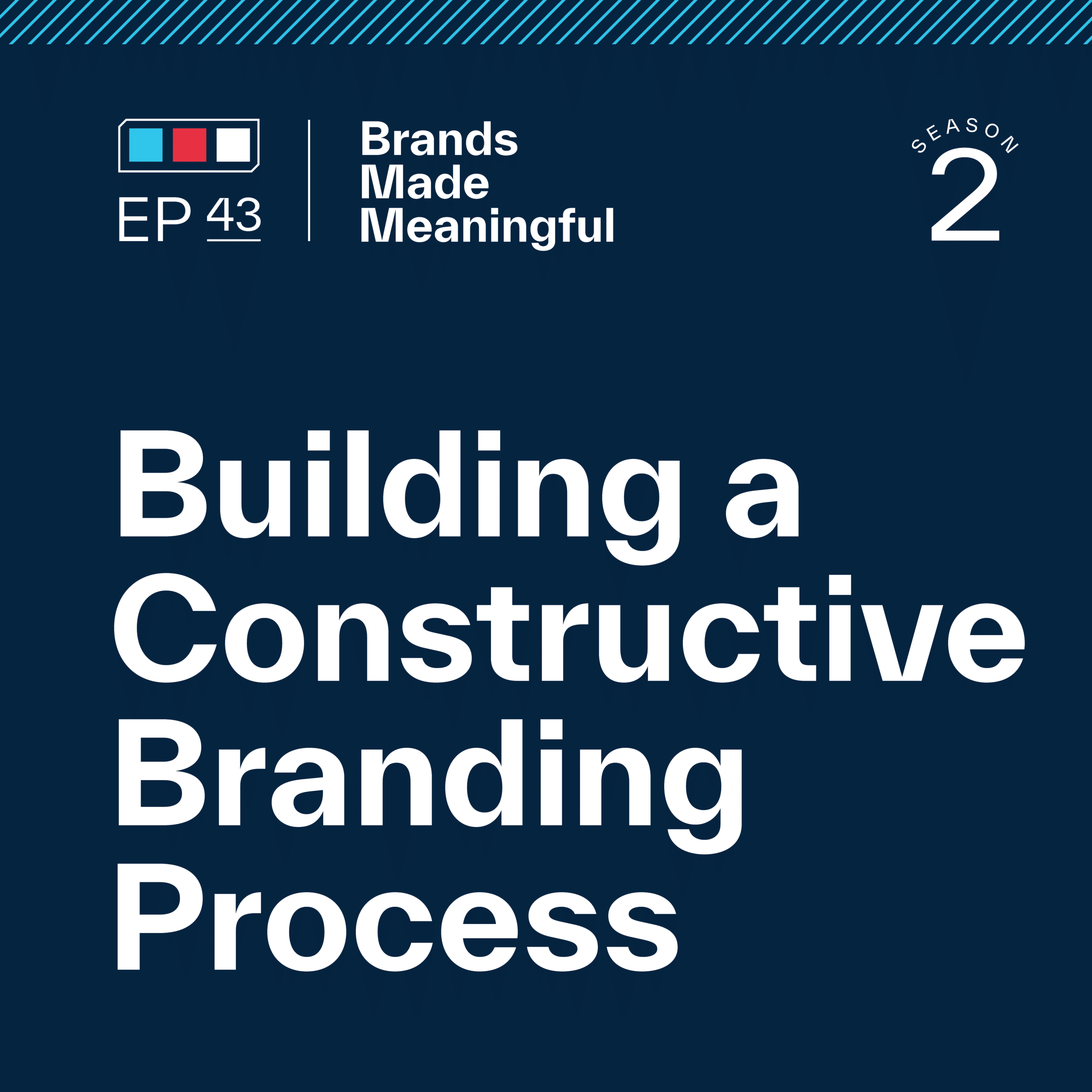
Building a Constructive Branding Process
Episode 43
Derek and Tucker break down the steps required to build the most constructive and meaningful branding process.
EPISODE TRANSCRIPTION
Today we get into the branding process – how we do it with our clients, how we do it internally here, and how we’ve seen great brands we’ve worked with do it for themselves.
Tucker We’ve seen brands we’ve worked with do it for themselves and say, here’s how they build upon their own brand using this constructive rather than destructive process.
Expand Full Transcript
Tucker Derek, thanks for having this conversation with me today. I am really interested in talking about being constructive. This came up from a prospective client meeting that actually happened last week with me where they, and excuse my salty language as I get into this, said, We look like shit, we hate our brand, and we don’t know what we’re doing. And, to me, that was honest. They were being truthful and they were vulnerable.
Derek They were honest and open.
Tucker But it wasn’t constructive. It wasn’t helpful for me. It wasn’t helpful for them. And it probably didn’t make their team feel great about the work that they’ve put in. And so I want today’s conversation to be about how to create a constructive branding process. I want to get into how we do it with our clients, how we do it internally here, and how we’ve seen great brands we’ve worked with do it for themselves and say, here’s how they build upon their own brand using this constructive rather than destructive process.
Derek As a person who went to school for graphic design, we were trained with what they actually call critique. So when you put your work up for review, whether that’s with your classmates, to your instructor, to your internal team, or what we’re putting in front of our clients, inherently, the conversation that then happens is critique, and critique is rooted in criticism. But that’s not necessarily the most productive way to move things forward and get things done. And when you’re self-analyzing, it’s kind of like talking to my kids when they were playing sports and they would be really hard on themselves. And I have buddies that are like this in golf and we talk about positive self-talk and basically flipping the script to become constructive, to look at the same mistakes, to look at the things that you’re frustrated about, but to look at them through a different lens.
Tucker It’s like positive team talk – PTT. In our office, we call this constructive brand feedback, and we use this with our internal things as I had mentioned. We also like to teach our clients a little bit about this as we go through the process. Let’s say we’re putting a new logo in front of them. We want them to provide us with feedback. Their feedback is super, super important for this. But it has to be constructive or else we can’t build upon the work that has been done for them. I’m reminded of when we go through that new business process of discovering someone’s brand, understanding what’s working, and what’s not working, that’s constructive to say what is working. Let’s start there and then maybe about what’s not working or how we can improve those things to build upon what’s already there – this constructive mindset.
Derek It’s completely a mindset. It’s flipping it from focusing on the problem to focusing on the opportunity. It’s a forward-thinking way to approach it. Of course, we talk about what’s not working, so we do look back and we can be critical. That’s okay. It’s okay to be critical and talk about what’s not working because that’s what helps us understand where we can go. It’s just making sure that somewhere along the way we’re pivoting and/or helping the client shift that mindset if they are in a destructive mindset.
Tucker So why do we do this? And I get into our core belief of what a brand is. It’s this living, breathing, evolving asset for a company or an organization. It’s something that we think needs to be built upon rather than torn down. There are some people out there who, if I use the analogy of a house – I know we love to use house construction analogies because it connects with a lot of people – but we use this analogy of wallpaper versus building the house. So we don’t view branding as just taking down wallpaper to put new wallpaper up.
Derek Making cosmetic changes.
Tucker Not at all.
Derek A fresh coat of paint.
Tucker And we would rather look at it in the sense of you having a house and there are probably amazing things about that house. How can we accentuate those things? How can we focus on those things? And then how can we also improve the things that we feel just aren’t the best? Like maybe you need a new deck or something like that. Okay, we can focus on those things. But if you think about it as, Well, we need something new – let’s tear the whole house down and then let’s rebuild a new house, it’s really hard for you to build something meaningful and long-term focused with that because you’ll end up spending so much time tearing it down to build something new that you won’t be able to take advantage of the opportunities.
Derek And without understanding what the objectives of building something new are. What are you actually trying to do? What’s changed to where the brand or the house doing its purpose and achieving what it needed to do at that time that’s no longer working now? Your family grew. You moved out. Even if you do have to tear it all the way down to the foundation, usually the majority of that foundation can be salvaged and built back upon.
Tucker So if we put it back in the branding sense of your brand’s image, your brand’s message, your brand’s strategies that you put together, those need to adapt over time. And when we’re not being constructive with the way that we do those, like when we’re talking about brand building or brand development processes, if those aren’t constructive, then we risk moving backward over time versus building forwards and always making it better.
Derek When we were talking about today’s conversation ahead of time, part of what sparked this was us stepping back and looking at the dialog that happens in any branding initiative. The dialog between us and a prospective client, the dialog of that client internally with their team when we observe how they discuss this with each other, and even internally how we talk to each other, from strategy to design, creative direction, process, etc., there’s a lot of dialog that’s going on and communication all the time throughout all of this to help this project and us kind of stepping back and going, What are the parts of this that would make all of this work better? And I think that’s partly how I got to where we’re talking today.
Tucker And focusing on the very, very first comment I had about how some people say these things, how some leaders say these things without understanding how it affects their team. People put a lot of work into building that brand. We have worked with brands that have teams of dozens of people that work on building it. And if they turn around and say they’re just no good at this or they did this and it’s just it sucks, then that can put them in a place where they think that they aren’t good at their job or obviously haven’t done enough here. That could be them. It also is probably your process. There’s a little bit of, how do you help them? How you enable them to do great things is by building more of a constructive process.
Derek We’re not trying to get all soft and mushy and say when you have a point to make, don’t make the point, beat around, soften it up, and make it more palatable. That’s a leadership training conversation. However, if a brand is a living thing, and the human beings that are working on your brand are working on it, and they’re living things, there are ways to go about the behind-the-scenes pieces of this that kind of rally everybody and get everybody excited about working on this.
Tucker What you said is really interesting. Does this is I mean I have to walk around really soft like eggshells? No, not at all. Actually, I think it’s the opposite. If you think you have to do that, then that means that your feedback currently probably isn’t constructive. Being constructive is being actionable versus being passive. And being destructive means I don’t like that, period. Okay. Well, what do we do with that information? I can’t move you forward unless you give me something like that. So let’s get down to the red flags here. So what are some of the symptoms? If the problem is that you don’t have a constructive process within your brand building or brand development, what are some things that really show us those symptoms to say, Wow, that’s happening to me? Maybe my process isn’t as constructive as it could be.
Derek I think one of the things we observe is, in that scenario, there’s oftentimes a lack of motivation to try something new. There’s a lack of me wanting to be brave enough to do something that’s innovative, fresh, or new because I’m maybe afraid of the feedback that I’m going to get or how somebody may or may not be open to it. And it might just be easy for me to just stay with what we have, which maybe isn’t great, but it’s better than putting myself out there and getting torn down.
Tucker You lack the freedom to make mistakes, and if you don’t feel like you can make a mistake, then that’s a problem. Some of the greatest things can happen when you feel like you can maybe do anything and it might work and it might not. But you’re not afraid of that.
Derek Then the creative team can often feel like they’re throwing darts or spinning their wheels or whatever that creative metaphor is. When somebody puts something in front of you, the worst feedback, I’m jumping right to the end, the worst feedback you can give somebody is, I don’t like that. That is a 100% subjective, non-constructive comment. Skip to the why or why it’s not working or why it doesn’t meet objectives. So if I show you something and you say I don’t like that, but I don’t know why, then I’m going right to spinning my wheels and the throwing darts analogy.
Tucker The best symptom for this is if you’re on round eight, round ten, a dozen rounds of revision, whether that’s internal or with a client or something like that, that means that the feedback isn’t being constructive because you guys are just throwing darts, you guys are not understanding what’s the problem. But maybe the person giving you feedback probably doesn’t understand the problem either. And that could be a problem itself. The next one – misaligning with brand values. So we get this comment a lot. They say we’ve remade ourselves so many times that we don’t know who we are anymore. That’s a problem. That means you have a misalignment with brand values. That probably means that you are tearing things down too often rather than building upon them over time.
Derek Or there’s something that’s getting in the way of those values that you have identified and established, and you’re not acting on them. You’re not living your brand.
Tucker Or you don’t even know what that means. The next one is flexibility. We have people who come to us and say they don’t resonate with their target audience anymore, or maybe they don’t even resonate with their employees anymore. And that’s probably because of a lack of flexibility. You’re not able to adapt to the changes that are needed, and that’s most likely because your process doesn’t allow you to build upon something and then shift when needed. It just builds upon what you currently know and that’s all you can do.
Derek On one hand, it could not be changing to what we see or what you see as what your customer preferences are with respect to your brand and your services. It could also be overreacting to their preferences and getting into that state where you are doing things based on somebody else’s preference versus based on a strategic purpose that you’ve identified.
Tucker Another symptom of not having a constructive brand process is missed opportunities. We have clients come to us who say their initiatives just don’t get off the ground like they should. This goes back to spinning wheels. This goes back to a lot of things. But it also goes back to them not understanding or having the confidence to say this is what we’re doing and here’s why. That can be a challenge for a lot of internal teams to feel like they’re doing this, they’re doing it right, and they feel empowered to get it done.
Derek I think that’s spot on. I think that happens in more of the conversations that we have with prospective customers than I would have thought. I would have lost that bet. That’s a pretty prevalent one that happens, which is also prevalent in the next one, which is nothing’s changed around here in the last ten, 12, 15 years. Everything feels the same and not in a good way. It feels stagnant.
Tucker Stale is maybe a good way of thinking about it. When people say they need to refresh their brand, they’re most likely thinking about it like this. And it’s probably because year after year, month after month, you’re not building upon your brand. So it feels stale because it was built once, it was left alone for ten or 15 years, and it needs to be rebuilt again. And that’s not a good process to have in the modern day of what a brand needs to be, what it needs to grow, all those types of things.
Derek I just want to reiterate. This isn’t necessarily about the communication channels within an organization. This is about a mindset. If there was one thing that we would love somebody to take away from today, it’s mindset. But maybe you do need to reconsider your processes, and the steps, who’s communicating with whom, and in what way. But I think more than anything, it’s just flipping that mindset to be thinking about this in just a little bit of a different approach.
Tucker Or sharing that mindset with someone on your team. There’s probably someone listening to this and thinking about someone on their team going, If he just had this mindset, that would make a big difference in getting some of these things done that we want to get done. And that’s okay to say that some people need to be shared. Some people need to be trained in this. This is not a natural thing for people. The gut reaction for a lot of people is, I don’t like it, period. And that’s okay, but that’s not helpful. So that’s what we’re trying to get at here.
Derek If we shift into some ways that can help people who feel like they’re running into this, the first one that I would start off with is the emotional one. As you shift to this mindset, one of the most helpful things I found is to just take a minute and see things through each other’s point of view. So when that person’s feedback says I don’t like it, maybe there’s a reason why they’re reacting that way. Maybe they just don’t know that that’s not helpful feedback to you. And for the person that says, I don’t like that, and then you see the frustration come out of the colleague that you’re talking to or the creative partner that you’re talking to, understand that when you say that, you’re not giving them any action or helpful insight in any way. So to see this communication channel or this mindset through each other’s point of view, I think is a great first step.
Tucker There are clear trigger points too. When someone’s super frustrated, especially within a creative process, it’s most likely communication. That’s probably the problem. There could be just a difference in what they view as the objective and we’ll get into that. I walked around our office and asked people, What are the best ways we can solve this problem for other people? If we were going to go into someone’s office and say, How can you create a constructive, creative process for your team? What would we do? They’re kind of in steps but there’s ten of them that kind of came out of this. There are ten things you could start thinking about, and I’ll run through them really quickly, but just don’t let me get too far down that road. The first one was to assess the current practices. There are a lot of people who want to change something without understanding how they’re doing it today. It might be easy for you to look at the way that you do your workflows, the way that you have your processes currently, and then look at it and say, Oh, well, right here is the problem because we’re not talking about it at this point or something like that. You’d be surprised how you can find something if you just take a step back for a second and look at the way you do things.
Derek One of the core tenets of any organizational operating system, like EOS, for example, is process. If you don’t have clearly defined and repeatable processes, that is going to be a problem for your workflow.
Tucker The second one is to establish clear objectives. So before you go too far in a project, make sure you understand the goals for the project and also include what you want to get out of it from a brand perspective, short term and long term. We want to do this. Here’s the way it’s going to impact us in the short term. Here’s the way it’s going to impact us in the long term. Understanding those things can at least put you a little bit at ease to say we’re doing this and we might not see results in six months, and that’s okay.
Derek This seems like such a rudimentary thing that you have to tell somebody. Start with a plan. Why are you doing this? But I think we tend to take it for granted. And some of those whys may be personal. It might be a personal reason why we’re working through this initiative. But to just understand that, the question that we like to ask is what does success look like when we get on the other side of this? And I think that can bring some clarity.
Tucker And it can get everybody on the team to understand what the goal is instead of getting 35% of the way through and then people are like, Whoa, whoa, whoa. I thought we were trying to get this done. And someone else was like, No, that’s not it at all. That can be limited by doing it all at the front end because it gets everyone on the same page. Three is to cultivate a feedback culture. So our goal would be for anyone to come into a process and feel comfortable enough to say, Hey, you know what? I thought that this didn’t work because of this. Or maybe I was thinking about this and I think this other idea would be great. If we don’t have a feedback culture within our office, within our team, within our client relationships, it’s going to make it really hard for people to share their thoughts, share their ideas, without feeling like they’re risking anything. We’ve had client relationships before where it feels like there are people on the other team who were presenting something but holding back because they don’t want to risk the current status of their job and saying, Well, I don’t want to sound stupid.
Derek This is a big one. It’s hard to glaze over this in a couple of seconds because this is people. If process is one of the core tenants, people is the other one. The goal within your people is to develop a culture of trust where you trust each other, and where you feel safe. And if you haven’t brought and built your team on a like-minded set of values, it’s going to be very challenging for you to develop a scenario where people feel safe enough, which is where they will do their best work.
Tucker If you have ever heard the saying, no bad ideas, that’s exactly how I think of this. You come to a table in a room and say, Here’s the project we’re doing, and it’s a no-bad-ideas atmosphere where someone’s throwing out something like, Well, maybe that would work, we would have to figure this out. It’s not, how about this and someone goes, No, that’s stupid. And then they just keep moving forward. That’s a huge difference. And it’s going to be kind of this competitive asset for teams, especially in a creative space, to be able to do that.
Derek There’s a great book by Patrick Lencioni called The Five Dysfunctions of a Team. Or it could be one of his other books. They’re all fantastic. But that would be a great read for somebody who’s running into these challenges inside their walls to figure out some helpful ways to get back to that because there can be tension. But there can be healthy tension and there can be discourse and what might look like even an argument from an outsider’s perspective. But those two people who are arguing are arguing for the right reasons because they’re both trying to advance this and they’re doing it with respect for each other.
Tucker Being constructive doesn’t mean stepping on it or walking on eggshells.
Derek It’s not always butterflies and rainbows either.
Tucker It could be if you do it right. The next one is to provide brand training. Maybe not brand training, but providing feedback training is really big. When someone, especially who may be new on your team, is like, Hey, by the way, we do these projects like this, Here’s how we would like you to provide us feedback. We do this with clients a lot. This is a great way to introduce people into an atmosphere. If the last point was to build an atmosphere of no bad ideas, you might need to train certain people to go into that atmosphere and maintain it.
Derek A great tool for this is just the three-part cadence in that conversation to say what’s working, what’s not working as well as it should be, and what we are going to do next going from here.
Tucker I always like to start with positives. We tell our clients to do that too. Like, Hey, we’re going to show you something. Start with what you like. Because when you start with something that you like, it gets you into the mindset of, Well, I like this, I like this, I like this, I like this. I actually don’t like this small thing, but I was going to lead with that and it made it feel like I didn’t like any of it. The next one is to implement constructive analysis mechanisms, which is just a mouthful. What I mean by this is to create stages within your process to make sure that you are being constructive. Something that we do, as an example, is a mini SWOT analysis for some of these projects. What do we really get at here? What are we not doing very well? What are the opportunities out there that we could potentially take this in? And what do we need to make sure we’re watching out for? That can be a huge benefit to you guys and it can also be a huge benefit to the people that you’re providing feedback to. Say that you’re working with another team within your organization and you say, Hey, this is awesome, thanks for this, here are the things I think it’s doing really well, here’s what I don’t think it’s doing as well, but here’s the opportunity I’m seeing here. By the way, we need to get this done by this time and we only have this many resources left. That’s super simple. It sounds like you said rudimentary. It sounds like obviously, I should say those things to people. But when you’re in the heat of the moment, you don’t think about that. You think about, Okay, I just don’t like this. Change this. Let’s keep going.
Derek We do this inherently. I don’t even know if we are aware or if the team is aware that we do this. But if we’re reviewing the logo example and it’s an in-process creative that we’re getting ready to present to a client, every round that we review internally, a mini SWOT is exactly what we do. It’s awesome. And my favorite is the O, it’s the opportunity. To your previous point, notice how you start with what’s working. You start with strengths. Then you go to the weaknesses. Then you basically finish on what’s the opportunity and what’s getting in the way of us closing this.
Tucker Some smarter psychology person would be able to tell me exactly why that works like that. But it’s a small but powerful thing to do.
Derek We’ll get Dr. April on here to talk about this.
Tucker The next one, which is six, by the way, if anyone’s counting, is document feedback. Like I said earlier, if there are ten rounds of revisions on some project that you might be working on, whether it’s in-house or with an agency, document the feedback. See what you got from one to 2 to 3 to 4 to 5. And if the feedback is completely different every time, that means it’s not constructive. That means it’s just what I’m feeling today. That can be harmful to getting a project over the finish line and can be really harmful to someone’s confidence in the project in general.
Derek This just goes back to not having objectives. You have to have criteria and clear objectives. It’s like when we’re presenting work, our example using this fictitious logo we keep talking about today, we don’t ask the client when we put that in front of them if they like it because they’re already going to like it or not. That’s just inherent in the way that human beings are. But the question is more around if this meets the criteria and lives up to the objectives that we established. We’ll talk about the subjective stuff, but does this meet these objectives? And that is a super helpful guideline, especially when that feedback from around around around is contradictory in some cases.
Tucker It’s important that people like things. I don’t want to glaze over that.
Derek We want them to tattoo that logo on themselves.
Tucker I think it’s very important that you like it, but that is number two on the list of importance. One is if are we solving the problem at hand, and two is if you like it.
Derek I think number two is is our customers like it.
Tucker Either way. Seven is to iterate and improve your process. I think there’s a lot of people who set a process and go, Here’s our process. There’s nothing we can do about it. We here have a five-step process, a high-level, five-step process, for developing a brand. How many times has that process changed in the last three years?
Derek Within each step, it’s been refined lots of times.
Tucker Probably every month.
Derek But the five primary steps, I’m looking at the boards on our wall that have some examples of these, those five steps haven’t changed since we did the work of establishing what they were. But the steps and the substeps we refine as we learn to get better all the time.
Tucker What I’m getting at is it’s important for you to iterate and improve that process. But as you said, we establish the process. We’ll build upon it, we’ll change it, we’ll make it better, we’ll do all these other things. But what we’re not doing is tearing it down every couple of months to put a new process out there and be like, We’re going to develop a new process for doing this.
Derek I know the process was number one and we’re on number seven. But as a part of that, you have to have a process. I don’t care if it’s three steps, one step, or ten steps. You have to have one so that you can do what you do in some sort of repeatable, predictable way. We know most of the time when we get to the third or the fourth step in that process when something’s not working or when we run into a wall of some sort, it’s because something that preceded it in those prior process steps was either missed, overlooked or wasn’t completed.
Tucker Can you have a one-step process?
Derek Bring it back to a baseball analogy like a pre-game routine and probably not a one-step.
Tucker Eight is to celebrate your successes. This is, like you said, rudimentary. Our team loves it when we accomplish something, but we celebrate the accomplishment in a certain way. If we can sit back and go, we did it, here’s what went really well, and this is how we’re going to celebrate it, it’s an awesome thing to do. It gets people excited about moving across the finish line.
Derek Here’s what went well and let’s do more of that. Just like we’re learning from our mistakes, let’s learn from the wins so that we can do more of that next time. High performers, I think, have a problem stopping and celebrating. And so when we say celebrate, we don’t necessarily mean throw a big party or have a happy hour. Celebrating could be just a small moment. But it’s really great for the psyche, for the team, for the culture. One of probably the three most important components of culture is how we celebrate together.
Tucker You don’t like high-fives, but this is like a high-five type level of celebration in my mind. The thing I would say as the best example for this is we do this podcast and when we go back to listen to like the first couple, we’re like, Wow, that is rough. That needs to be figured out. But we’re at what is this, 43 right now? That’s part of the process. When we hit 25, we were like, boom, look at that. 25 done! When we hit 50, it’s like, boom, we hit 50! When we hit 100, it’ll be like, this is great! Those are the little successes to say we’re building upon something rather than being like, This isn’t very good. We need to completely restart. Nine is to seek external input. And when I say external, I mean just someone outside of your team. Bring someone in whether they’re just another person at your company that isn’t part of a certain process or just get someone else’s opinion. Say, Hey, can you just come listen to this for a second or can I get your opinion about the way we’re talking about this? Sometimes when you get a bunch of passionate people in a room, they all are very, very invested in what’s going on. They get blinded by the passion that they have and they can’t just see what we’re doing right now solves the problem. It does it really well and we’re going to move forward with it. Someone externally can really help you do that.
Derek I can’t count how many times we’ve observed or been part of conversations where two people are – arguing it’s too strong of a word – but disagreeing or having a discourse over the right way to do something where they’re actually saying the same thing. But there’s a language barrier, a communication barrier. They’re saying words that somebody else is just interpreting. They’re getting hung up on a word because that word means something different to them. But in the end, it’s for us to say, Well, hang on, here’s what I’m hearing. I’m going to distill what I’m hearing each of you saying into one statement. And it’s interesting how often an uninvested party can provide that clarity.
Tucker The last one is to measure progress. It sounds super easy. Everyone talks about how you need to measure these things and find your KPIs and do, do do, do, do. But I think measuring your progress, just like we’re talking about within our process, is to say we have five process steps. The process that was three years ago is not the same process it is today. It’s been improved by this, this, this. If you measure that progress and kind of look back for a second, you’ll feel like you are building something. That’s great. That gives you more happiness than you think it does.
Derek Fulfillment. Achievement. You spend less time reinventing, which I know is hard for the inventor mindset people in the room. I even think about colleagues of ours who have installed lean processes within their manufacturing facilities and the relief that they’ve realized in the efficiency that’s come out of that. It’s allowed them to focus on doing more of what they do better and less of the steps along the way that are causing the problems.
Tucker I think that if anything you could take away from this is that your brand, the team that you assigned to building that brand, is working with an evolving asset, that thing is never going to be the exact same as it is right now. And that is good. That is exactly what it needs to be. And it needs to be built upon rather than completely reimagined. So it’s not a set-it-and-forget-it come back in ten years and then reset it and then forget it again. It’s how we constantly build upon this over time. That can only happen if you have a constructive process. If your process is about taking what is good, leaving it good, and improving upon the things that could be improved upon, that’s where you’ll find success.
Derek In the industry that we work in, and in this branding and identity space, people use the term rebrand. This company who came to us the other day and said my brand looks like shit, I hate my brand, has a brand. And whether they realize it or not, or maybe they were just kind of overreacting in their own being critical of themselves, there is equity inside that. There is absolutely value and equity that exists. I actually don’t like the term rebrand. Rebrand to me is like throwing everything away and starting all over. It’s an evolution, and evolution may have spikes where you really focus on it every few years. But along the way, because it is growing and living and it’s not stagnant, it’s not just a wall and studs and sheetrock, it’s a brand evolution and your brand should be evolving continuously and forever to help it make your business successful.
Tucker It’s like having a diet or having a workout plan. If I change my diet from paleo to keto to gluten-free, if I switch every month, I will never see progress. But if I stick with something and I work at it and I grow it and I do something about it for a long time, you’ll see the impacts and what you’re supposed to see.
Derek It’s like being in the brand gym. If you work out once a month, you’re going to be sore, upset, and frustrated. But if you workout twice a week, three times a week, whatever, and you’re consistent at it, even at a lower level, you can maintain that health and keep it evolving.
Tucker I hate that analogy because it reminds me that I need to go work out.
Derek And I’m sore because I just worked out for the first time in a while.
Tucker Good for you. All right. Well, thanks for the conversation. Until next time.
Derek Next time. Sussner is a branding firm specializing in helping companies make a meaningful mark, guiding marketing leaders working to make their brand communicate better, stand out, and engage audiences to grow their business. For more, visit Sussner.com.
More Episodes Like This
Reclaiming Reputation Through Brand RevitalizationEpisode 85
Derek and Tucker discuss the potential that a branding initiative can have to restore a club’s reputation.
Branding The Club with Don KovacovichEpisode 84
Don Kovacovich, GM of The Club at Golden Valley, joins Derek & Tucker to discuss the impact that rebranding has had on his club and the opportunity it presents for other clubs
Changing a Club’s Membership ModelEpisode 83
Derek and Tucker discuss key considerations and challenges when changing your club’s membership model.
Connecting a Club with its Story with Jackie CarpenterEpisode 82
Derek and Tucker are joined today by Jackie Carpenter, author of People First.
Branding a Club AnniversaryEpisode 81
Derek and Tucker discuss the unique opportunity presented by milestone and anniversary dates for private clubs.
Private Club Storytelling with Ricky L. Potts, Jr., CCMEpisode 80
Derek and Tucker have the pleasure to speak with Ricky L. Potts Jr. about how powerful storytelling can be for your club members.
Opportunity in Club Facility RenovationEpisode 79
Derek and Tucker discuss pivotal key moments in your legacy and how to transform your story through renovation.
The Evolution of Club Members with Jon LastEpisode 78
Derek and Tucker are joined by Jon Last from Sports & Leisure Research Group to discuss the evolution of club members.
Member Branding vs. Product BrandingEpisode 77
Derek and Tucker discuss the challenges their client's have moved through when approaching differing styles of branding.
The Role of a Private Club's LogoEpisode 76
Derek and Tucker take a look back on private club logos they've designed over the years and explain the strategic reasons behind their choices.
Club Brand GovernanceEpisode 75
Derek and Tucker divulge the steps to evolving your brand while retaining your core values.
Seasonal Member MerchandiseEpisode 74
Derek and Tucker take a look at crafting specific merch to celebrate landmarks and special times of the year.
Who is Sussner?Episode 73
Derek and Tucker take a break from talking shop to talk about who they are and what they stand for.
Club Identities Beyond AmenitiesEpisode 72
Derek and Tucker discuss what it takes to stand out in unique ways for your club.
Little Things Mean EverythingEpisode 71
Derek and Tucker take a look at the often missed and easy to overlook.
Build Flexible Brand SystemsEpisode 70
Derek and Tucker break down the building blocks for long lasting branding.
The Club at Golden ValleyEpisode 69
Derek and Tucker take a close look at one of their recent rebrands.
When to Launch a Club RebrandEpisode 68
Derek and Tucker break down how to find the perfect timing when launching a club rebrand.
Steps to Launching a Club RebrandEpisode 67
Derek and Tucker break down the steps to take and the reasons why you should consider a club rebranding.
Brand Marketing vs. Brand DesignEpisode 66
Derek and Tucker define the line between marketing and design and how they intersect to inform one another.
Building Brand GuidelinesEpisode 65
Derek and Tucker show us how to build infrastructure guidelines to unify your brand experience across the board.
Club Identity SystemsEpisode 64
Derek and Tucker cover what Identity Systems entail and how to discern between internal and external methodologies.
Navigating Branding With a BoardEpisode 63
Derek and Tucker bring clarity to uniting your company under one cohesive vision.
Putting a Committee TogetherEpisode 62
Derek and Tucker assemble your need-to-know facts when putting together your committee.
The Guiding Principles of Private ClubsEpisode 61
Derek and Tucker go over the top ways private clubs can find the balance between pleasing old members while attracting new ones, all while making moves towards the future.
How Color Affects PerceptionEpisode 60
Derek and Tucker cover how to best convey your business with color.
Brand EcosystemsEpisode 59
Derek and Tucker break down how to craft effortless experiences when considering your brand as a whole.
6 Types of Brand TransformationEpisode 58
Derek and Tucker dive into 6 distinct types of transformations for a wide range of brands.
Tournament Branding For ClubsEpisode 57
Derek and Tucker discuss designing and delighting your club members with tailored events.
Brand Promoters & DetractorsEpisode 56
Derek and Tucker discuss how high level promoters increase your NPS and how to turn the tides on your detractors.
The Loudest Voices in the RoomEpisode 55
Derek and Tucker talk about gathering feedback while prioritizing every voice.
Determining A Primary AudienceEpisode 54
Derek and Tucker discuss if and when you should be honing in on your audience vs. casting as wide a net as possible.
Branding For ExclusivityEpisode 53
Derek and Tucker discuss the intricate process of naming your brand.
Measuring Brand SuccessEpisode 52
Derek and Tucker discuss how we measure our success in branding and a few key KPIs that help us understand our impact.
Branding For ExclusivityEpisode 51
Derek and Tucker breakdown how brands can create the perception that they are exclusive and only for a certain type of consumer.
What Makes A Brand SurprisingEpisode 50
Derek and Tucker break down the Sussner formula that we believe leads to a surprising brand.
Breathe Life Into Brand TraditionEpisode 49
Derek and Tucker discuss the intricacies and common pitfalls of branding for Private Golf Clubs.
They Key of Visual DifferentiationEpisode 48
Derek and Tucker break down the importance of differentiating your brand on a visual level.
Branding For Private GolfEpisode 47
Derek and Tucker discuss the intricacies and common pitfalls of branding for Private Golf Clubs.
Dealing With An Identity CrisisEpisode 46
Derek and Tucker breakdown how to identify and remedy a brand's identity crisis throughout thoughtful and intentional brand management.
Branding vs MarketingEpisode 45
Derek and Tucker discuss the differences between Branding and Marketing and how to make the two compliment each other.
Build Your Brand's FoundationEpisode 44
A brand's foundation is a critical element in being successful in the long-term.
Building a Constructive Branding ProcessEpisode 43
Derek and Tucker break down the steps required to build the most constructive and meaningful branding process.
What Makes a Brand Relevant?Episode 42
Relevance is a key piece of a brand's identity for creating clarity and connection.
Your Right to WinEpisode 41
Derek and Tucker discuss the “Right to Win” and the odds of your brand's success within your target market.
An Intro to Sub BrandingEpisode 40
Derek and Tucker discuss the nuances of developing sub-branding and strategies.
Conquer Branding FearsEpisode 39
Derek and Tucker dive into how to overcome the fear of change and the nature of constant refinement of your brand.
Balancing Strategy & DesignEpisode 38
Great strategy is a necessary foundation for great design—and great design brings great strategy to life.
Branding PrioritiesEpisode 37
Branding priorities are the actions and initiatives that shape or enhance a brand's identity, perception, and market position.
Invest in Your BrandEpisode 36
Investing in your brand benefits your company as a competitor in the marketplace, builds trust with customers, increases perception of quality, and drives employee engagement.
Why is Positioning Scary?Episode 35
Narrowing the brand's position is really a strategic decision to focus the brand's offerings, messaging and target audience on a specific niche or segment within the market.
What Are Brand Consultants?Episode 34
Derek and Tucker discuss the importance of hiring expertise with a wider breadth of knowledge than just visuals.
Hire for Brand FitEpisode 33
Hiring people that fit your brand is key in order to maintain brand authenticity, positive culture, and consistent messaging.
Your Brand’s Stance MattersEpisode 32
Your stance can help define your brand from a core level and make branding, hiring, and marketing not only easier, but more meaningful.
Levels of Executing a Brand RefreshEpisode 31
If you have a brand strategy in place, how do you execute it?
The Role of Features & BenefitsEpisode 30
Derek and Tucker discuss the importance of features and benefits within the context of branding, selling, and marketing your products and services.
Should You Listen To or Lead Your Customers?Episode 29
Within the challenge of any rebrand is the challenge of managing customers' perception of change.
Managing a Brand TransformationEpisode 28
Episode 28 discusses the highlights and challenges of rolling out a new brand, both internally and externally.
Living Your BrandEpisode 27
Your brand is not this shiny trophy on the shelf. It is something that you are molding every single day.
What Makes a Brand Authentic?Episode 26
Season 2 starts off with a discussion about building authentic brand experiences, both internally and externally.
Reviewing your Competition's CreativeEpisode 25
Derek and Tucker discuss the process of reviewing your competitors' creative strategy to better position your brand within the market.
Interviewing your Audience for InsightsEpisode 24
This episode details the process and benefits of interviewing your audience as part of the branding process.
Assumption ReversalEpisode 23
Derek and Tucker discuss how we change our thoughts and get into a different mindset to refine and revise our branding.
Developing vs. Amplifying a BrandEpisode 22
Another way to say it is, development is building and crafting your brand story, and amplification is then telling it.
Refreshing a Sporting Goods BrandEpisode 21
This episode shares the steps behind Sussner’s work in refining the Shock Doctor brand.
Defining PerceptionEpisode 20
Derek and Tucker discuss the positive and negative impacts of brand perception.
What is a Brand?Episode 19
Derek and Tucker discuss what defines a brand and what makes them successful.
Branding Golf Courses vs Golf ClubsEpisode 18
Derek and Tucker further hone in on golf course design.
Refreshing a Golf CourseEpisode 17
Derek and Tucker discuss the bar for golf course design – and how to push past it.
Let’s Talk Taglines Episode 16
Derek and Tucker talk taglines in today's episode.
Refreshing an Athletic DepartmentEpisode 15
Derek and Tucker sit down today to discuss what logos mean within branding.
Branding a Club Episode 14
Derek and Tucker discuss how to brainstorm branding a club.
An Intro to Internal Branding Episode 13
Derek and Tucker discuss the power behind internal branding.
The Value of Stereotyping Episode 12
Derek and Tucker sit down today to discuss the meaning of stereotyping within the branding world.
We’re on a Mission Episode 11
This episode digs into the rallying cry for the greatness your team is going to accomplish.
Aren’t Brands Just Logos? Episode 10
Derek and Tucker sit down today to discuss what logos mean within branding.
The Business You Are Really In Episode 09
Derek and Tucker sit down today to discuss how to discover what business you are really in to better understand your mission statement.
Clarity of Vision Episode 08
Derek and Tucker discuss the importance of looking ahead towards the big picture to better hone the purpose behind what we do in the now.
Branding B-2-B Environments Episode 07
Derek and Tucker discuss the Branding of Spaces.
It’s All in the Name Episode 06
Derek and Tucker discuss what a name can say - and not - about your company.
Delving Into Branding Data Episode 05
Derek and Tucker jump into the discovery phase of branding before it hits the drawing board.
Content Made Meaningful Episode 04
Today Derek and Tucker discuss the concepts within content and its common misconceptions such as the phrase "Content is King."
Brand Story vs. Brand Messaging Episode 03
Your story matters.
Visuals That Take The Cake Episode 02
Derek and Tucker sit down to discuss visual impact and what that could mean for your brand.
Are You Different or Distinct? Episode 01
It's not about being the only option, it's about being the right option. Join Derek and Tucker as they discuss Differentiation & Distinction.



